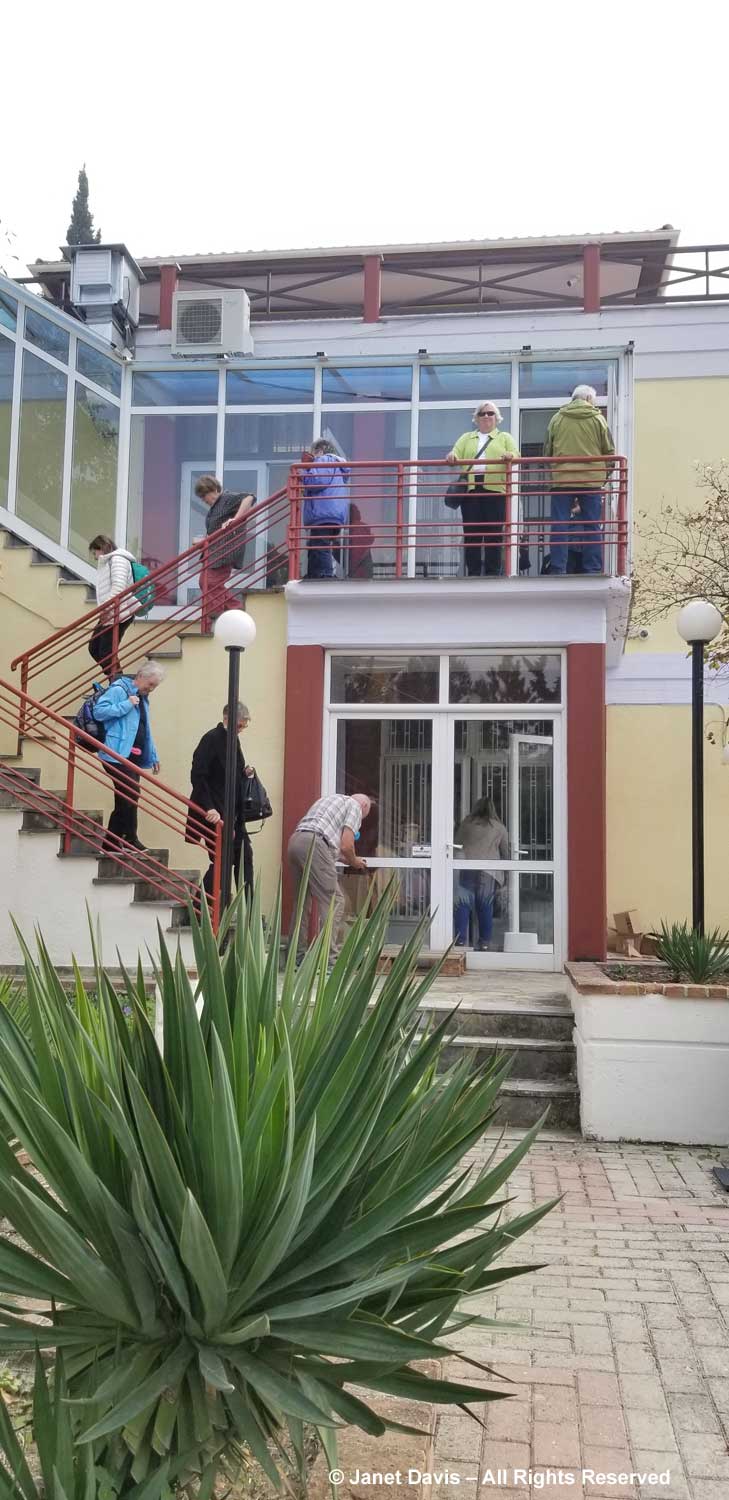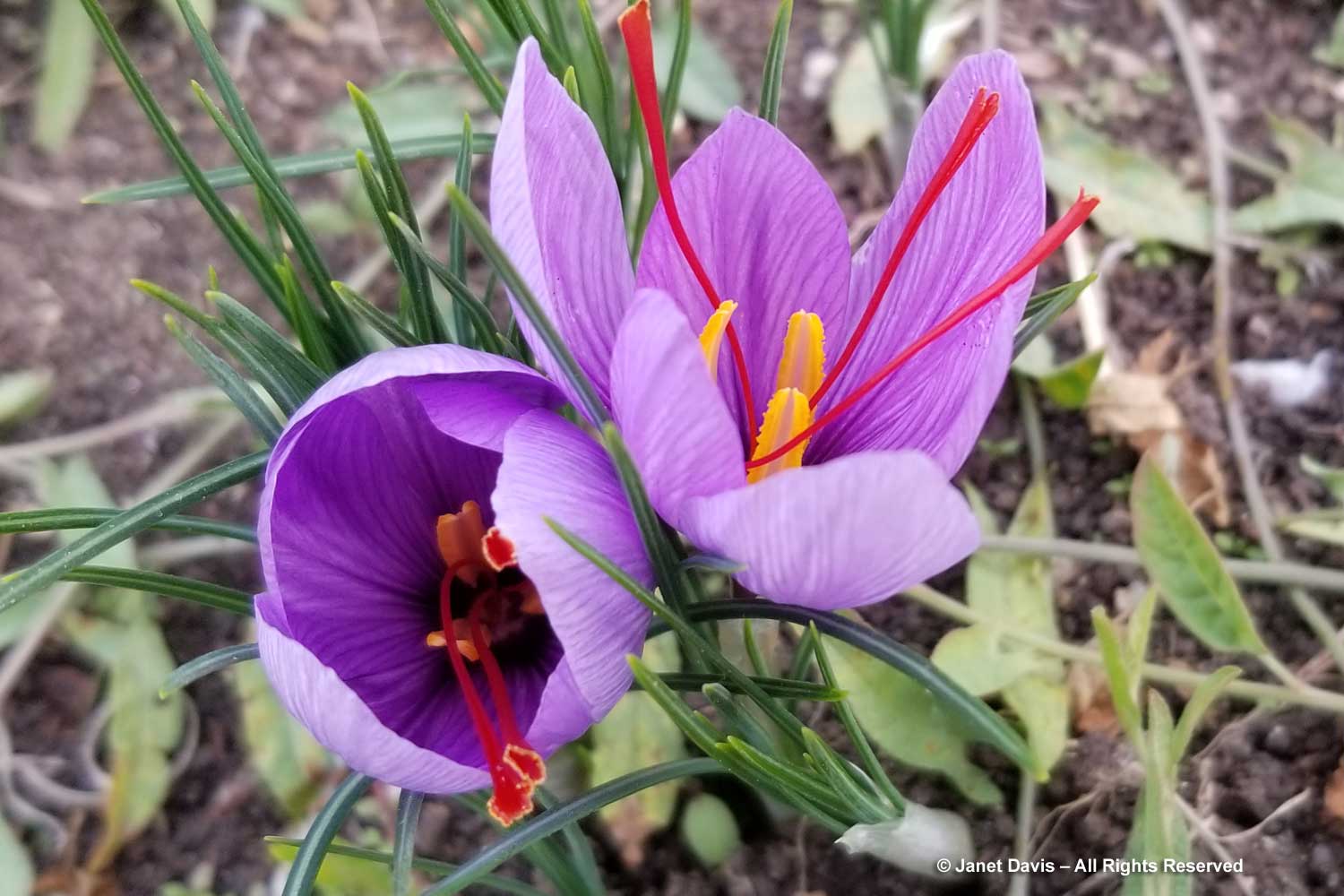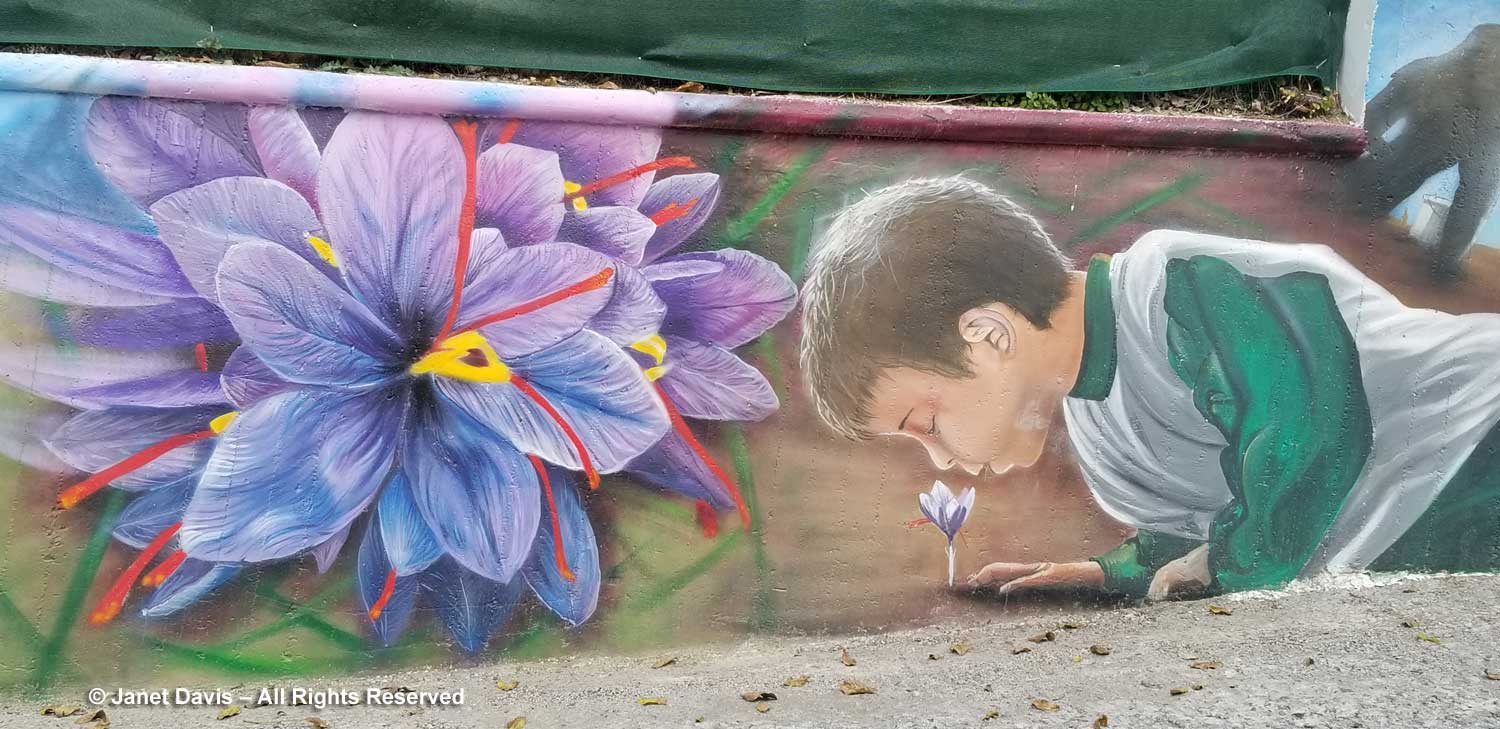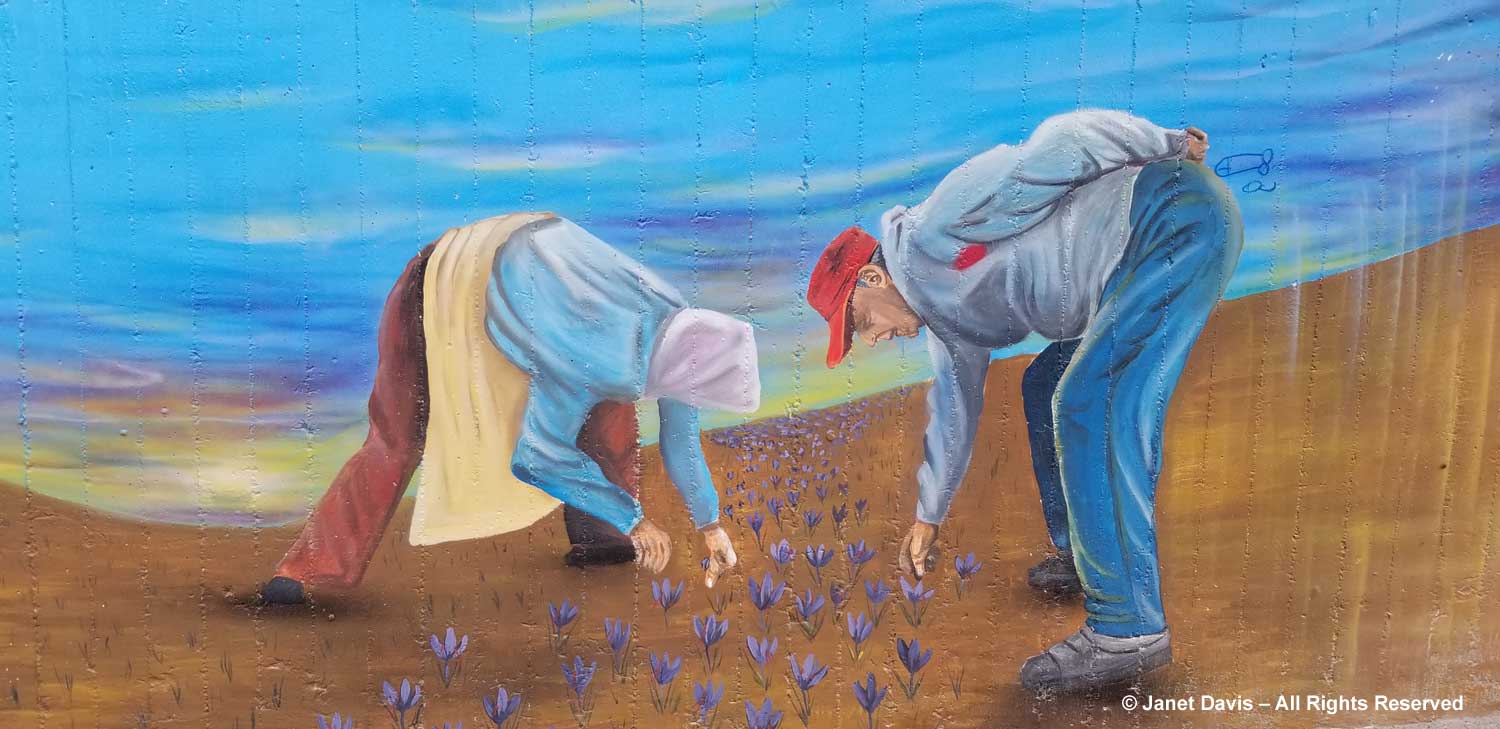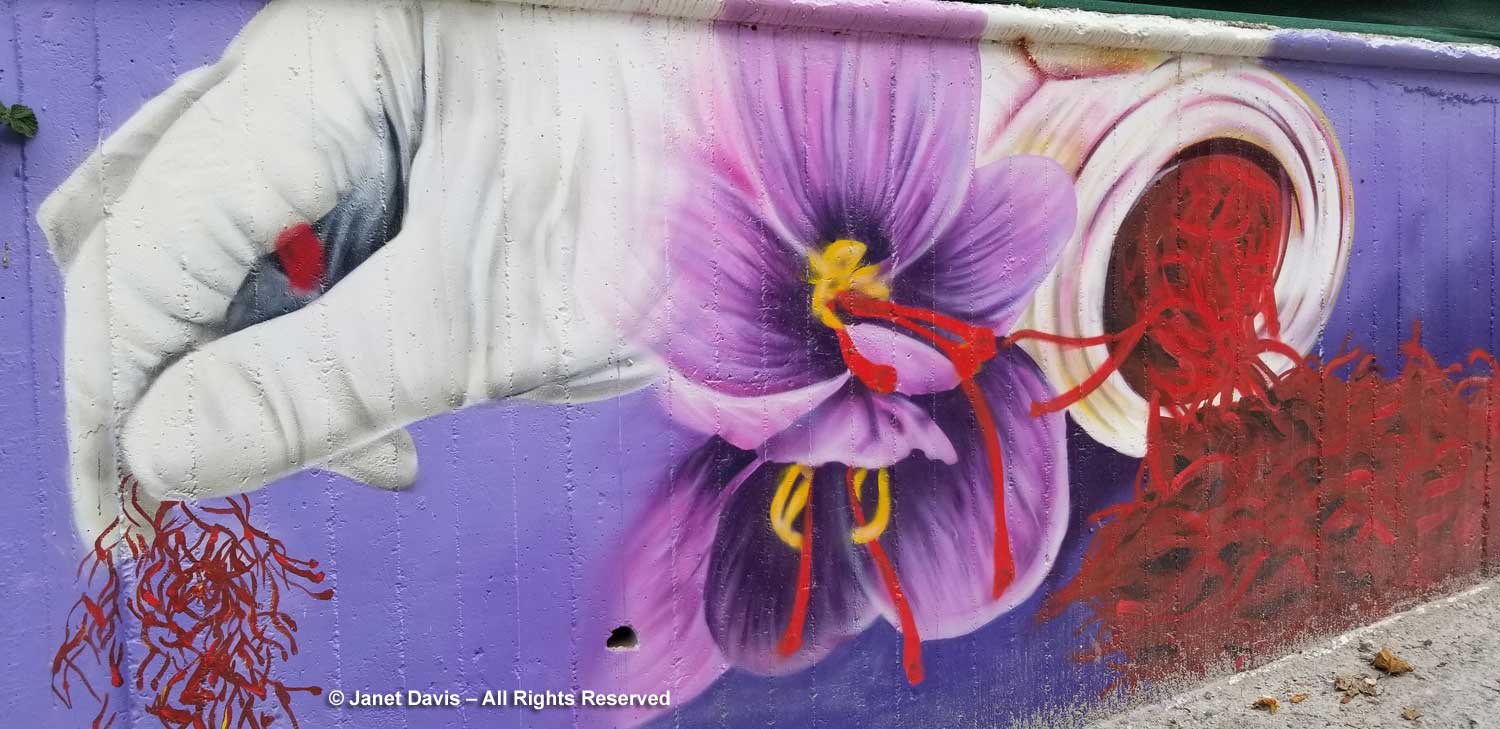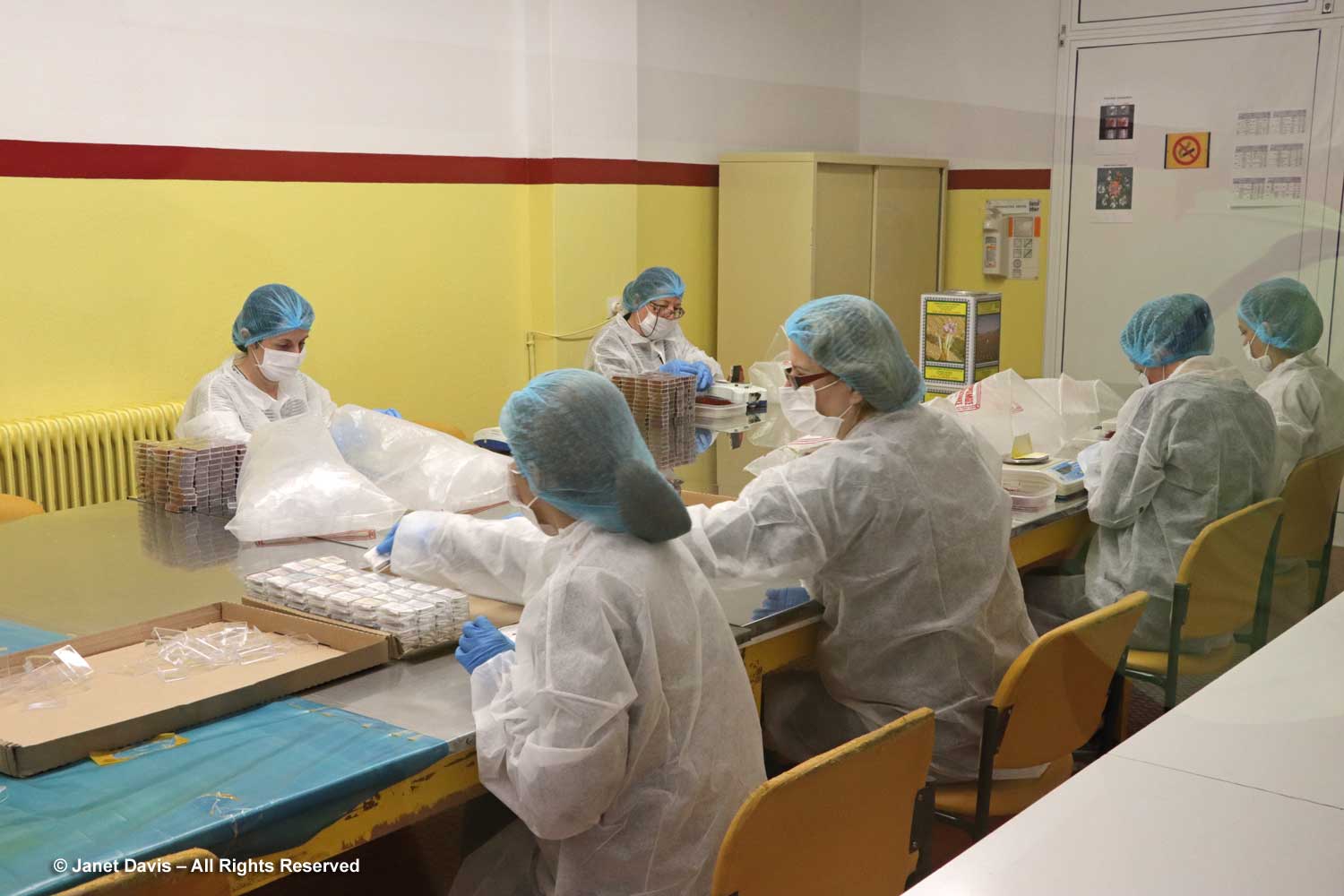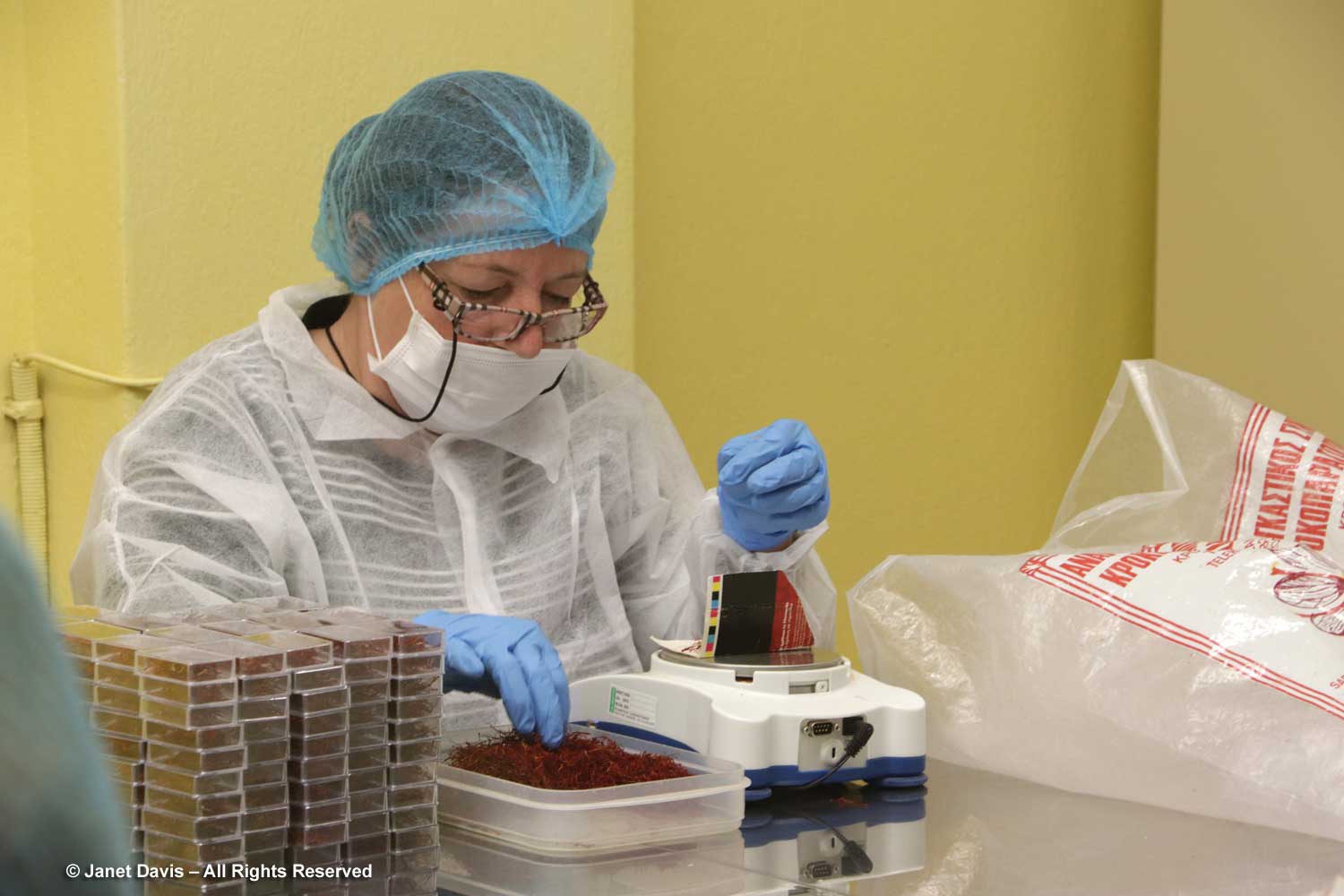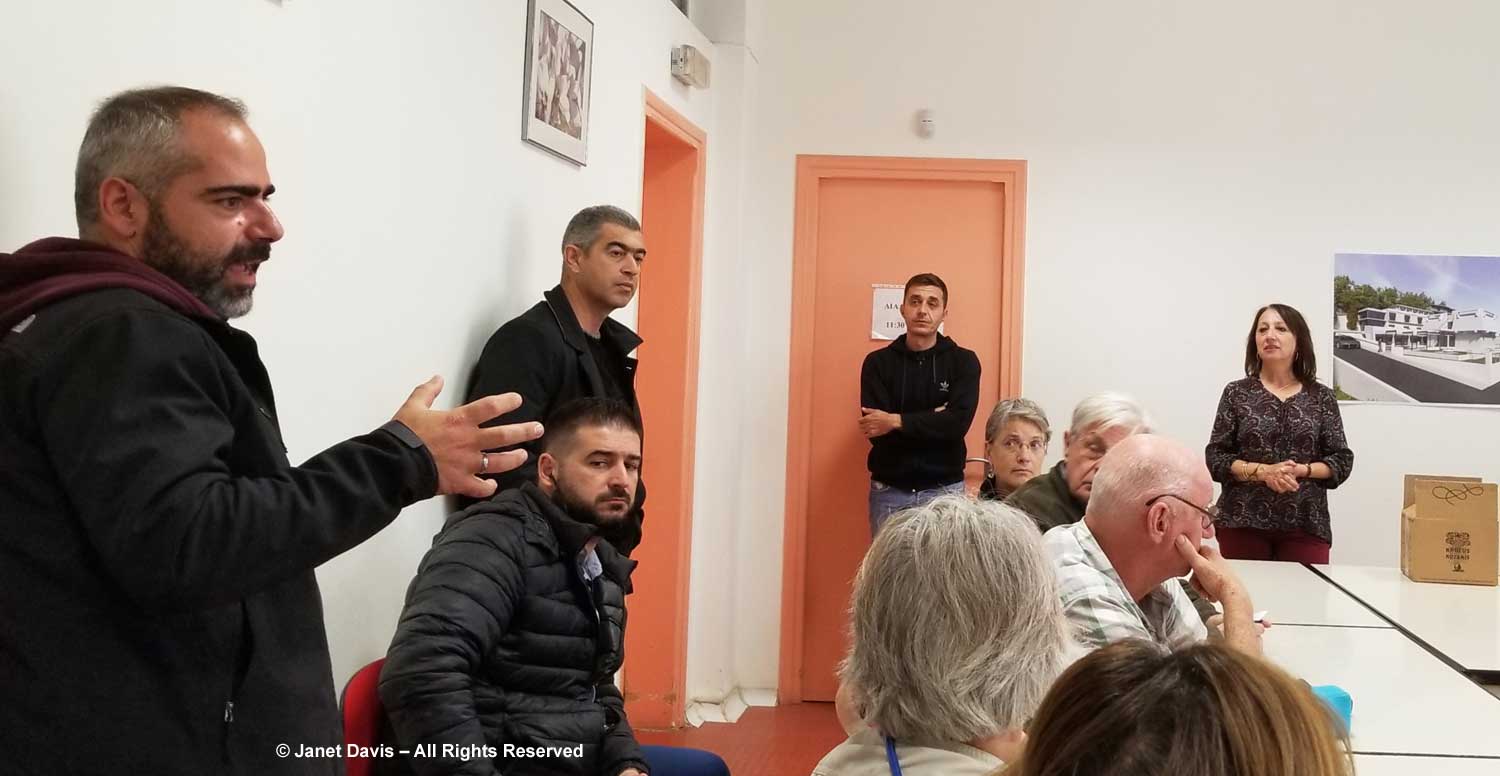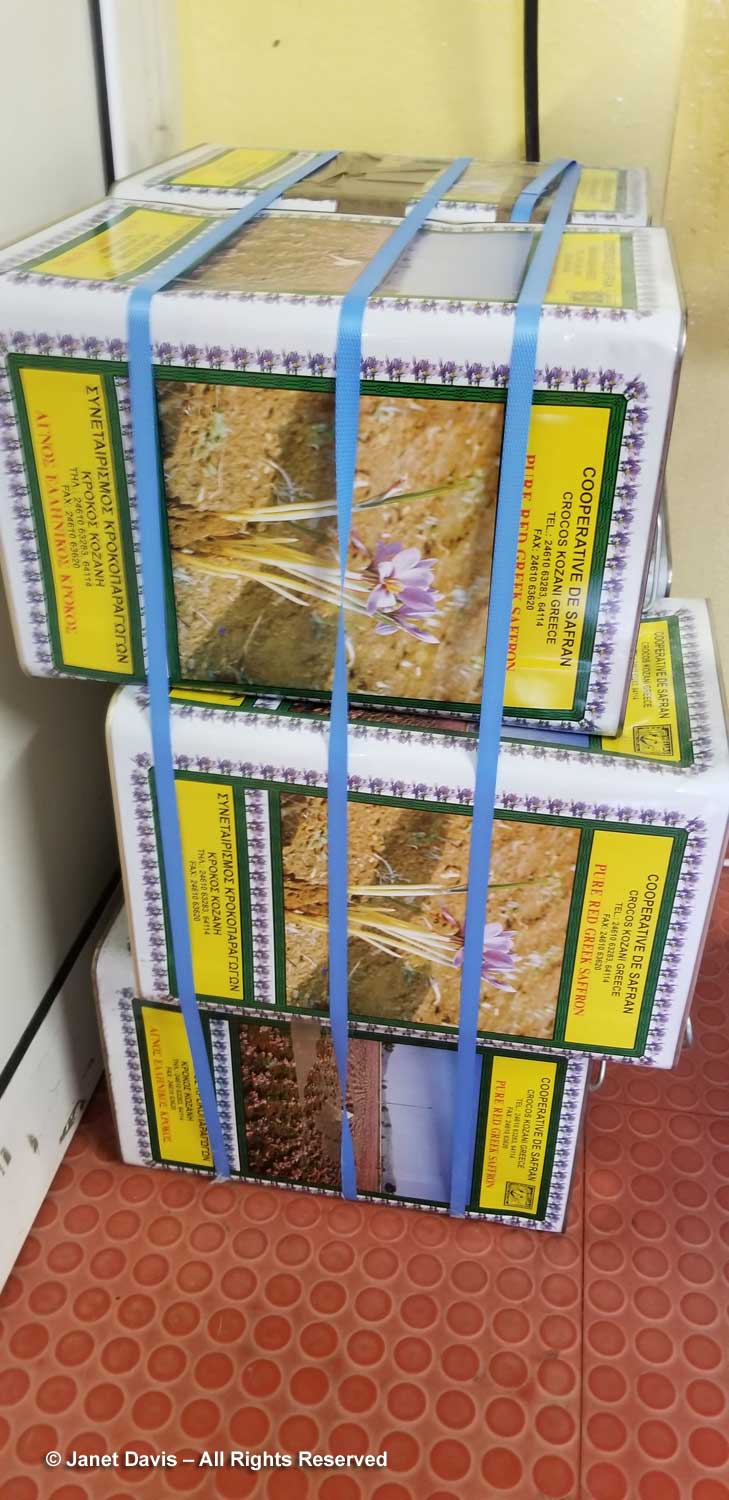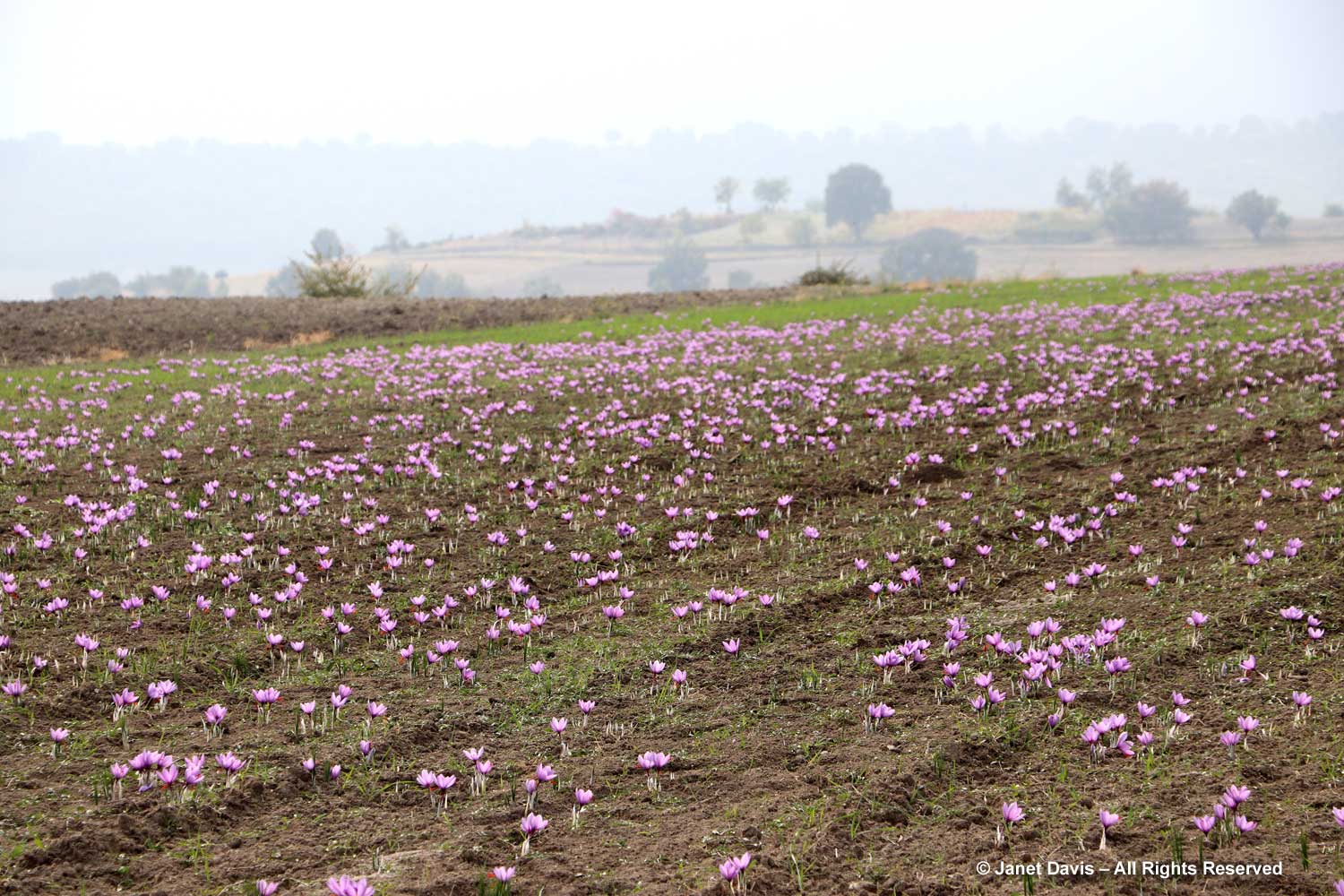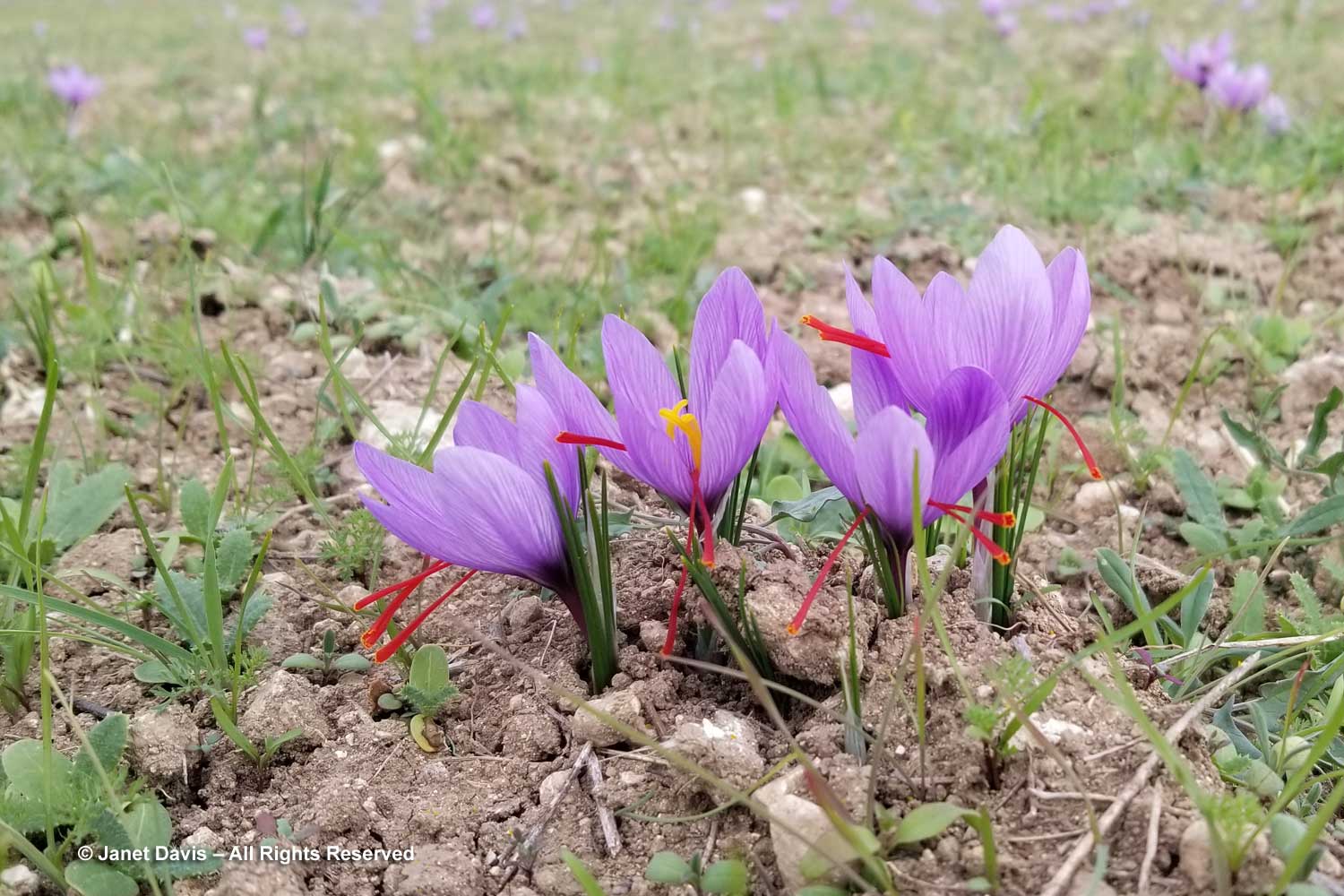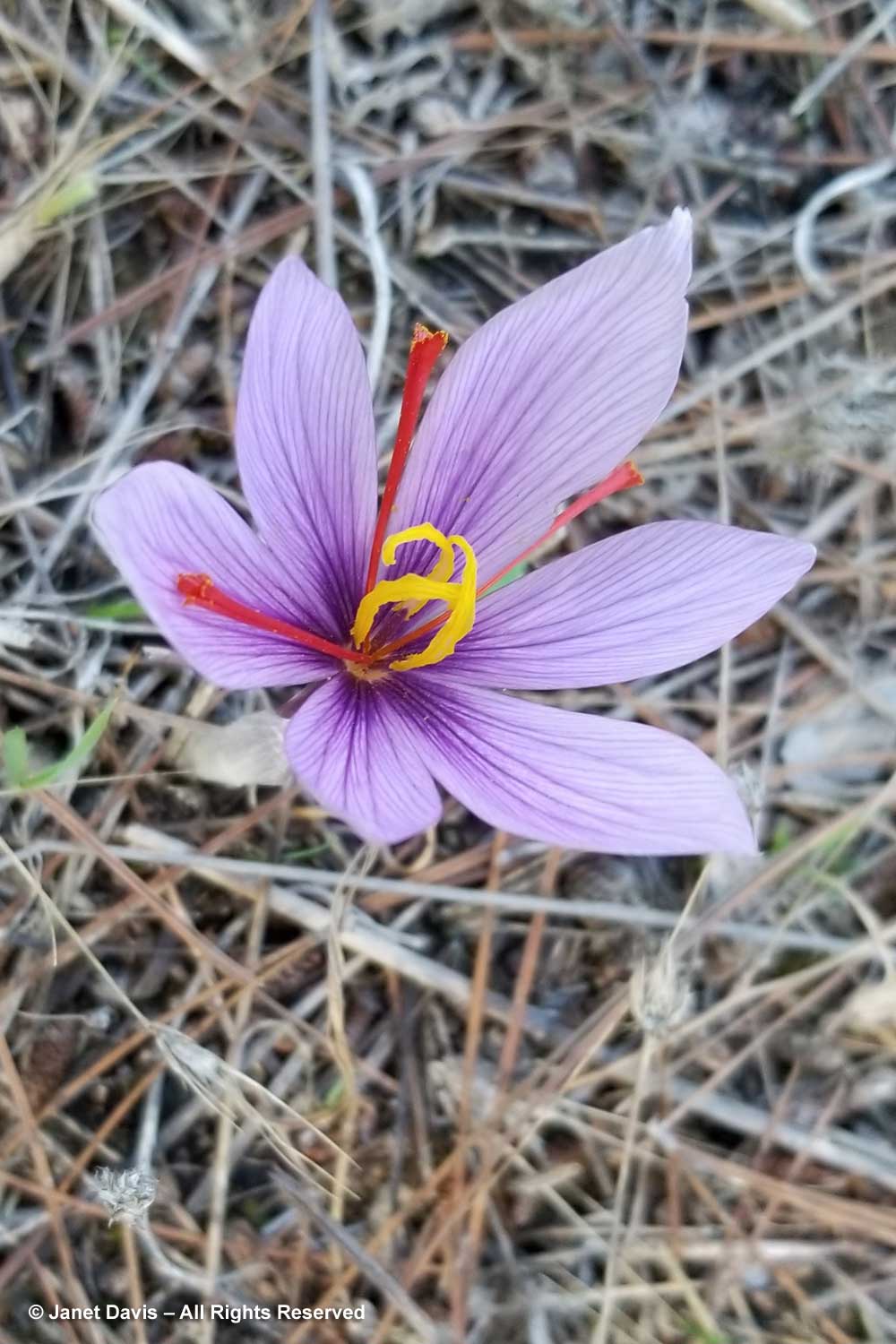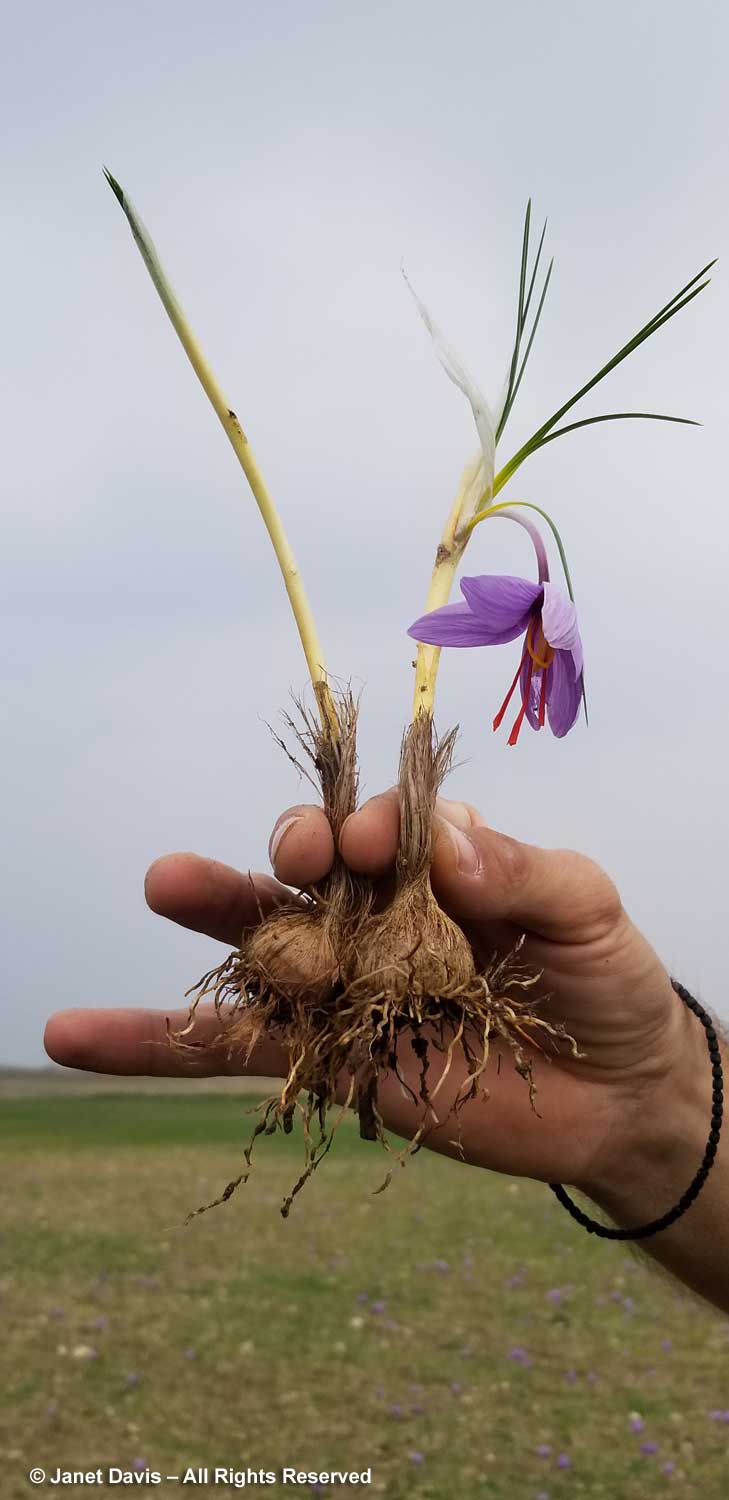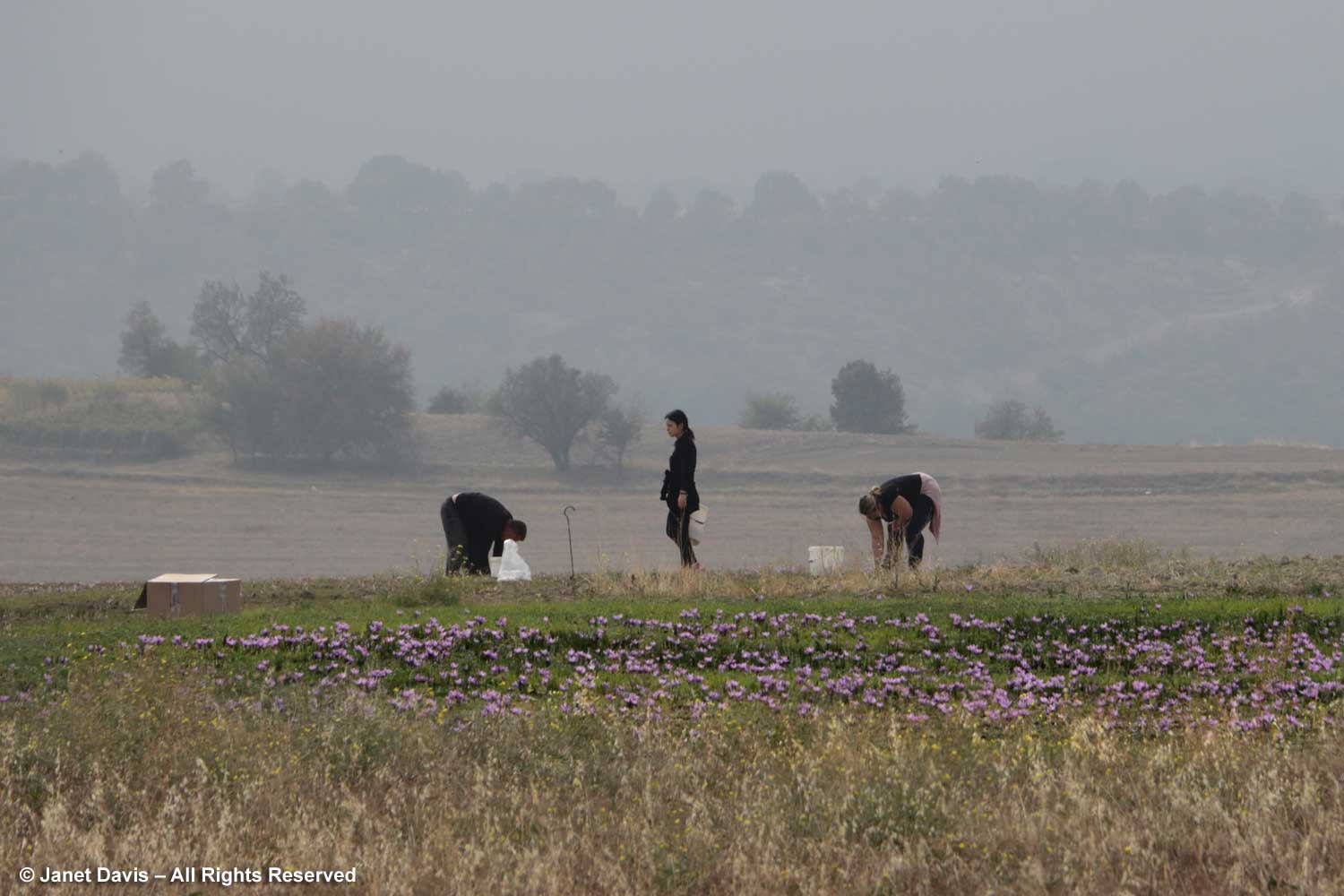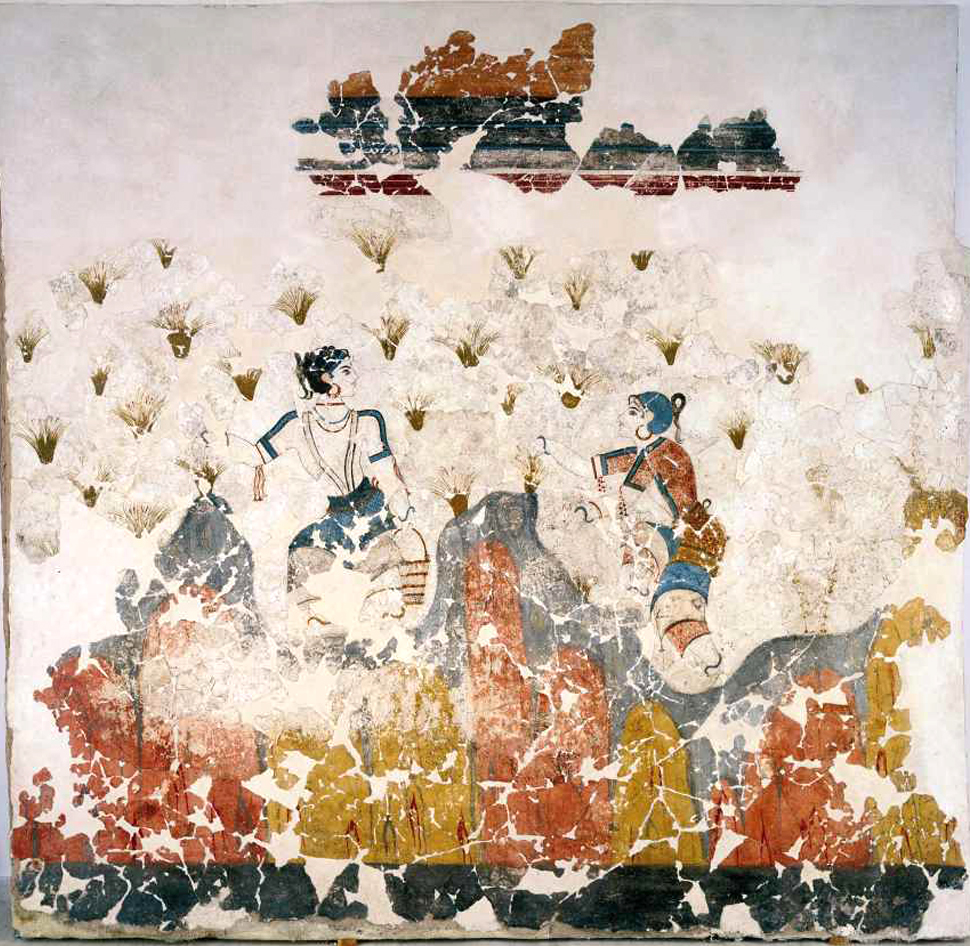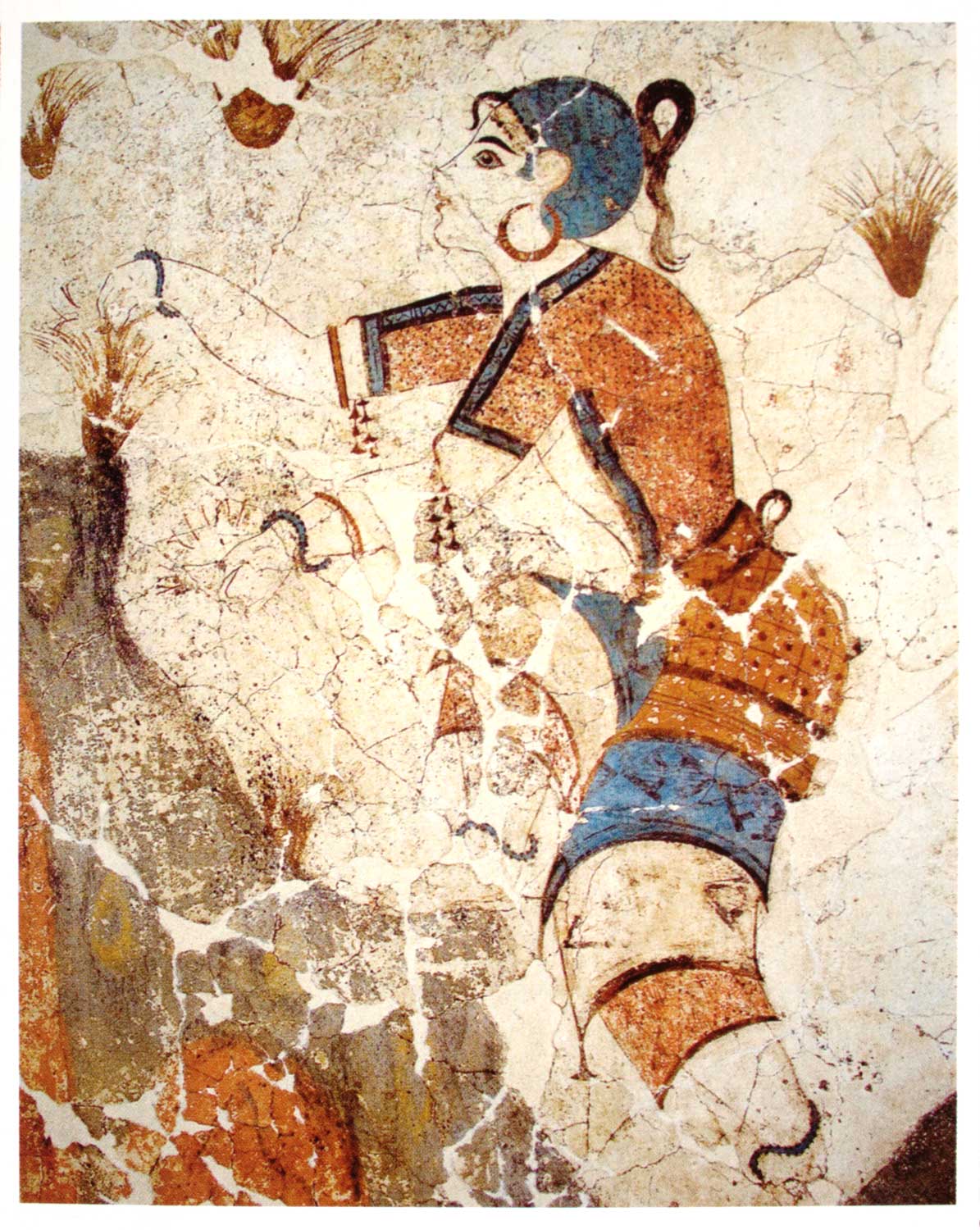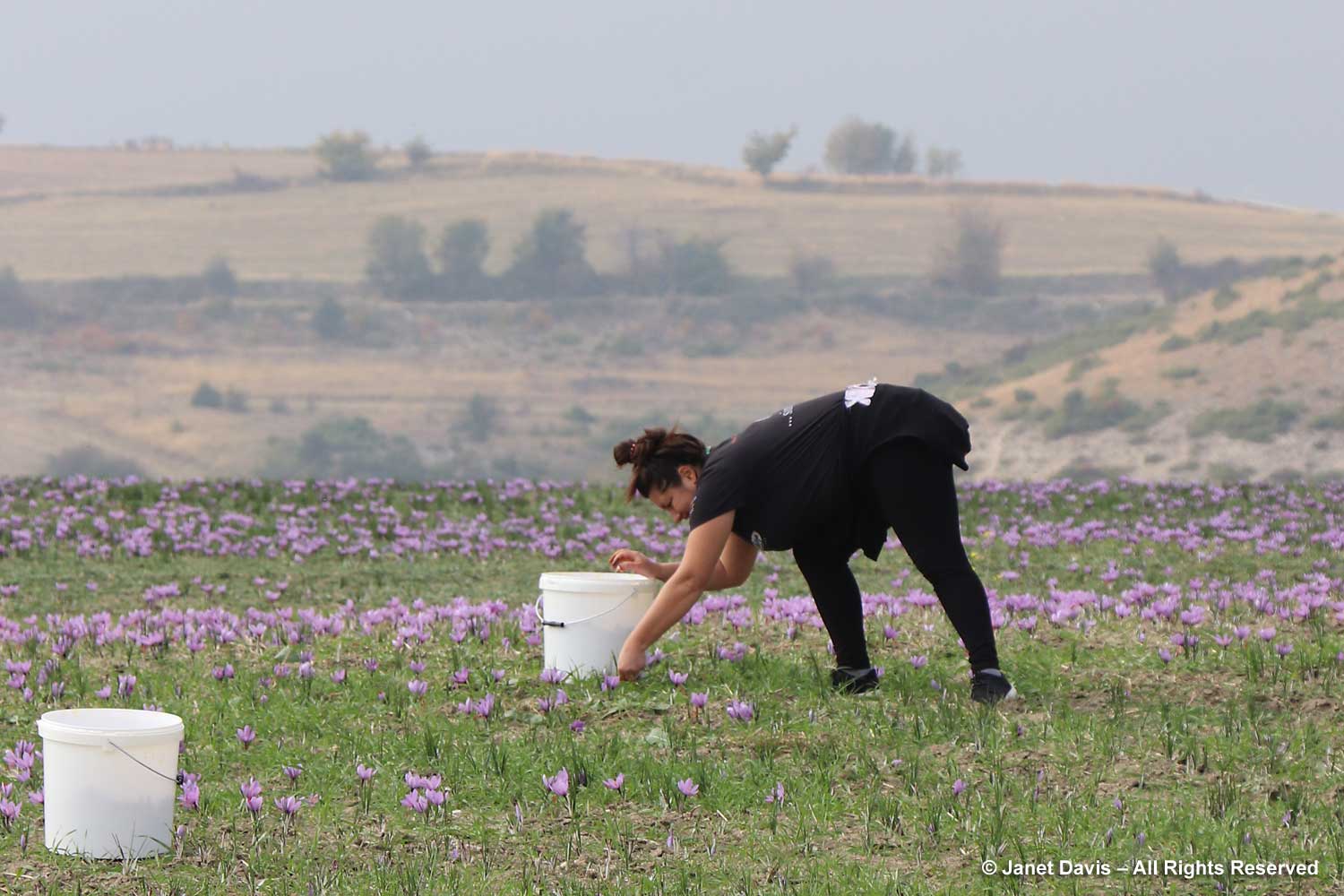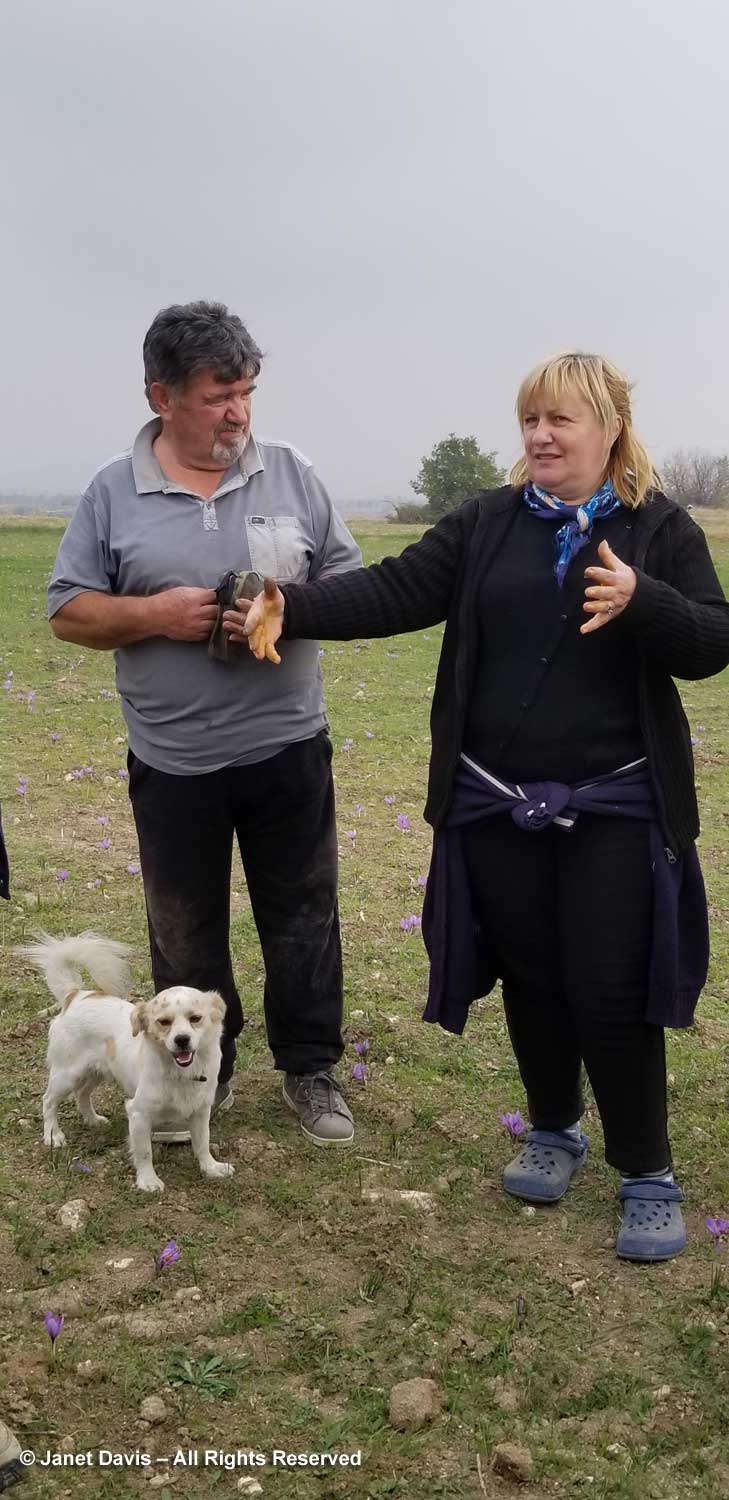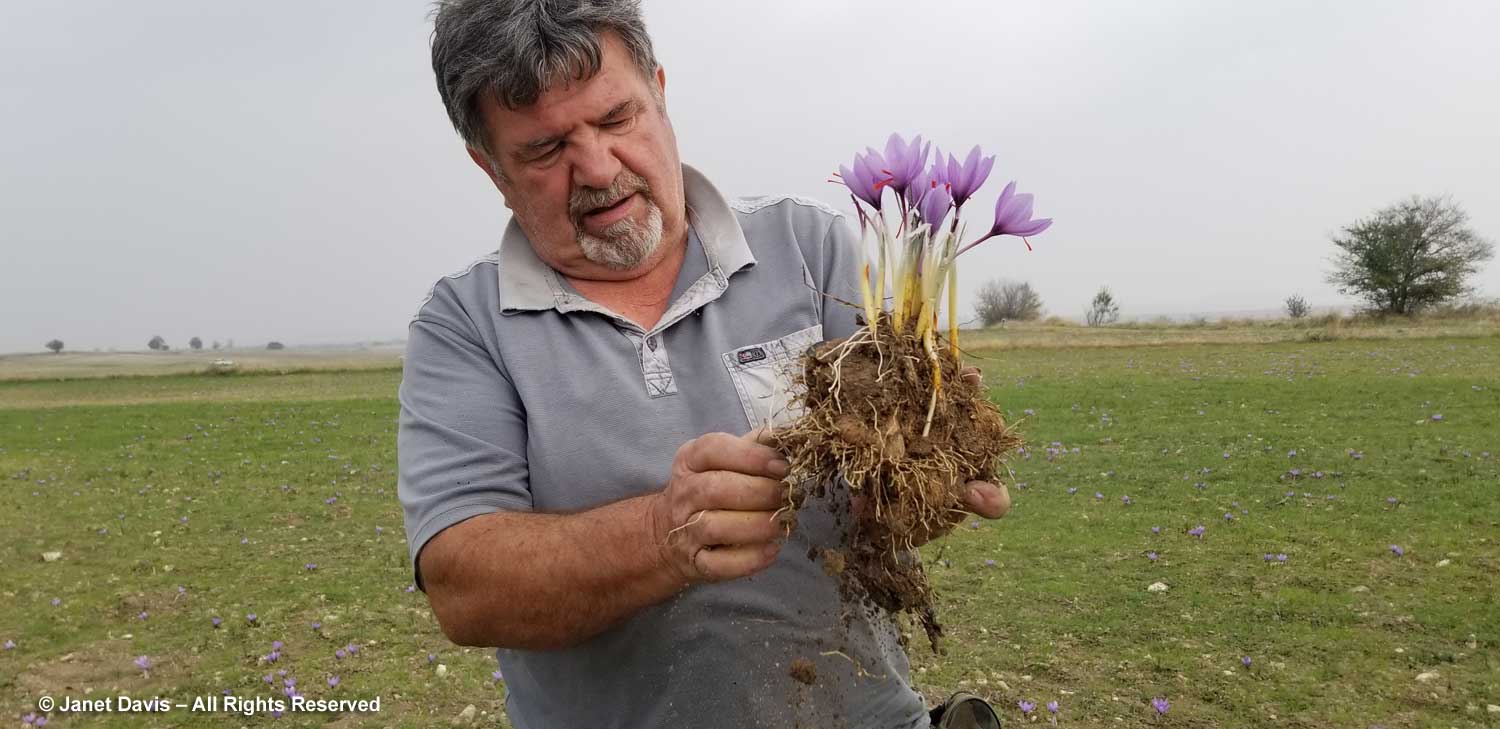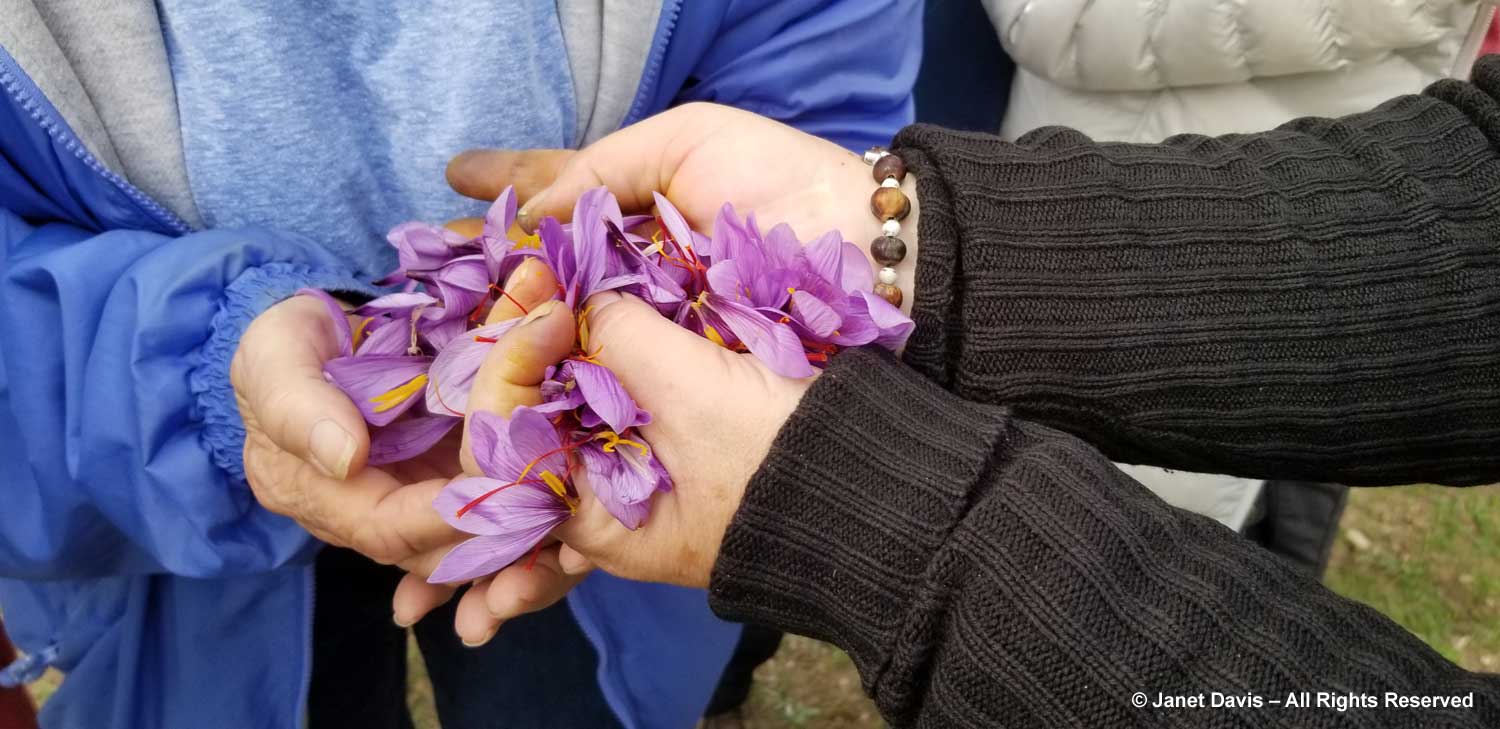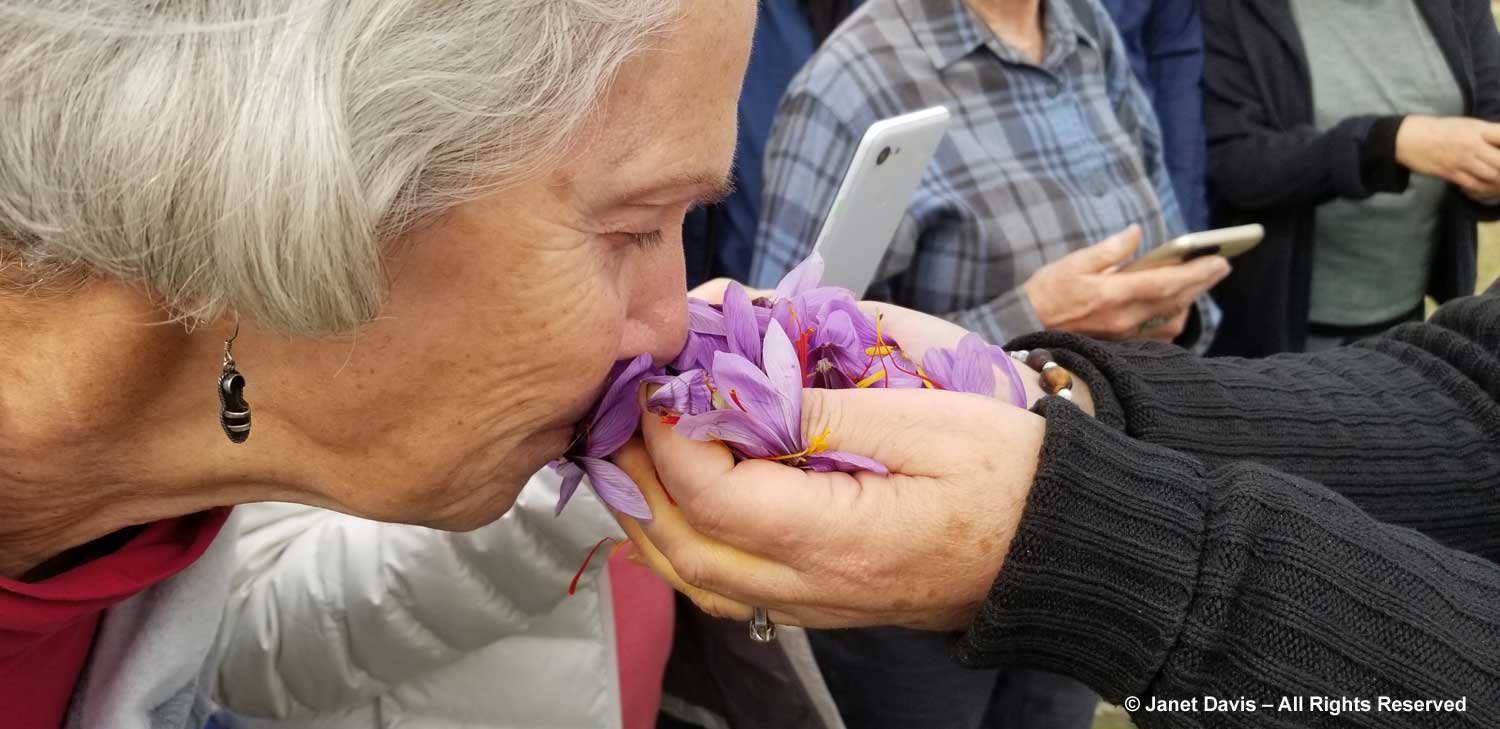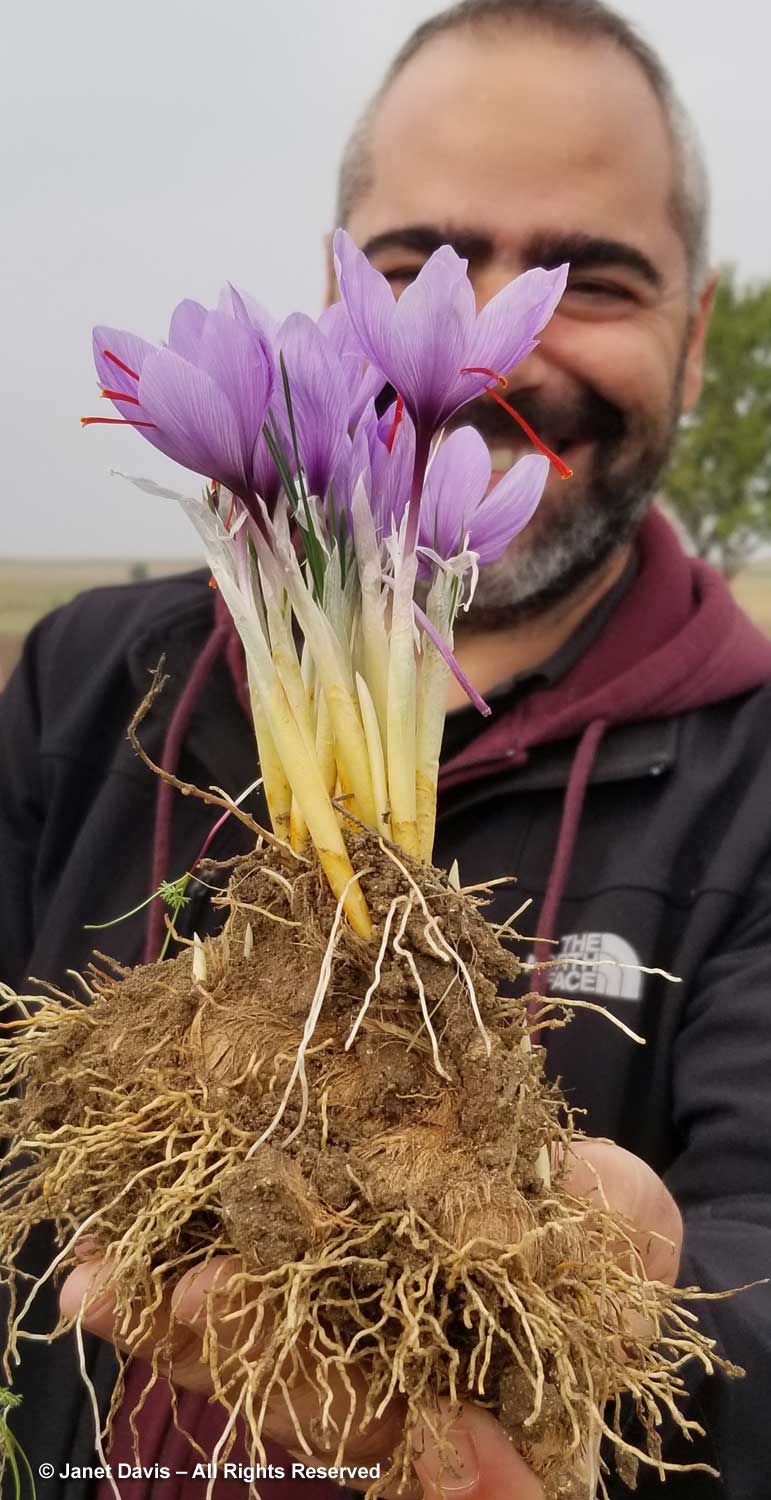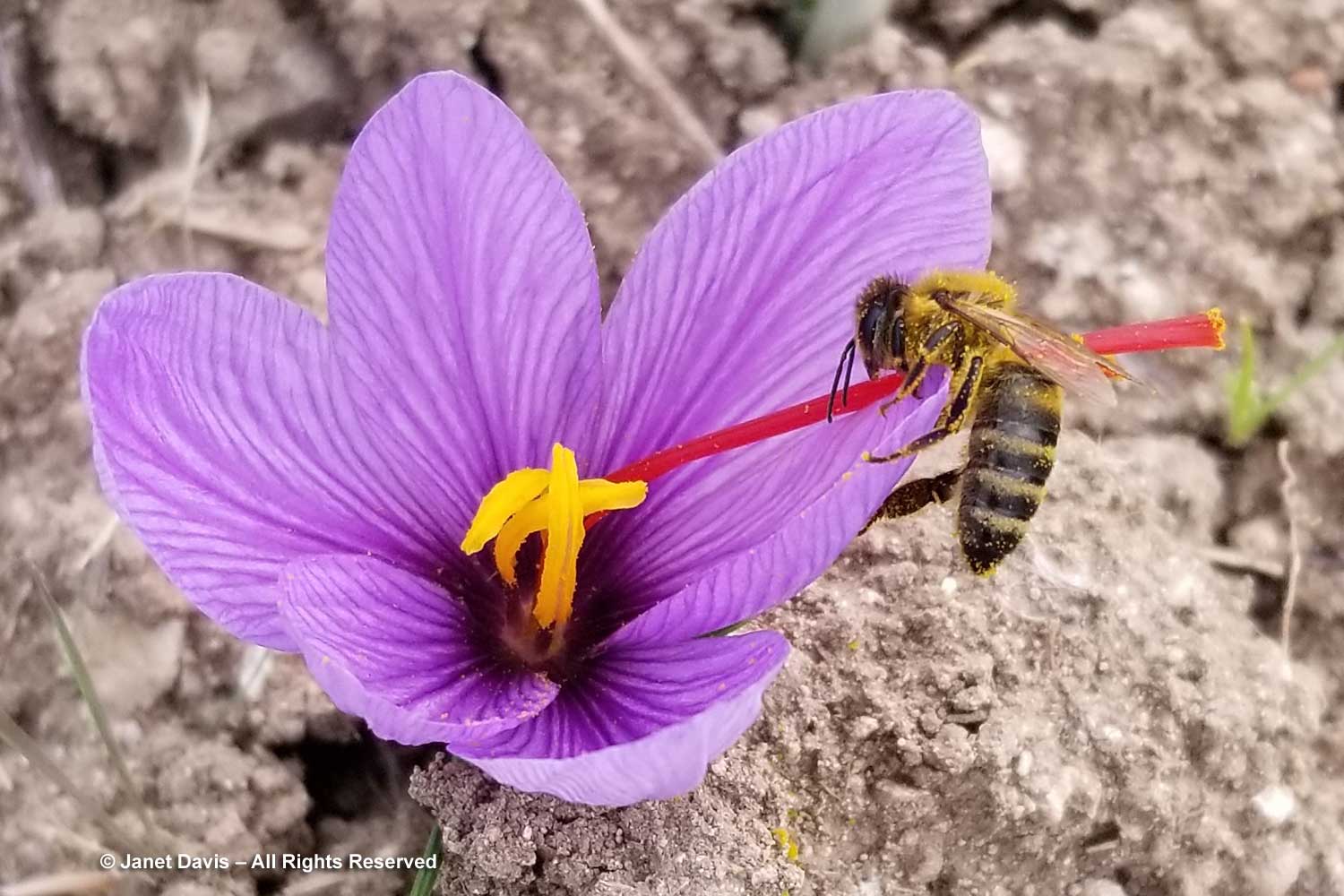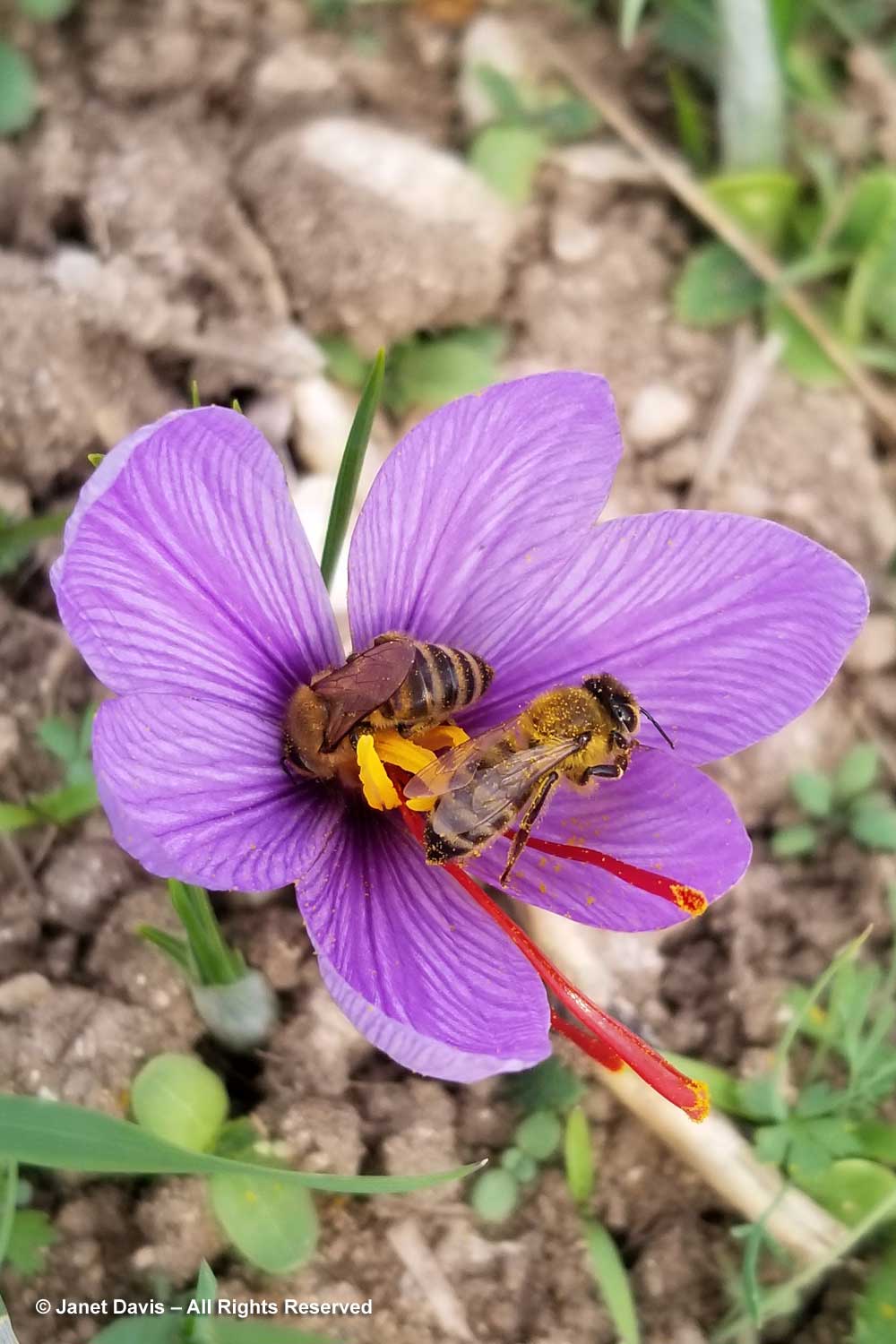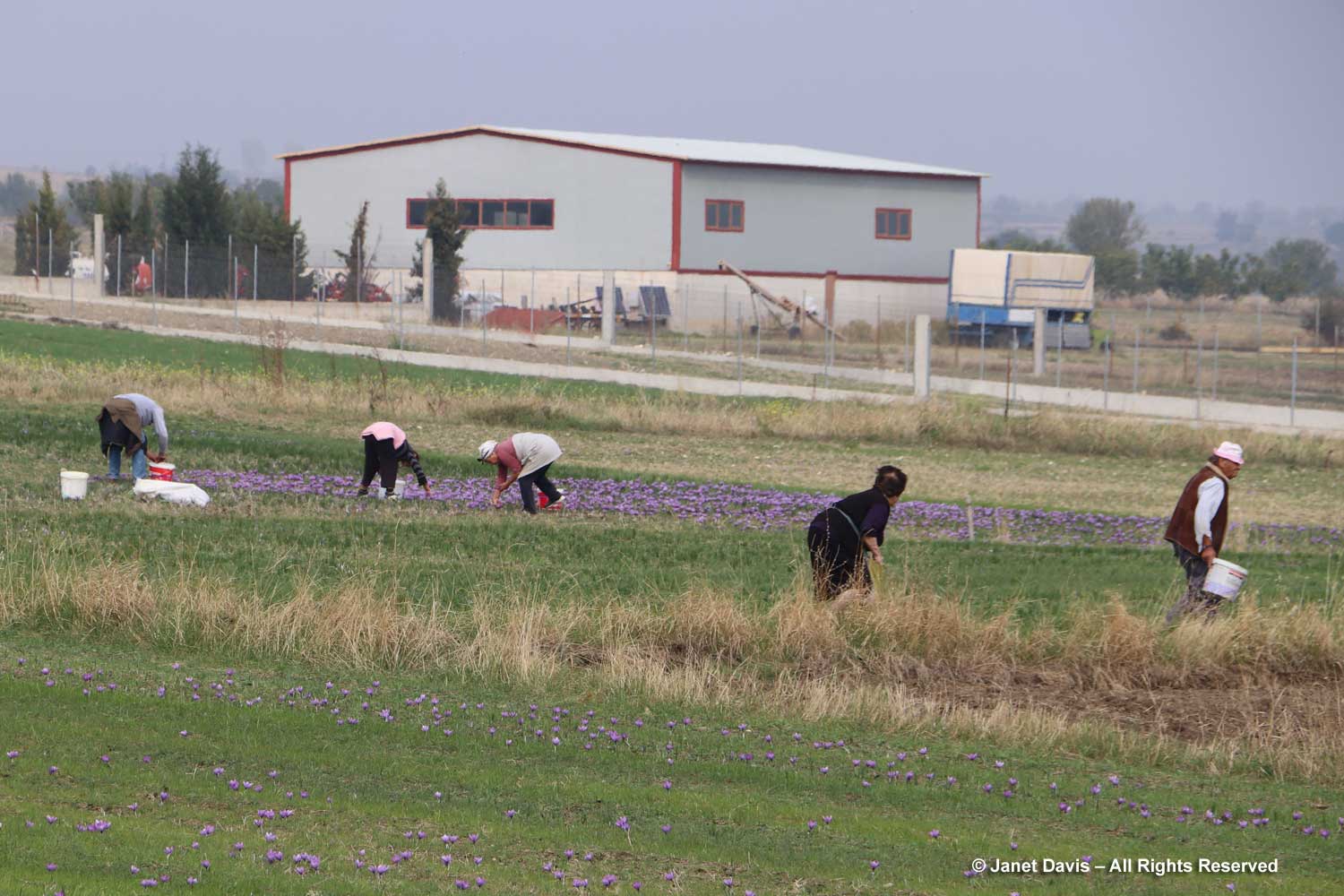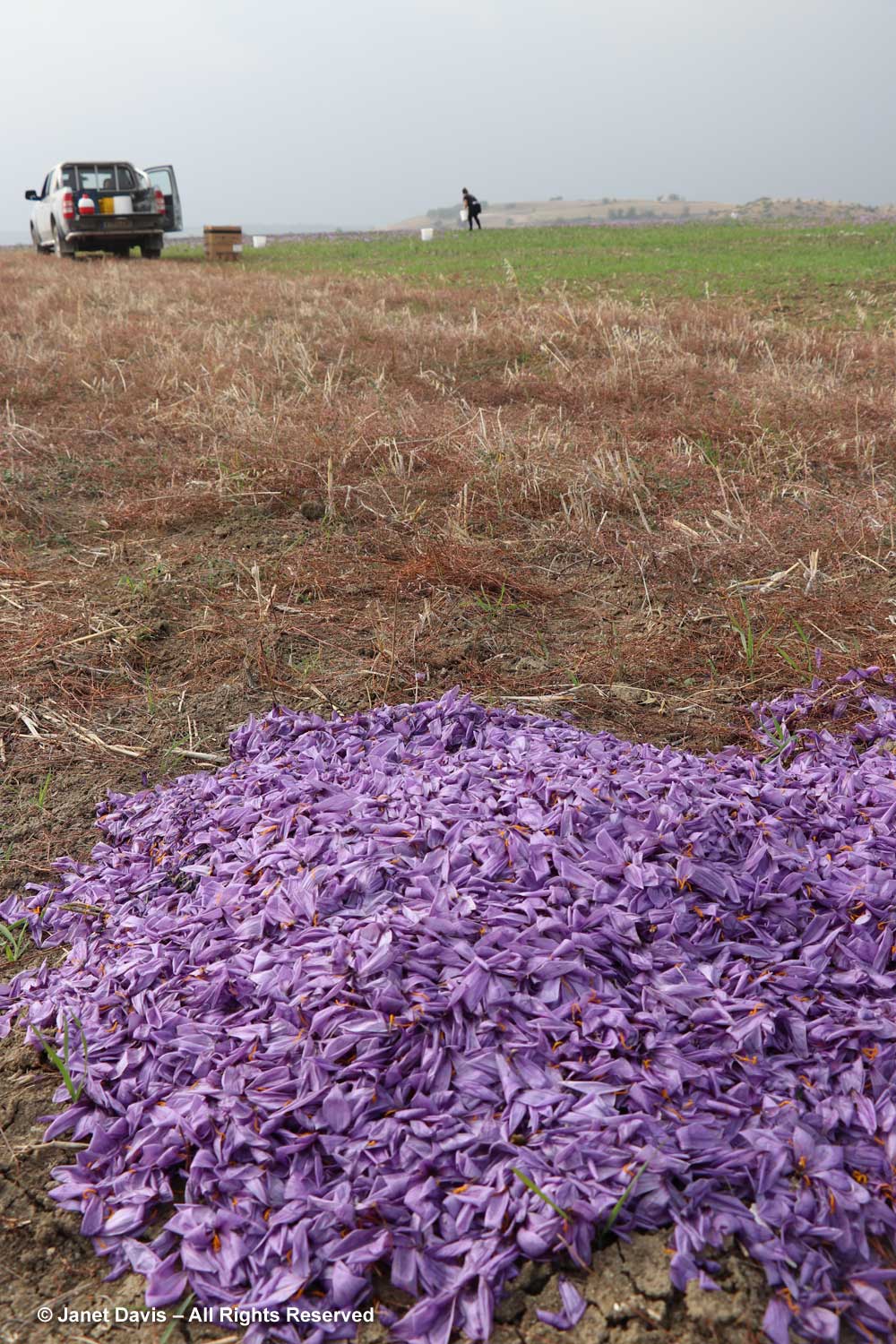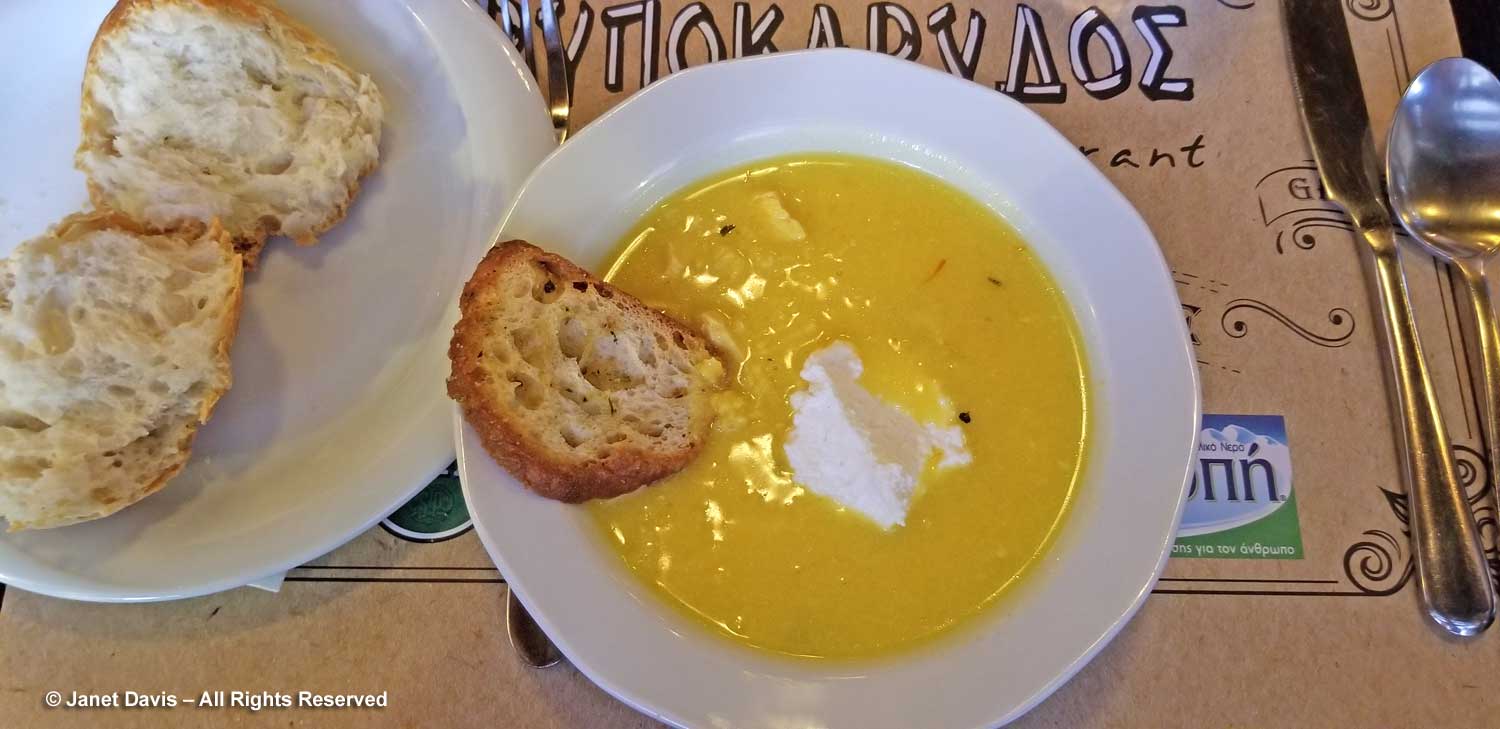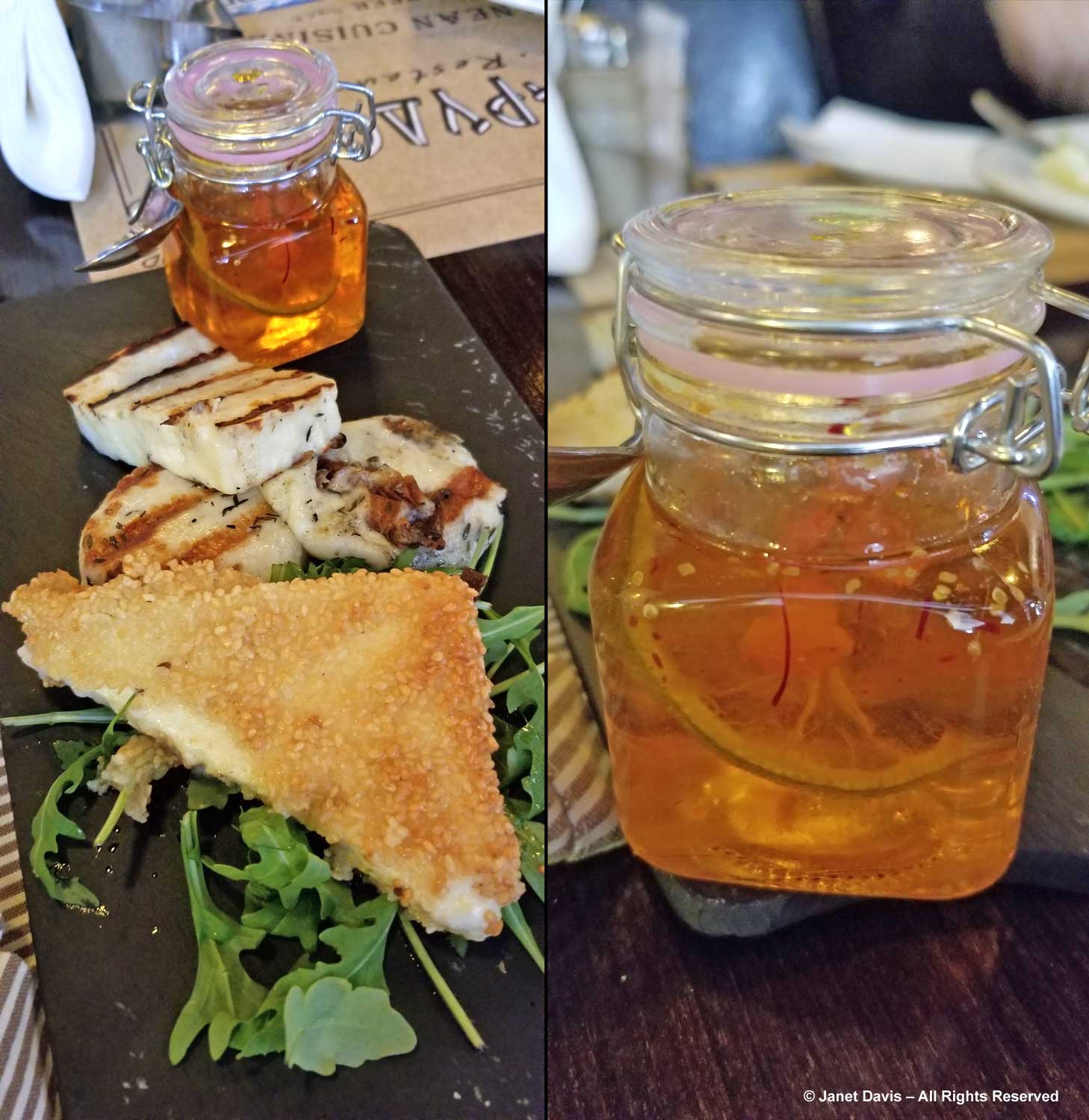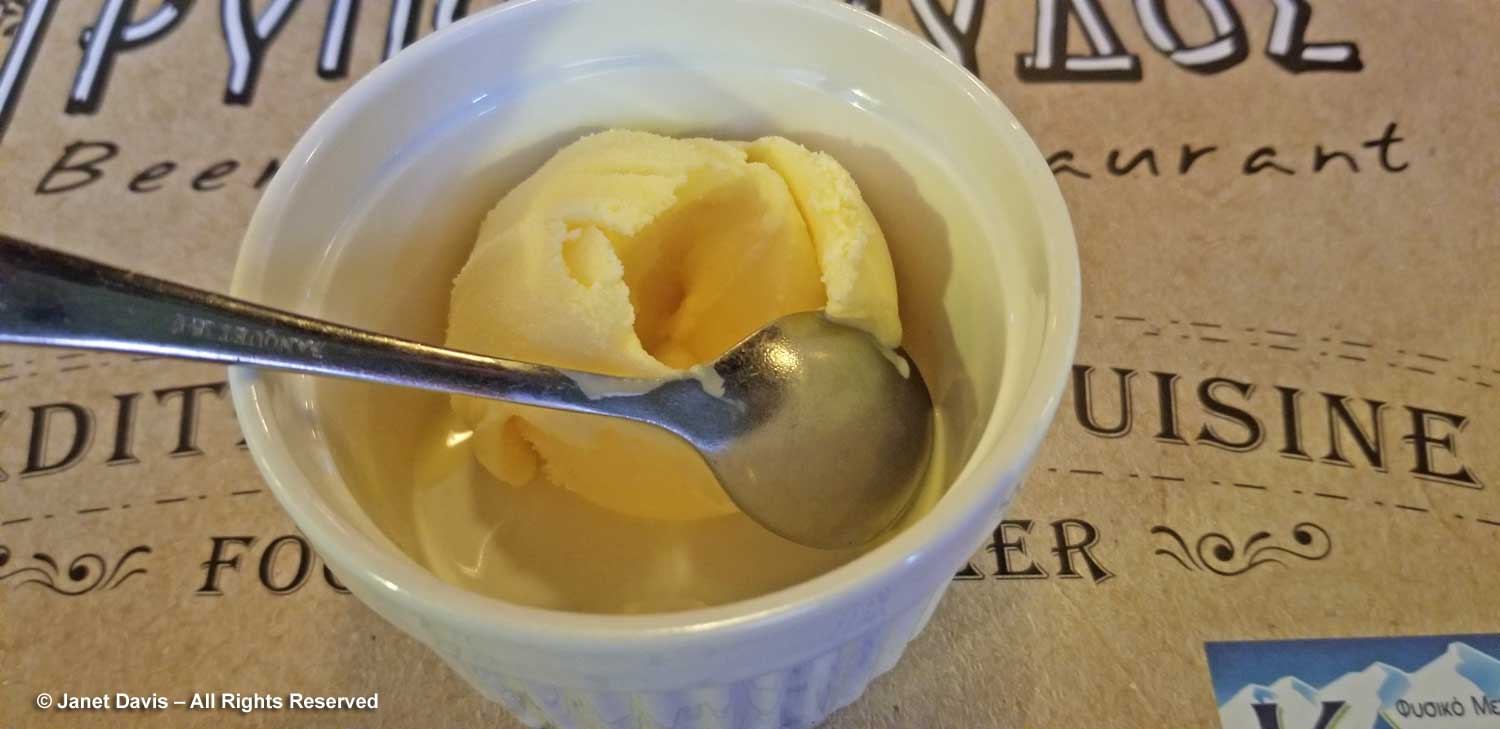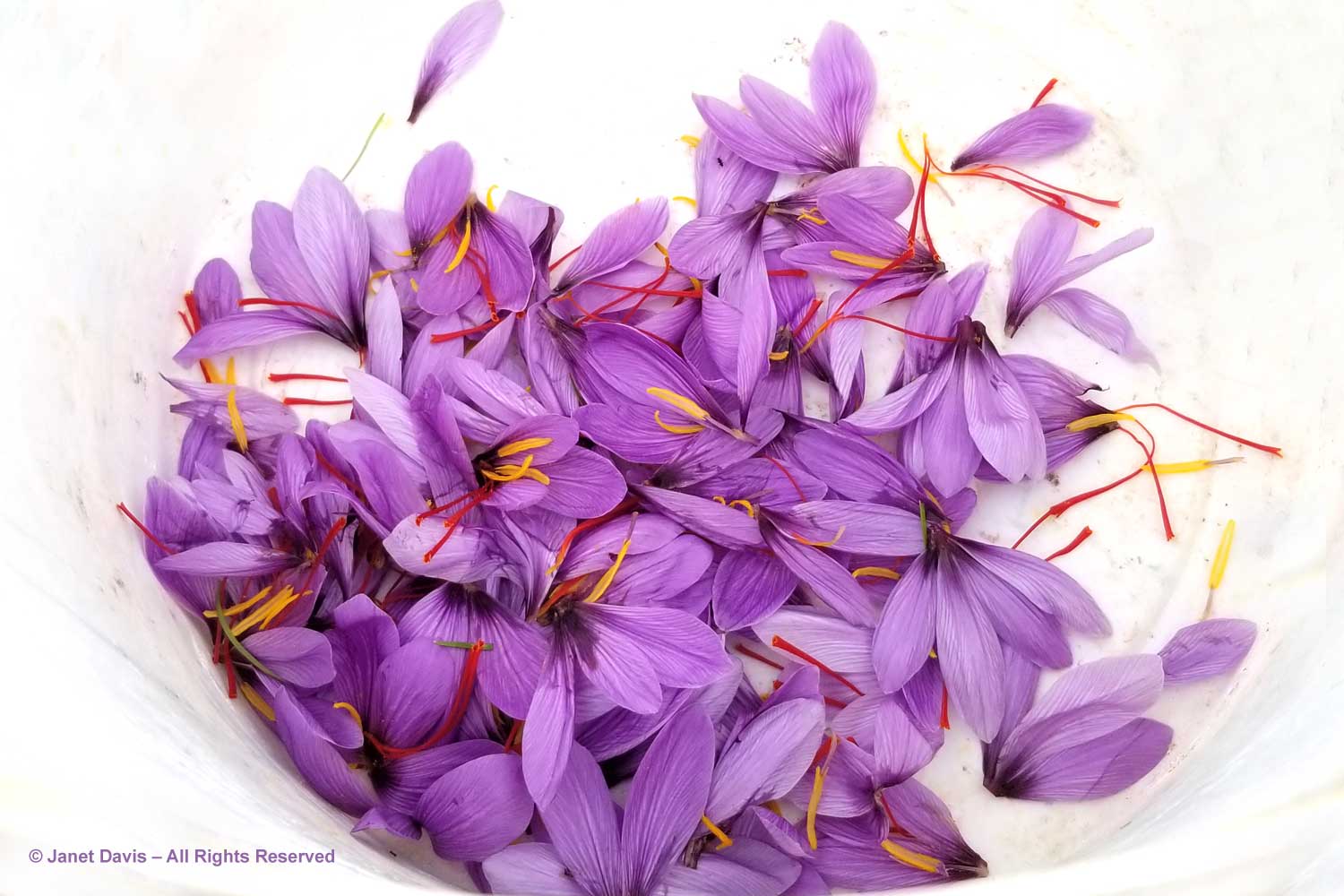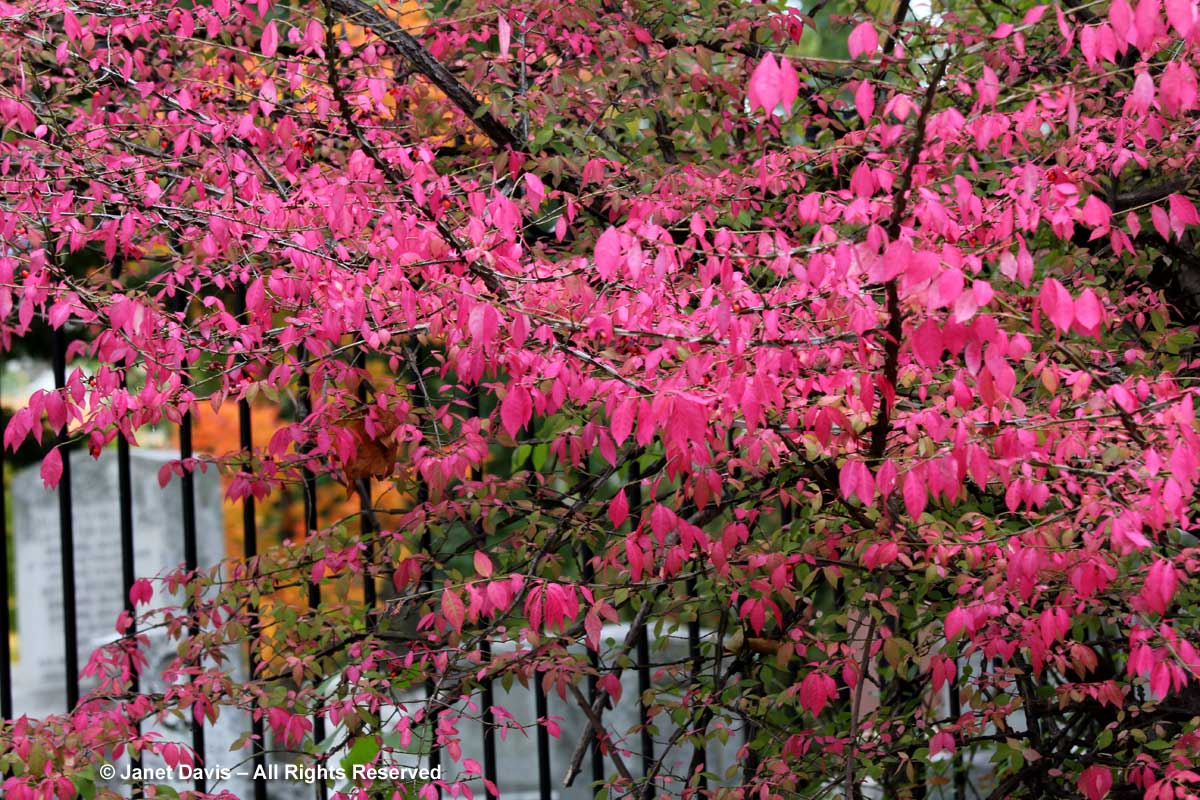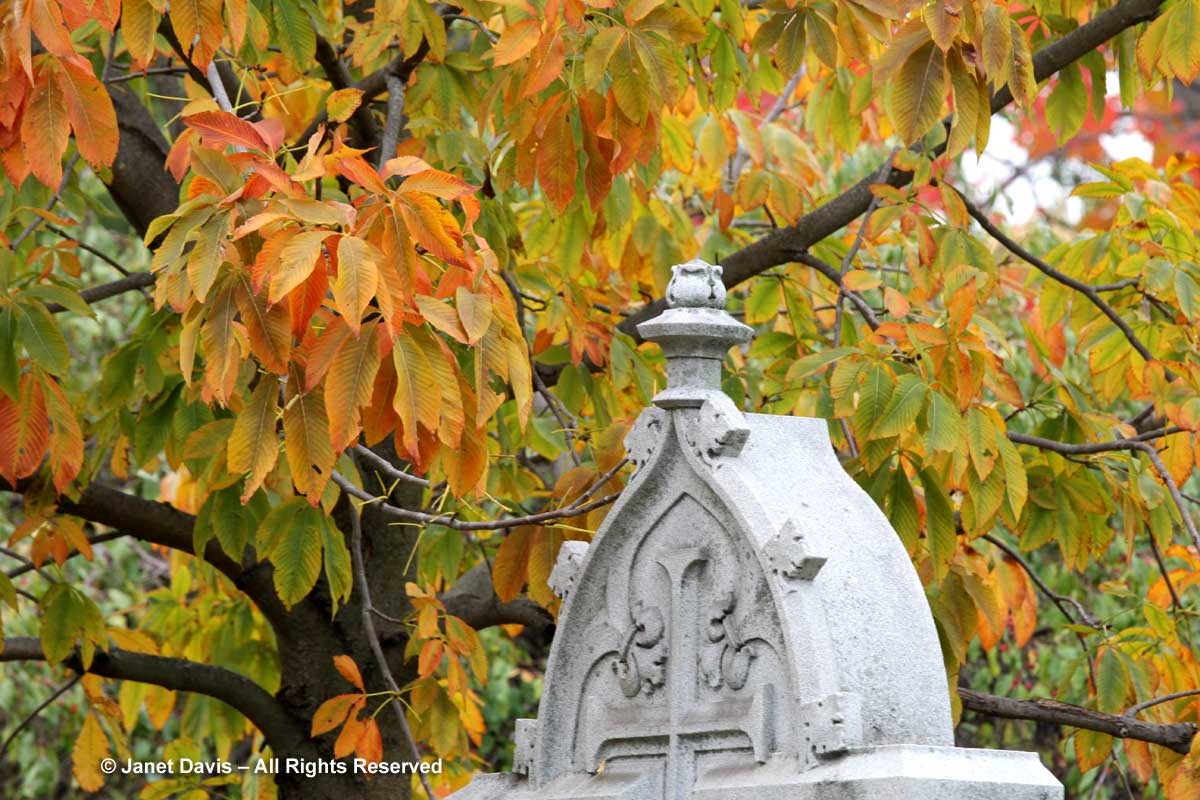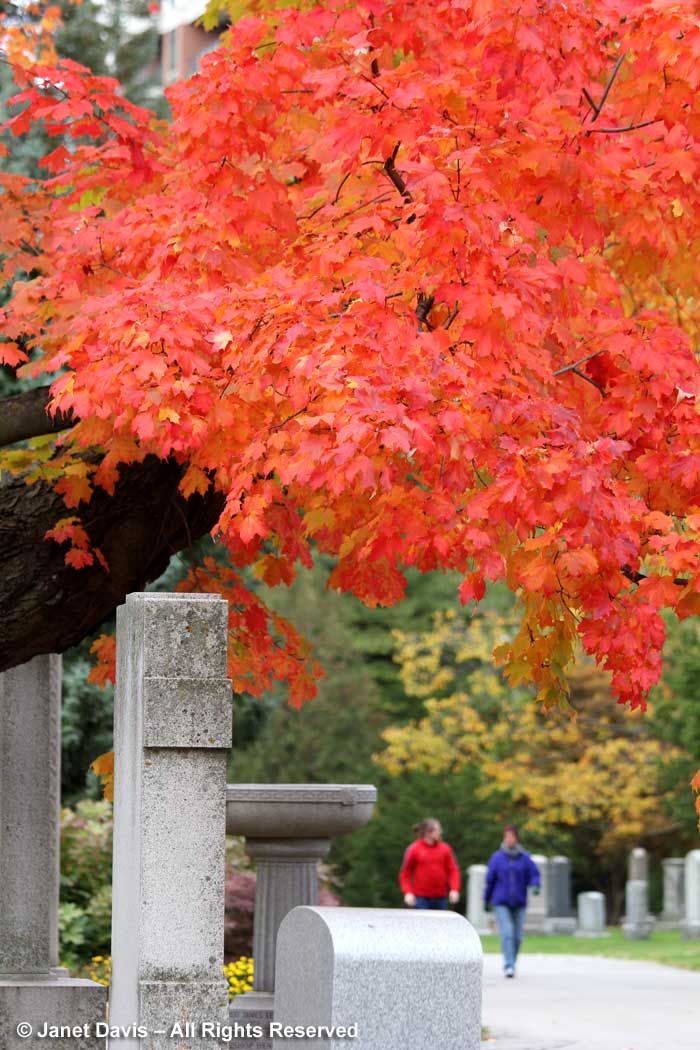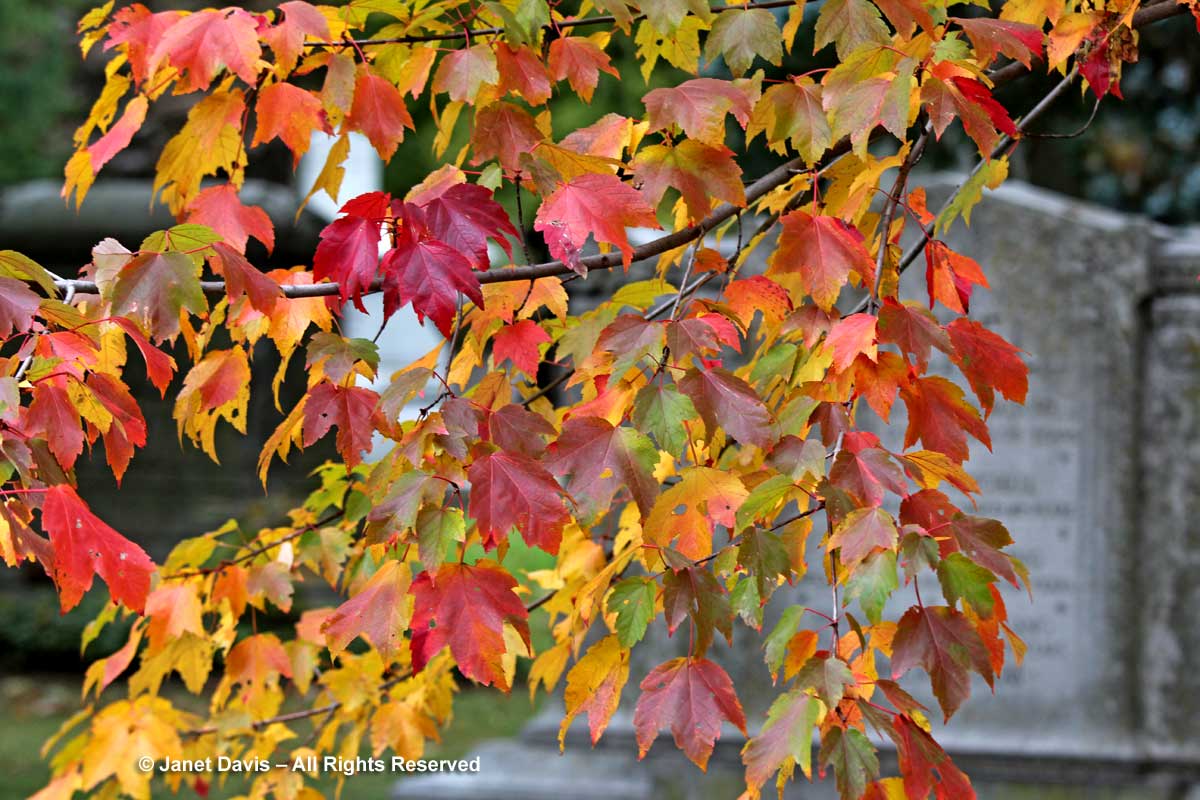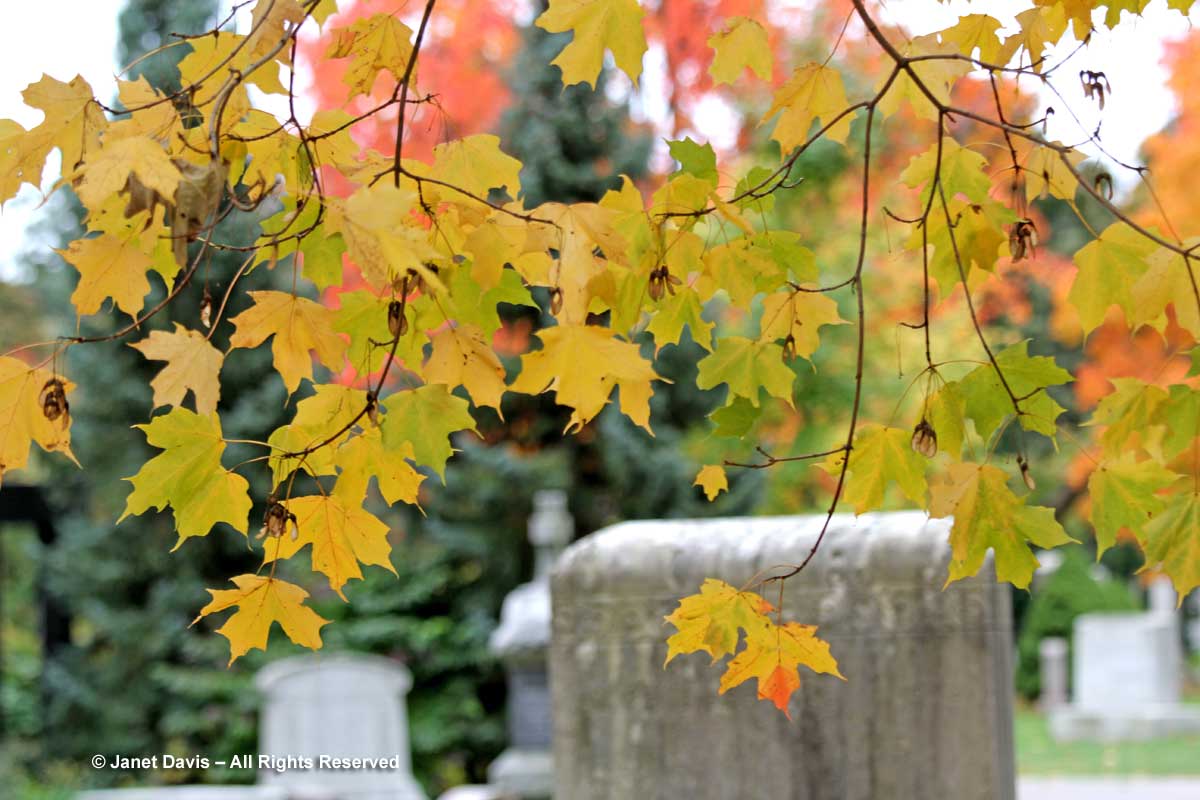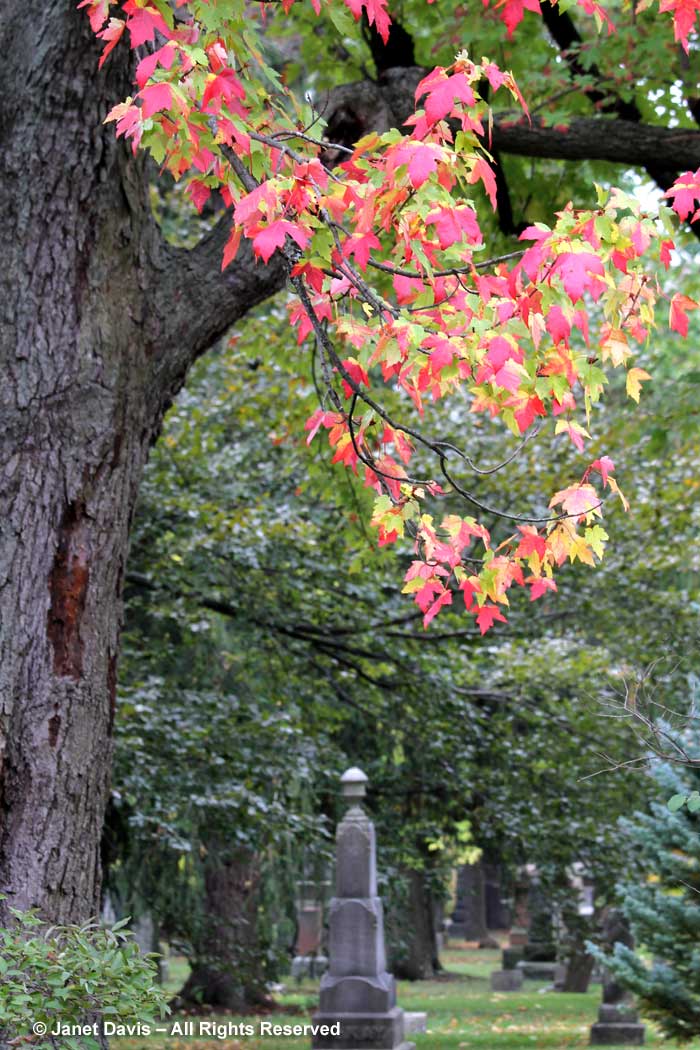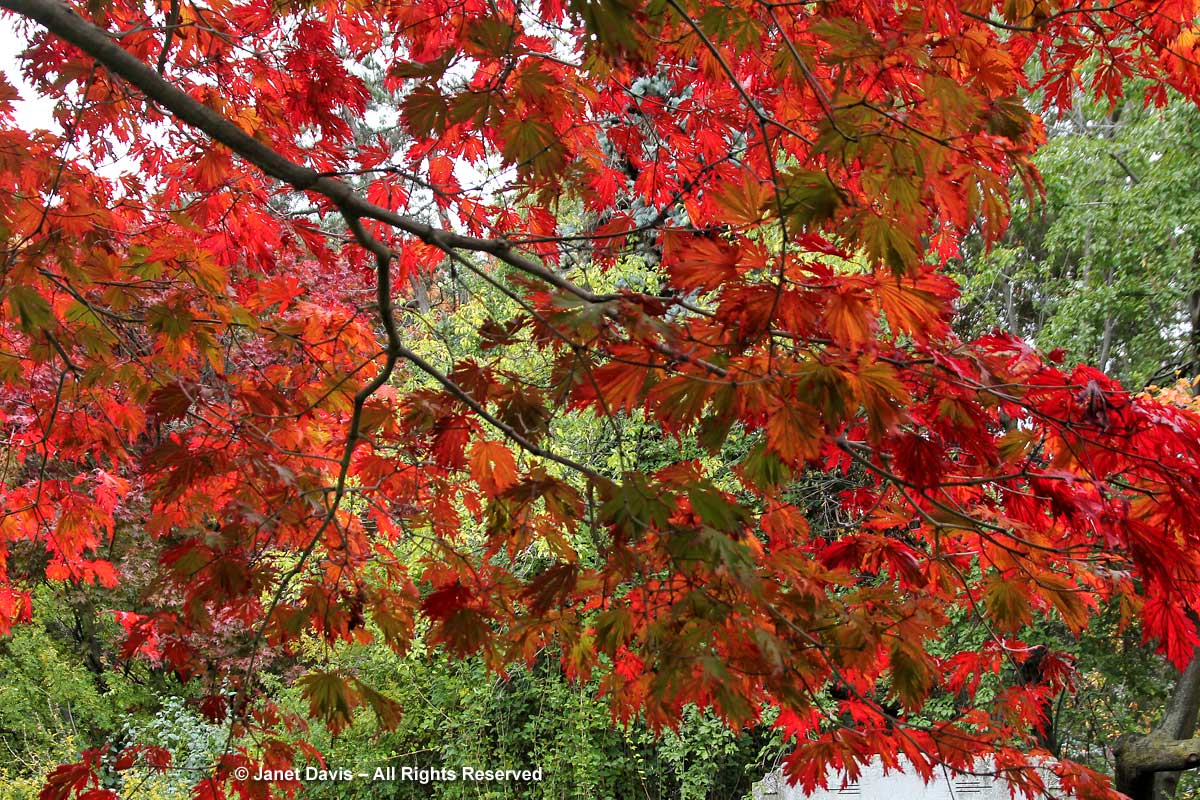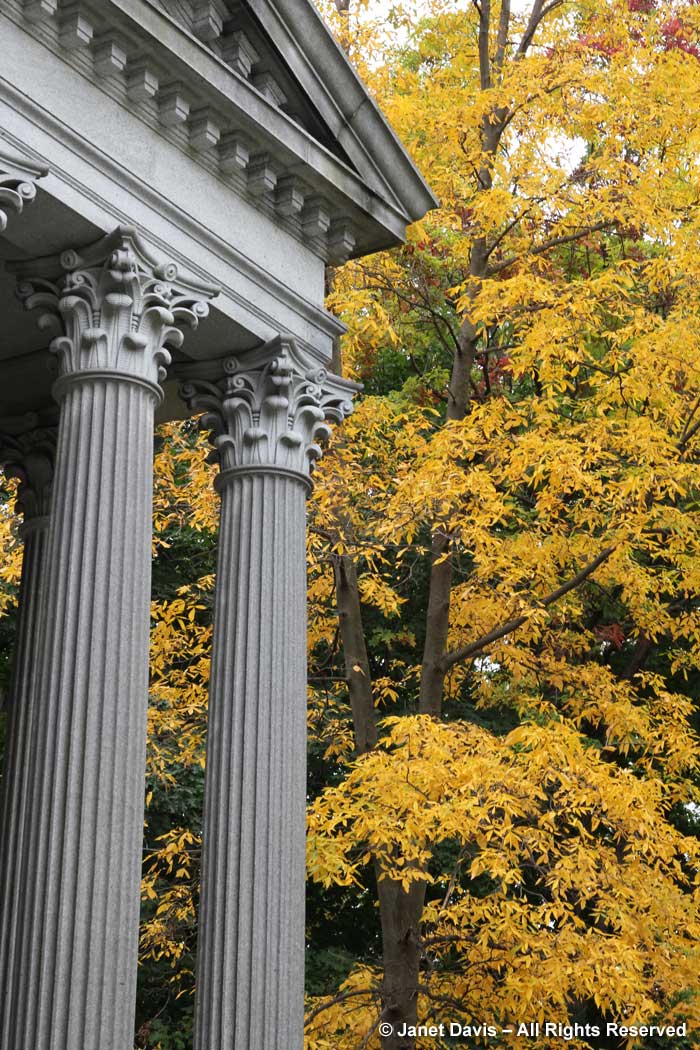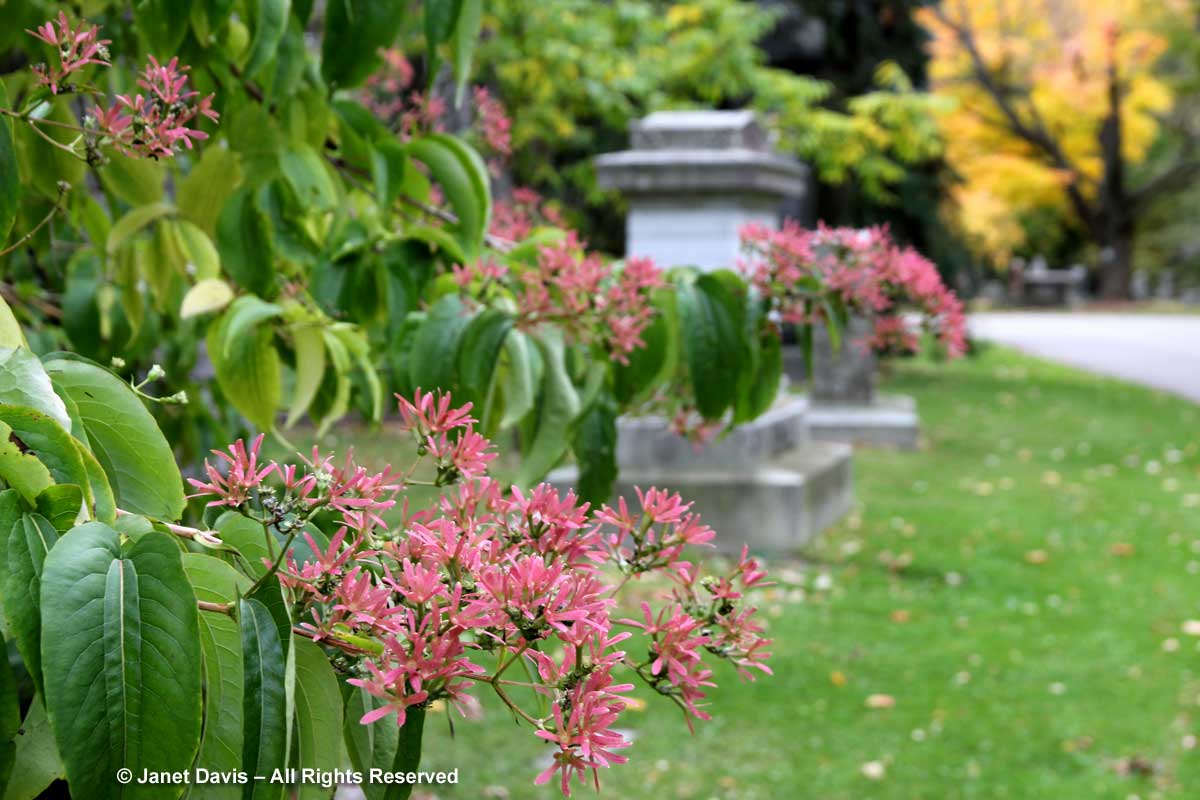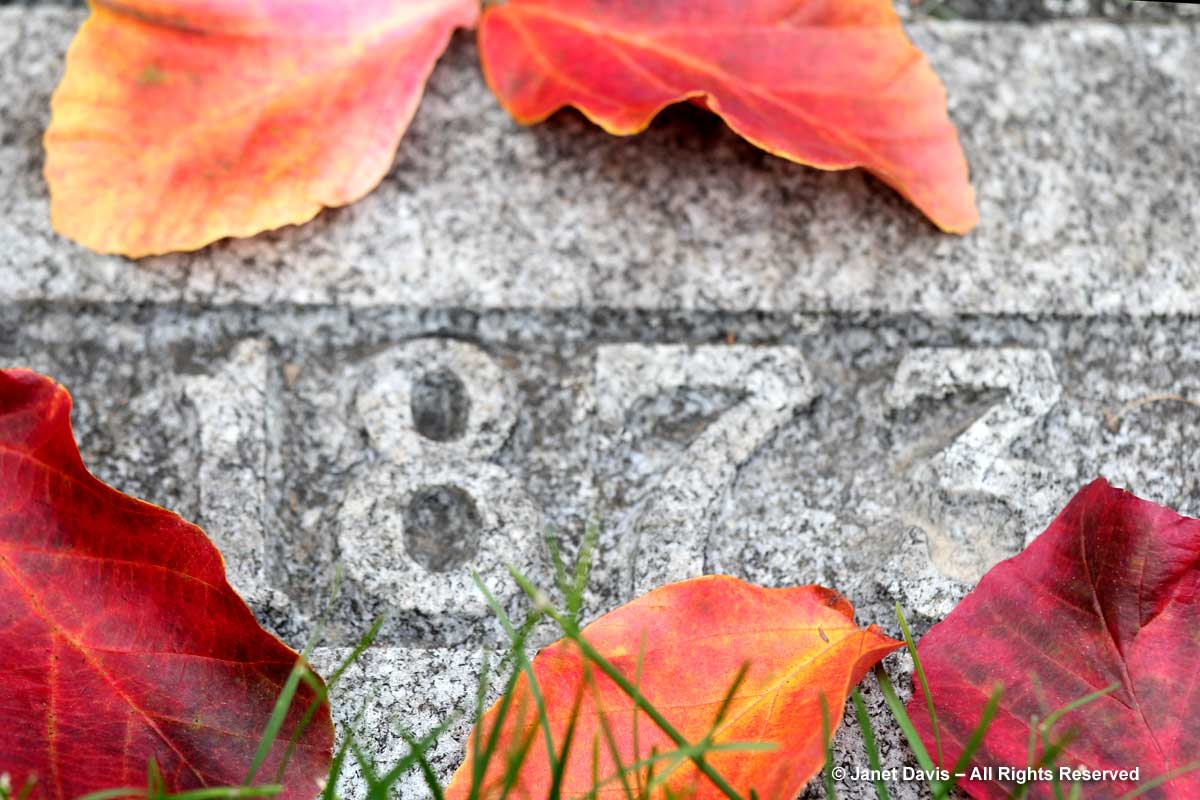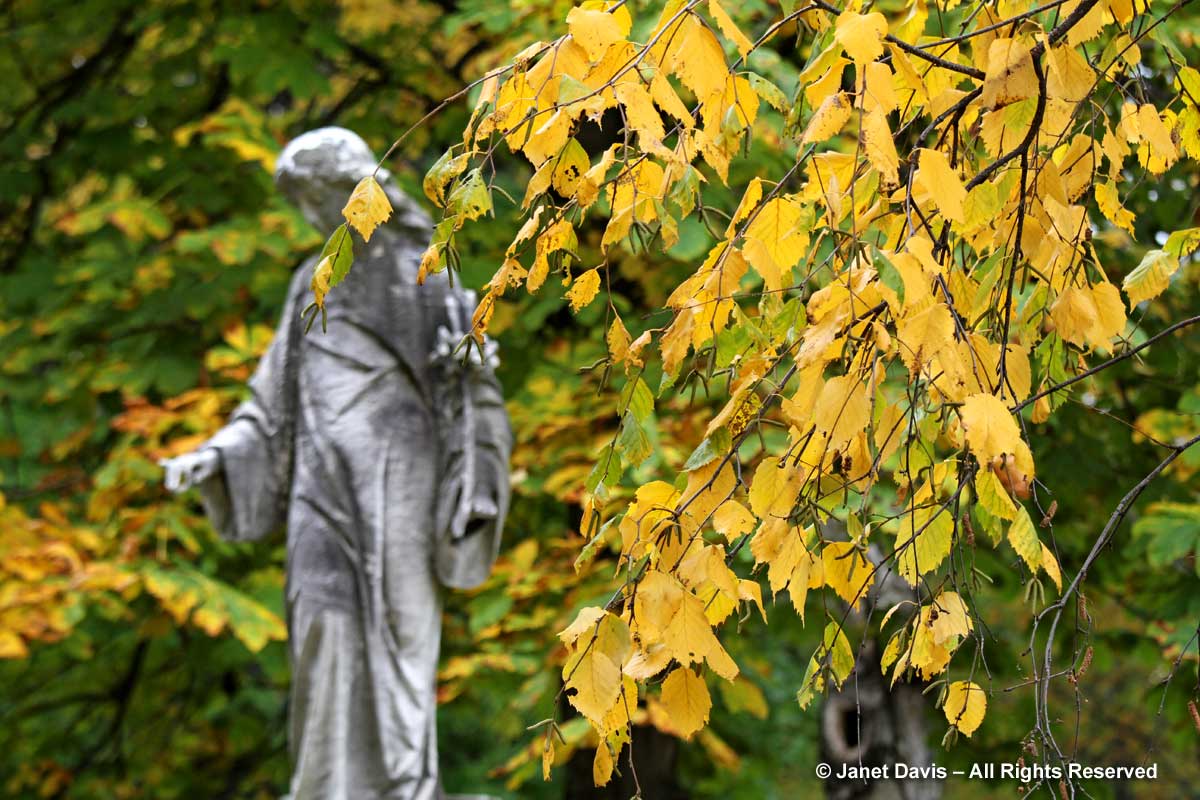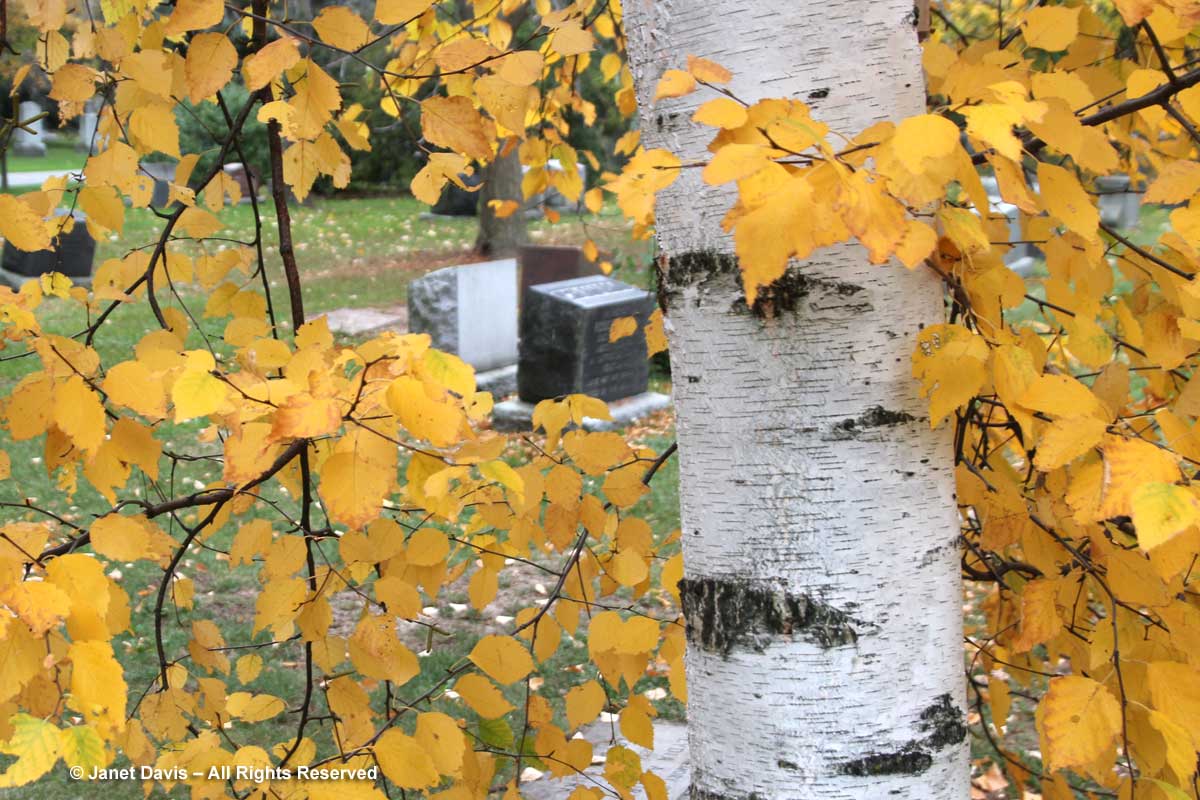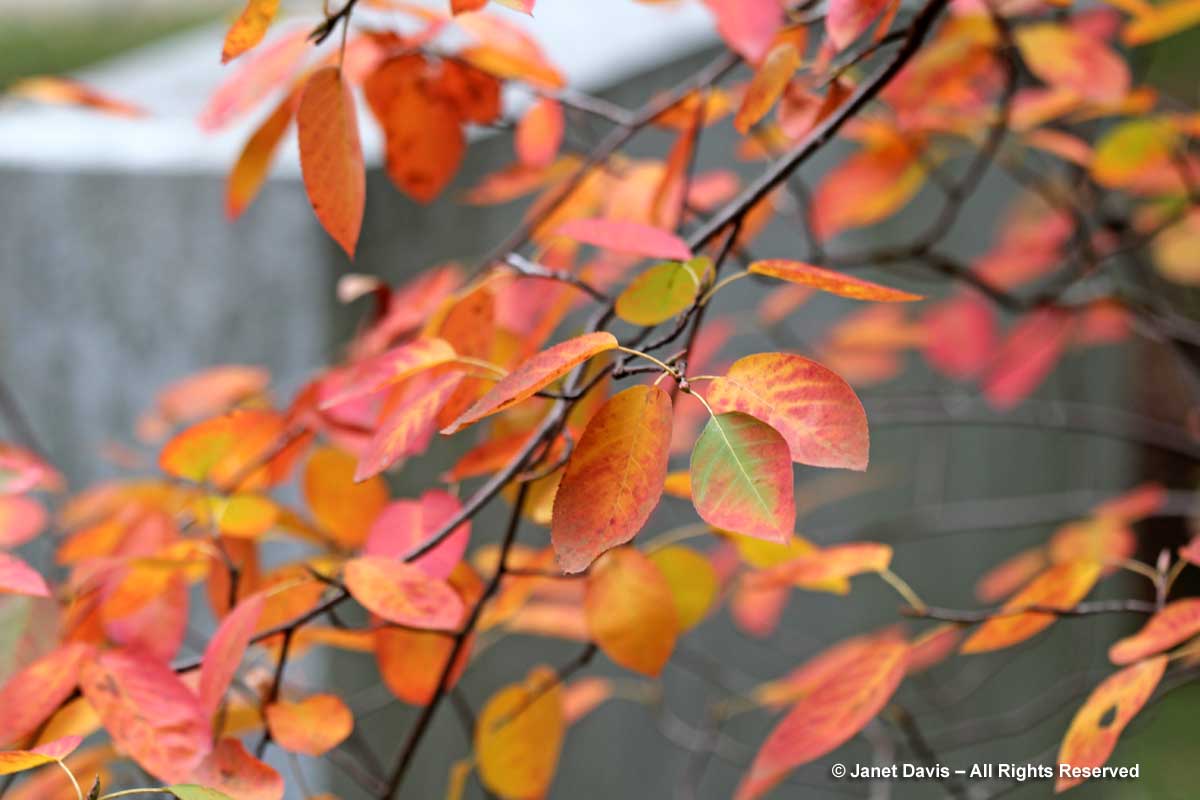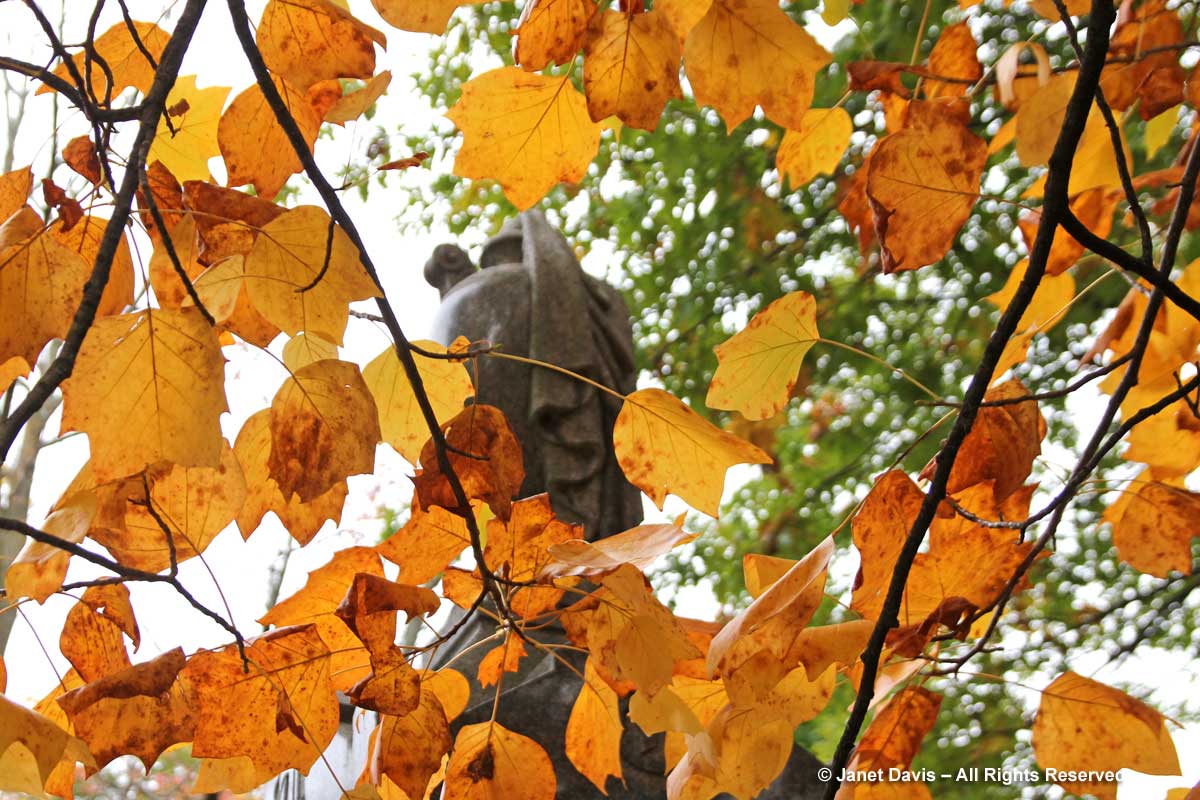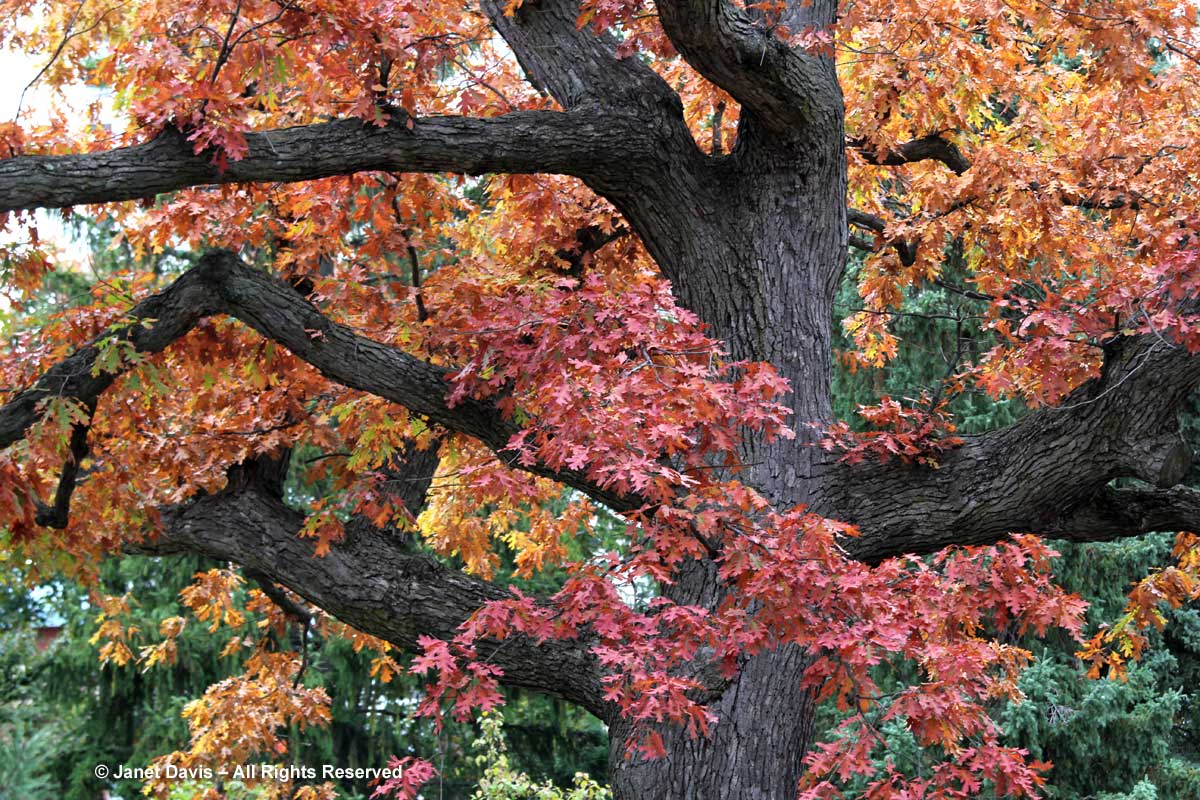I’ve spent the past three weeks getting in touch with my inner child. Seriously… or not so seriously. Maybe it’s Covid. Maybe it’s the prospect of five months of winter with no travel and few opportunities to be with family and friends. Or maybe it’s just my enduring passion for the explosive foliage colours of fall. This autumn, I felt the need to be more playful; it’s been so grim, all the news. So I acted as impresario and asked my autumn leaves to dream up their own dance acts. They were all so creative – I was terribly proud of them (only my geisha declined to dance). Thus, on October 25th a few brilliantly-coloured leaves from my backyard Washington thorn tree (Crateaegus phaenopyrum) suggested a line dance. Why not?
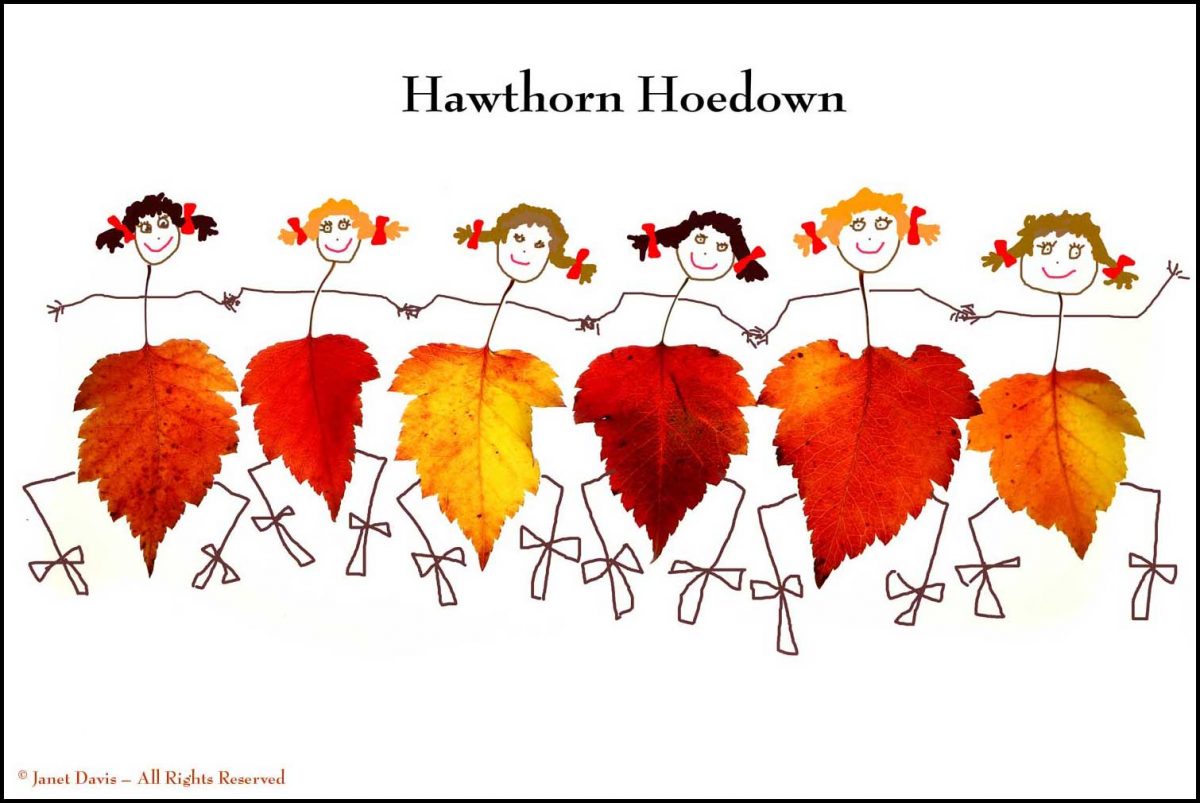
That same day, a few of the tiniest, uppermost red leaves from my neighbour’s Freeman maple (Acer x freemanii) requested my help with a maypole. “But it’s almost Halloween,” I said. It didn’t matter – they were so keen on the alliteration! So I agreed and made them a canopy from yellow ginkgo leaves. “But where’s our maypole?” they asked. “I’m sorry, I’m tired of drawing with a mouse. Make do with what you’ve got,” I replied. They were a little sad at first, but once the Morris music began they just started whirling those ribbons as if it was the first of May.
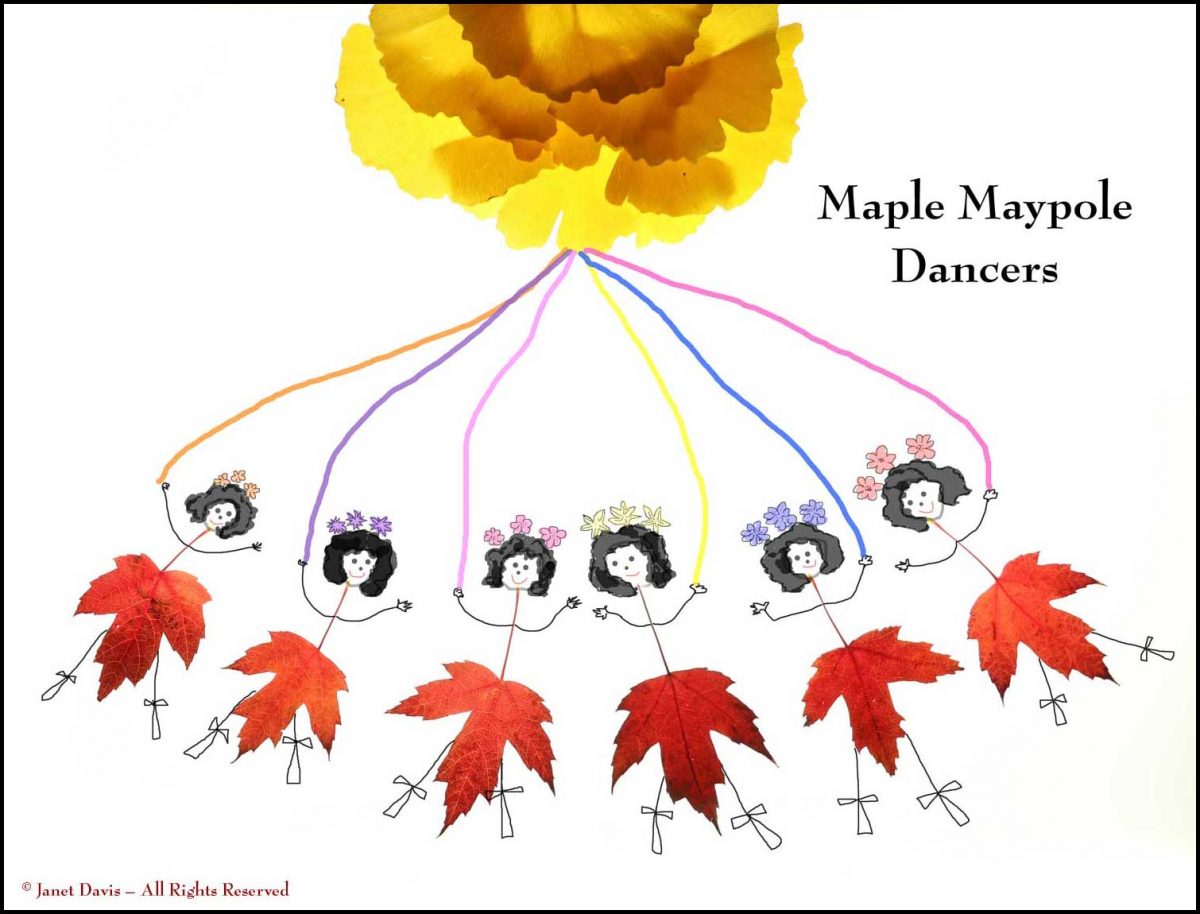
Then Señora Fothergilla got into the act. “Necesito bailar!” she cried, which I understand is Spanish for “I must dance!” So I helped her fashion a sexy flamenco gown from the multi-hued leaves of some of the fothergilla shrubs in my pollinator gardens. She was suitably impressed that there were so many colours! “Olé!” Así se baila Señora!
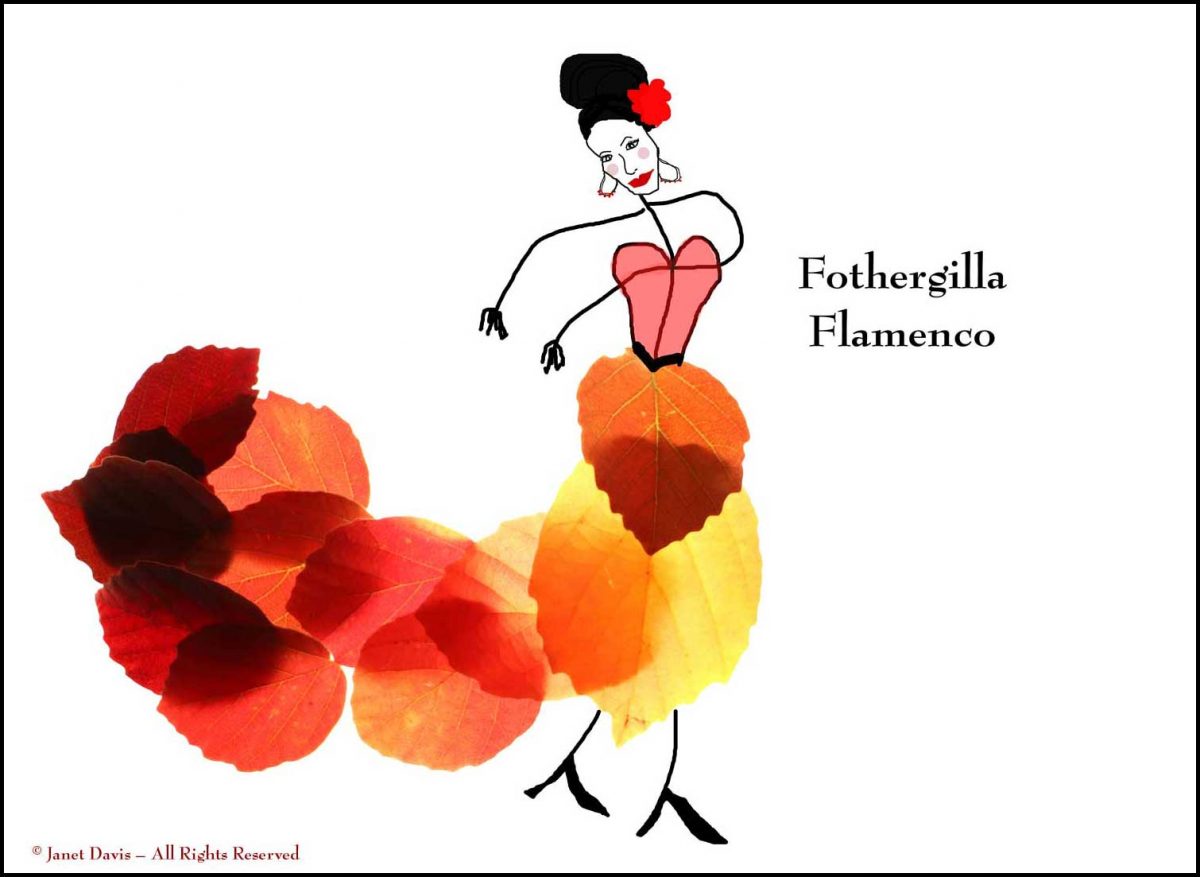
A few days later after a big wind, my boulevard ginkgo tree (Ginkgo biloba) tossed down masses of yellow fall leaves. Suddenly, nine little ballerinas were doing their pliés right in front of me. None were quite ready for principal roles, but they all agreed to be part of the Corps de Ballet.
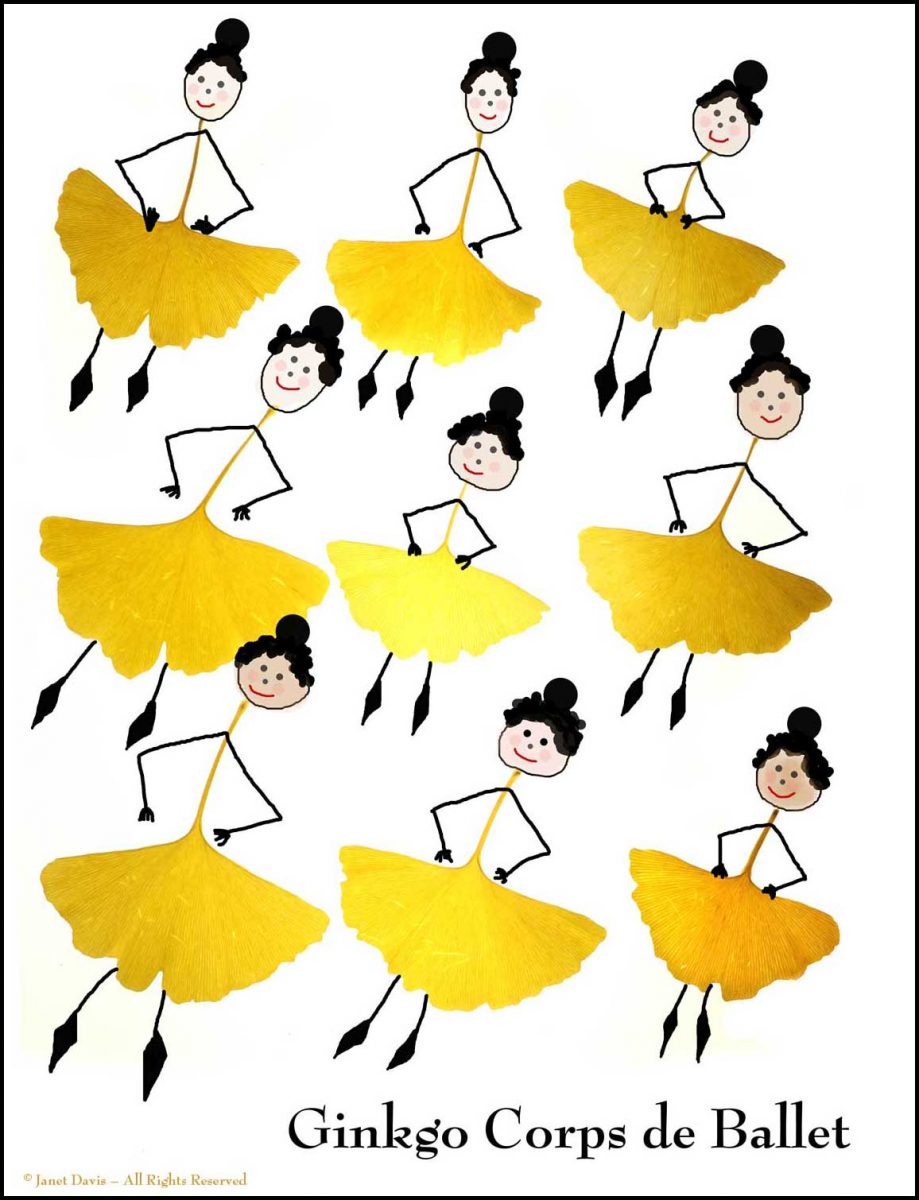
A pair of perennial geranium leaves asked if they could be in my autumn show. They were so lovely, even with that tongue-twisting name, Geranium wlassovianum. They asked if they could do a “pas de deux”. I said it’s usually a man and woman, but…whatever. It’s a modern world.
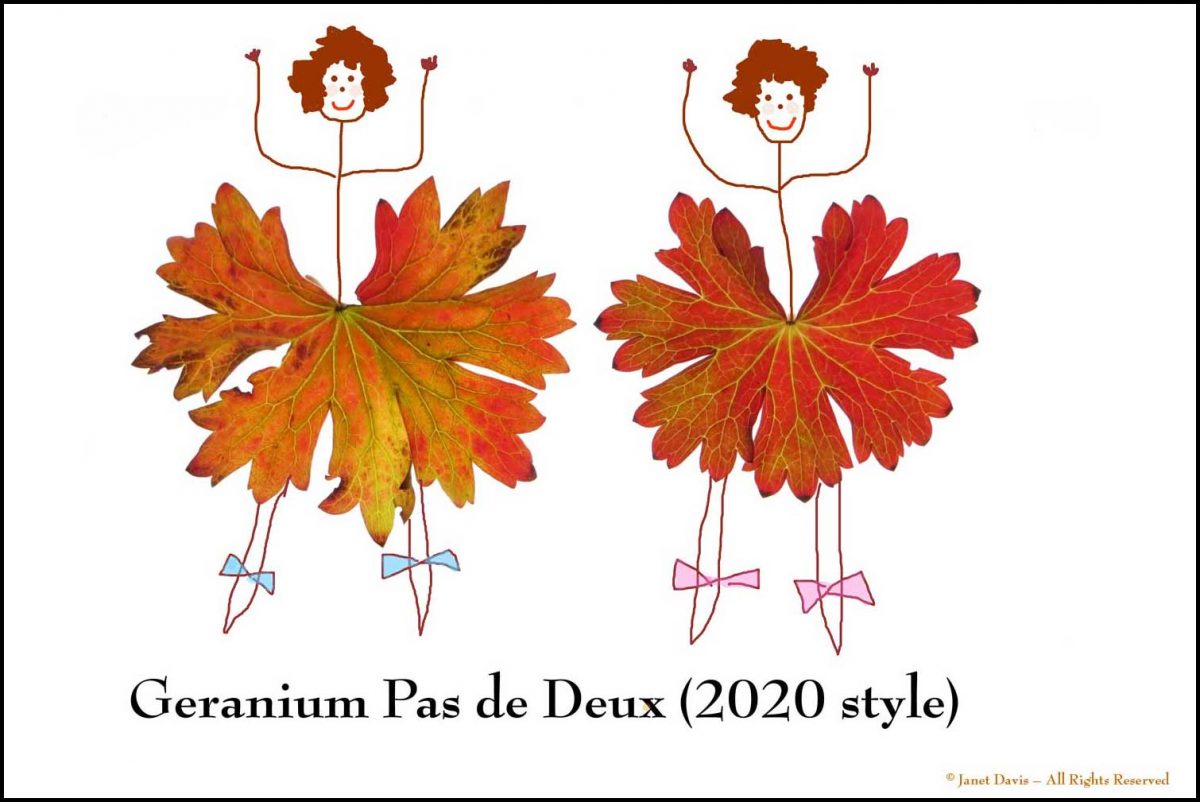
Look who sashayed in from my front garden hedge! Yes, Miss Burning Bush Belly Dancer herself, aka Euonymus alatus, jingling and jangling her beads. I reminded her that a lot of people wanted her gone, invasive exotic that she is. “Who cares,” she said, “These people are boring. I come from the Sultan’s palace wearing autumn red! I dance!” We left it there.
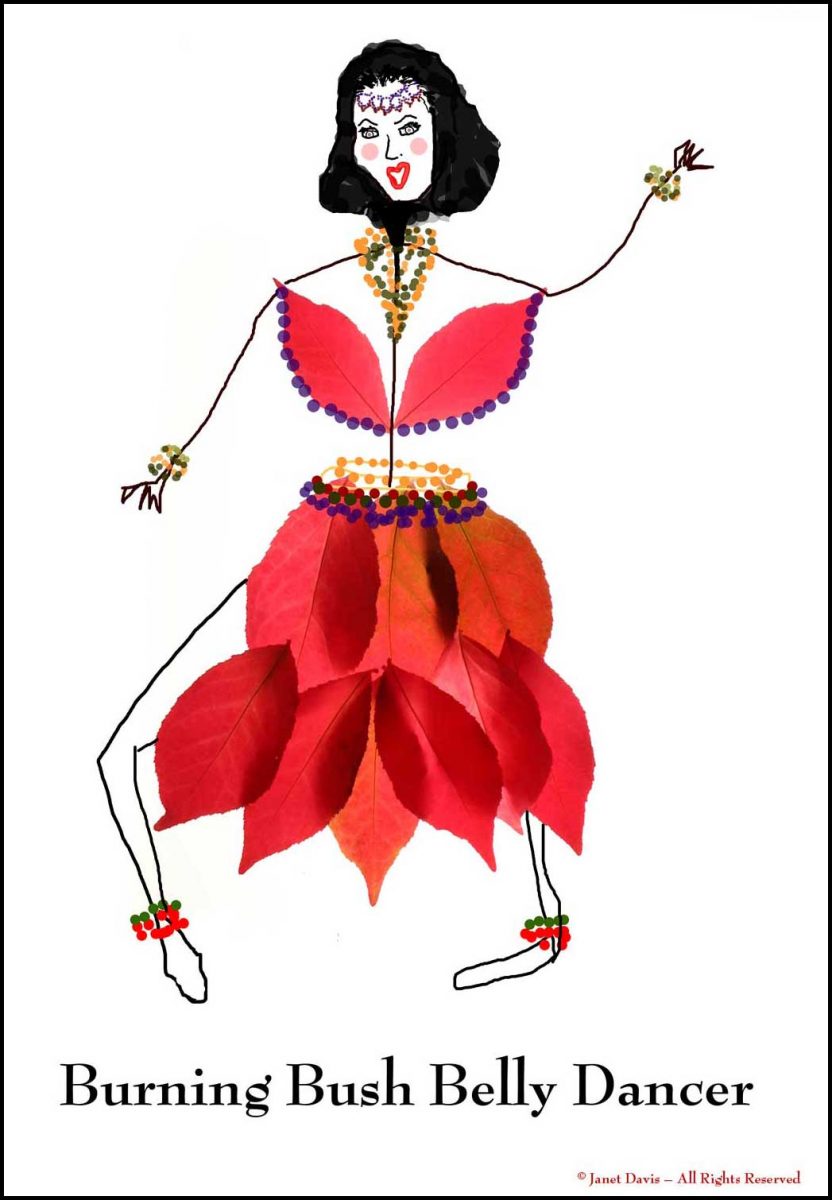
Things lightened up considerably when I heard the tip-tapping feet of The Chorus Line: the pinnate dancers of the Kentucky coffeetree (Gymnocladus dioicus). Aren’t they sweet? “One singular sensation, every little step she takes/One thrilling combination, every move that she makes…” Ah, dear Marvin Hamlisch.
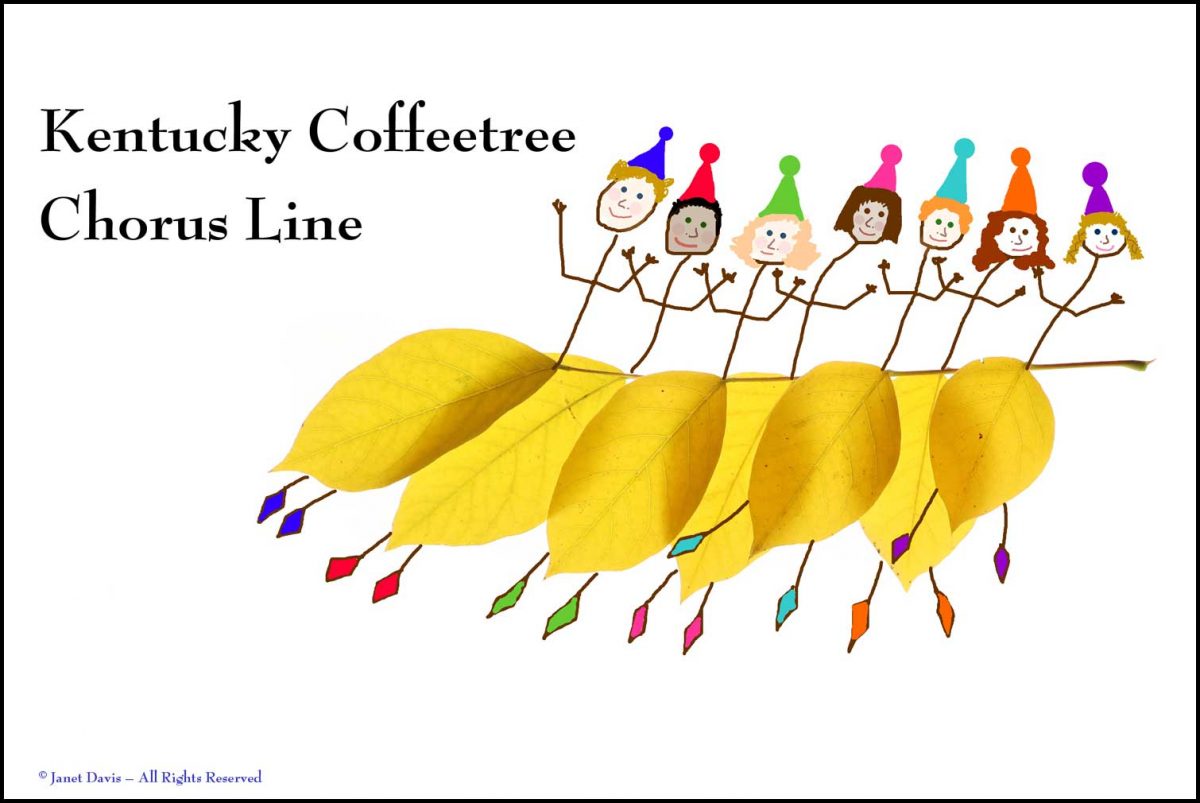
Then, before I could say, un, deux, trois, out came the Katsura Can-Can Dancers (Cercidiphyllum japonicum) trailing a whiff of cheap, burnt sugar eau de cologne. In between high kicks, they complained that they’d been gold the week before, but I was late picking them up and they’d already started to age a little. I assured them they were still très jolie.
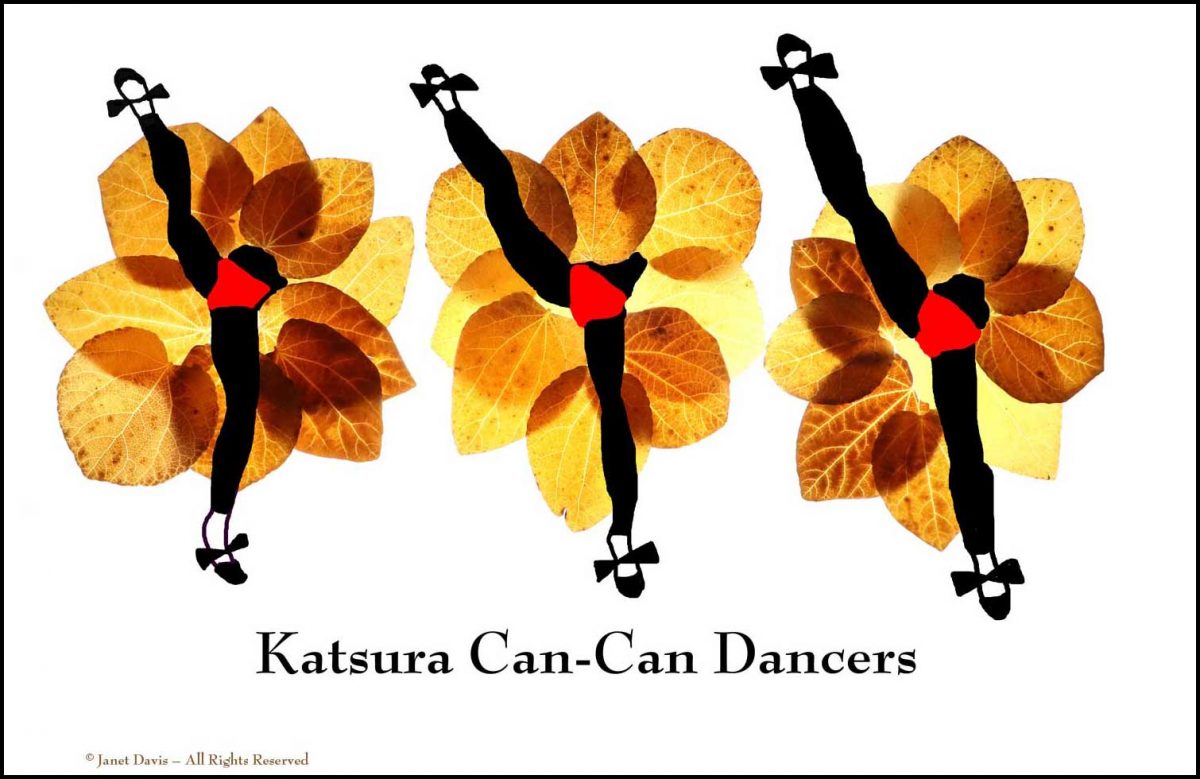
The can-can dancers had barely left the stage when I heard steel drums! Yes, it was the Liquidambar Limbo trio (Liquidambar styraciflua) chewing sweet gum, as they do, and showing how me just lowwww he can go.
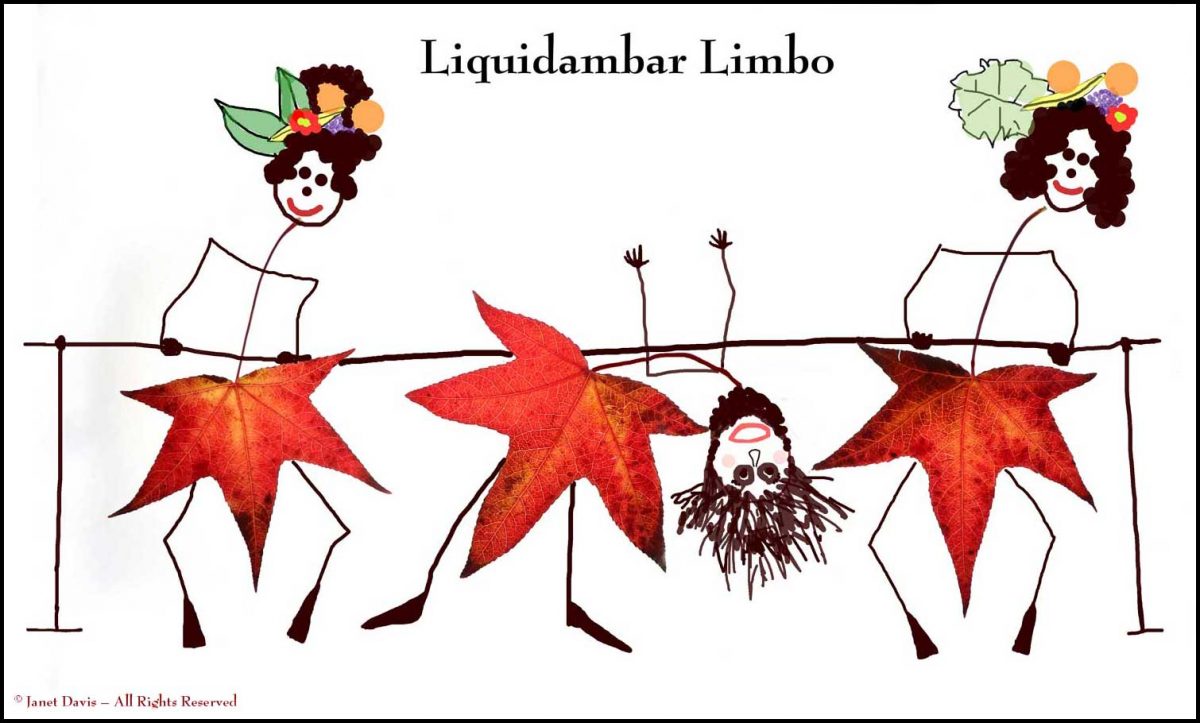
I told Cherry Charleston (Prunus serrulata ‘Kanzan’) there was no smoking indoors but she said, “Stop your gaping, I’m only vaping!” What could I do? I let her off with a warning.
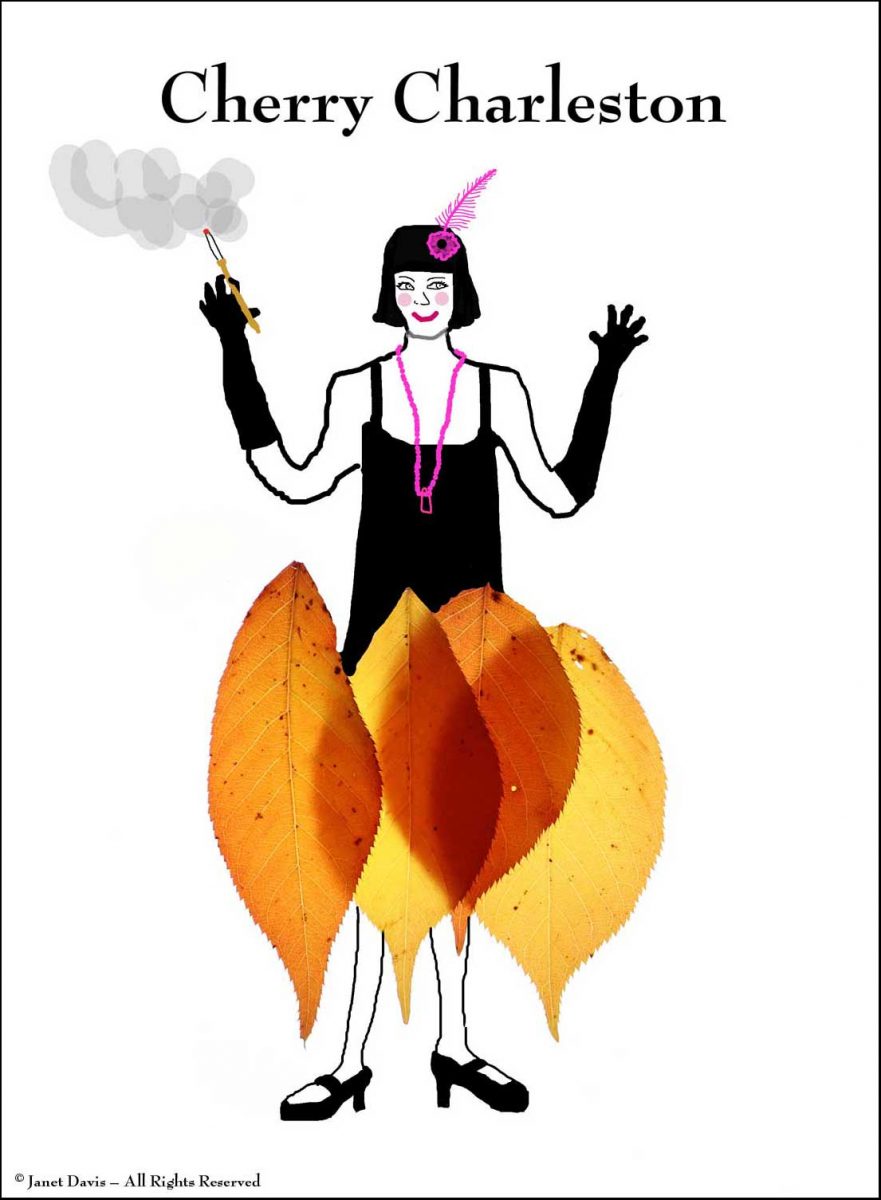
Oh my goodness. What a spectacle when the Ziegfeld’s Follies gal swanned out in her ridiculous costume. I mean, come on, I like Zelkova serrata too but couldn’t she have worn something a little less ostentatious?
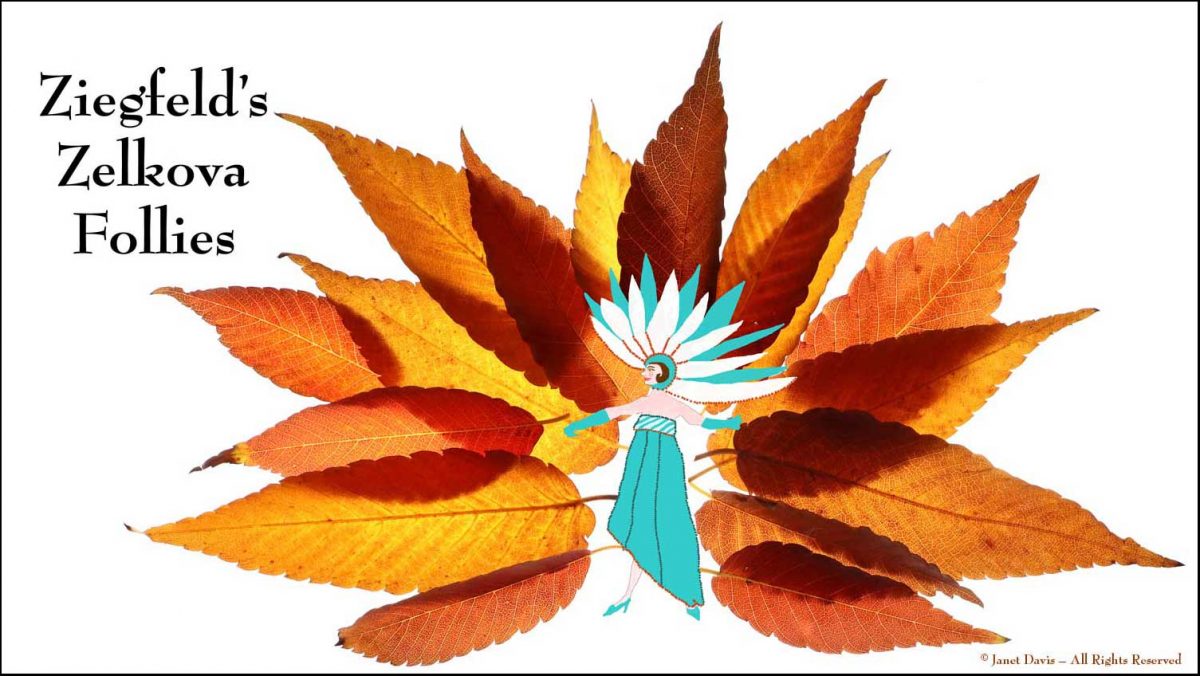
The Busby Birchley (Betula papyrifera) girls lay down on the stage to do their routine, even though the floor was still sticky from the limbo trio. So sweet, those little paper birch leaves when they spin around like a kaleidoscope.
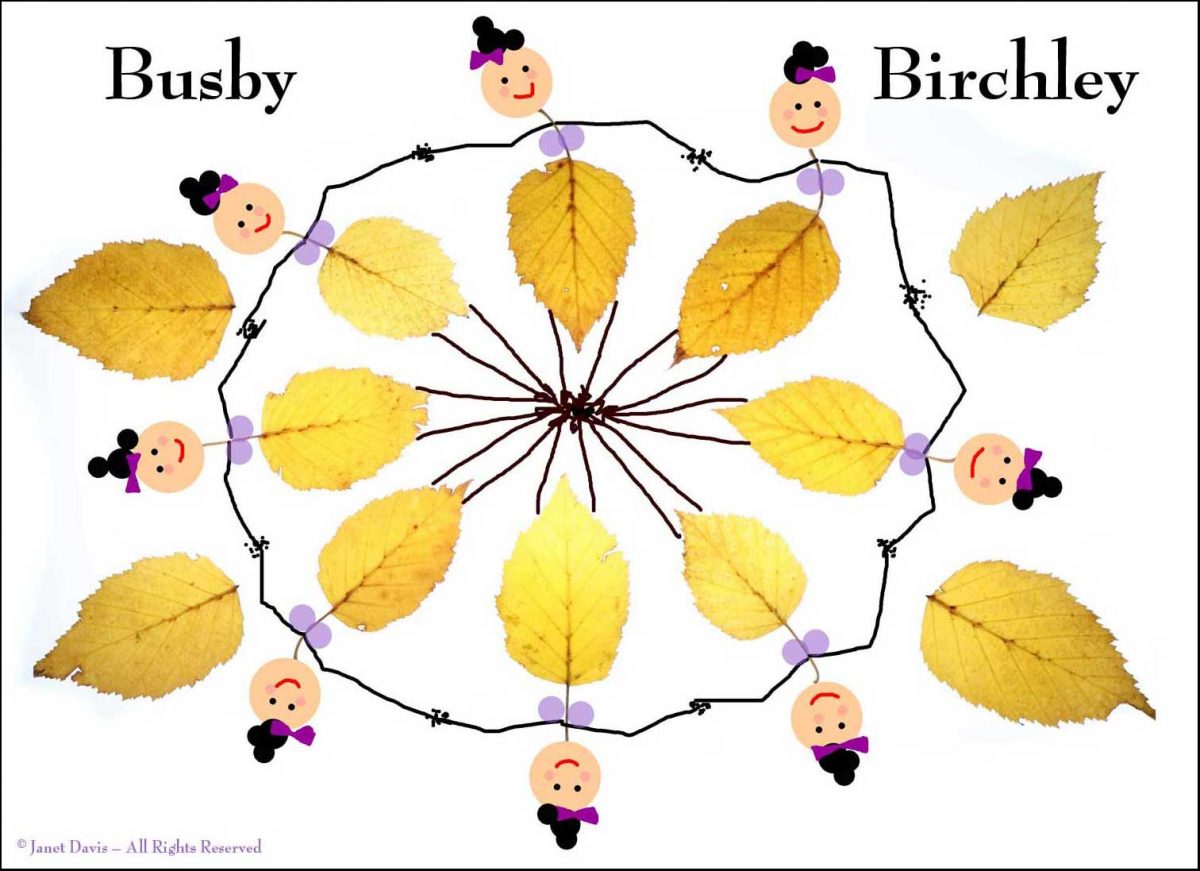
I was in Kyoto once, but it was springtime and the cherry blossoms were in bloom. Seeing this geisha walk under momiji, which is what the Japanese call their native maples (Acer palmatum), as it was turning colour on the first day of November kind of took my breath away. She declined to dance – “I only do that onstage in Gion with the other geishas.” Who could argue?
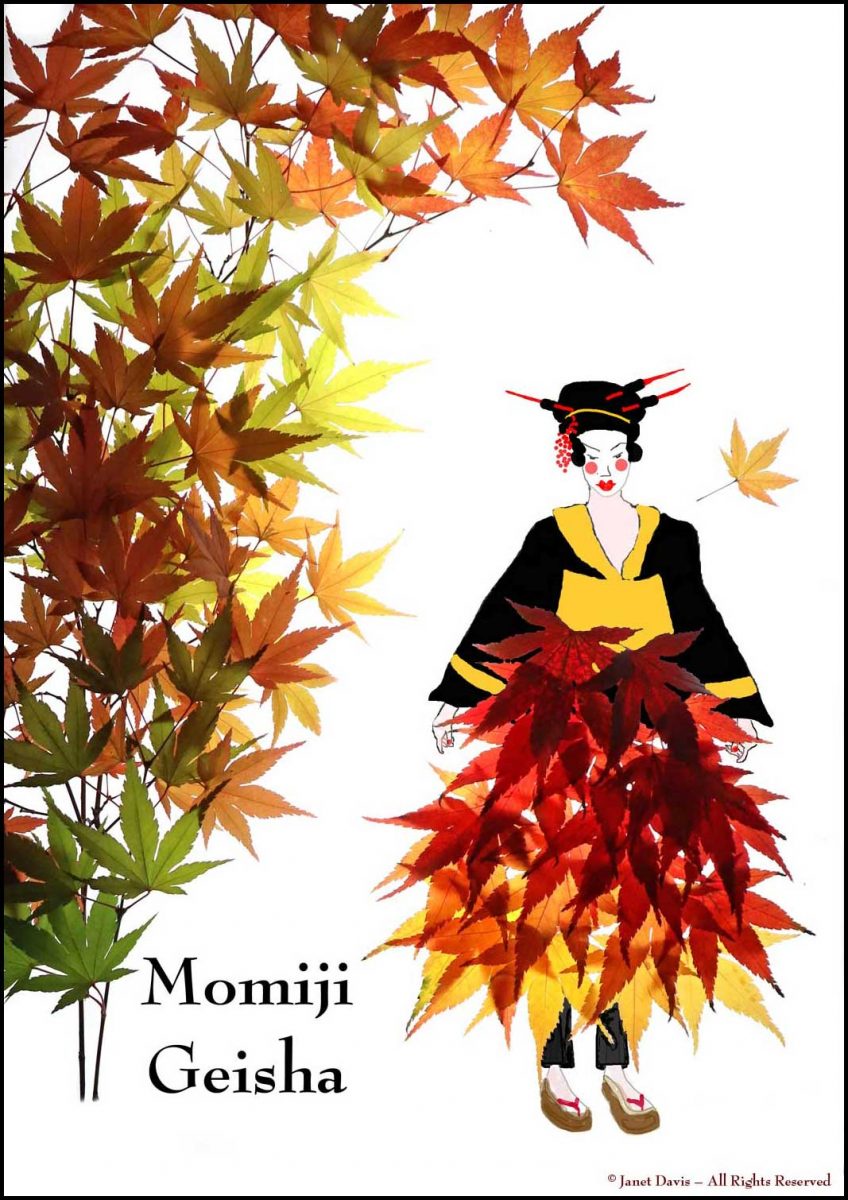
And then it was time for the last act: three little wild strawberry sock-hoppers (Fragaria virginiana) from my cottage on Lake Muskoka. I brought them down in the car in November and they were a little intimidated by the big city. “You’ll get used to it,” I said. “Just keep dancing.”

**********
My make-believe leaf dancers aside, I do love the season, almost as much as spring. I’ve given some thought to that and have come to the conclusion that when you live in a climate that gives you 5 months of winter, you learn to savour both the first stirrings of the growing season and also its last hurrah. For that reason, I’ve paid attention in my own garden not just to a two-month succession of spring-flowering bulbs, but to trees and shrubs that turn colour in fall. This is my front garden in October, with its Japanese maple and burning bush hedge.
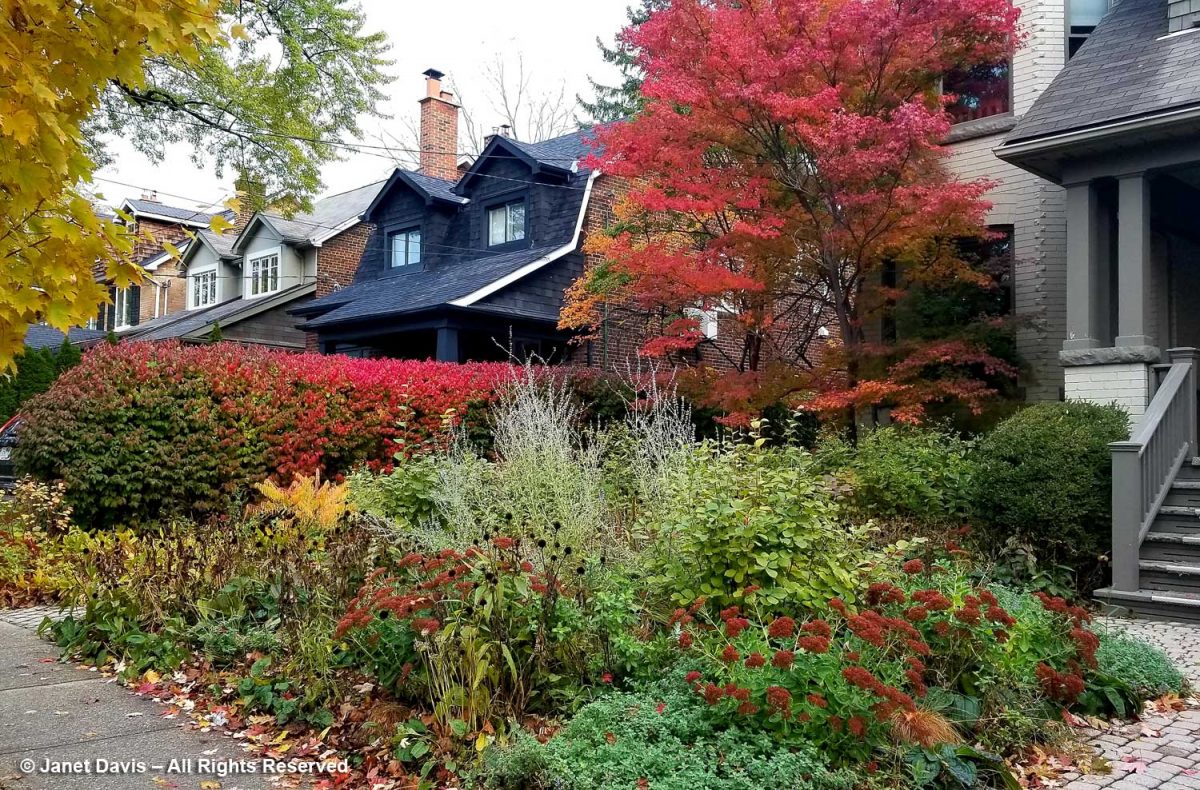
My little pollinator garden features fothergilla, which turns every shade from pale yellow to deepest wine – as you see with Señora Fothergilla, above.
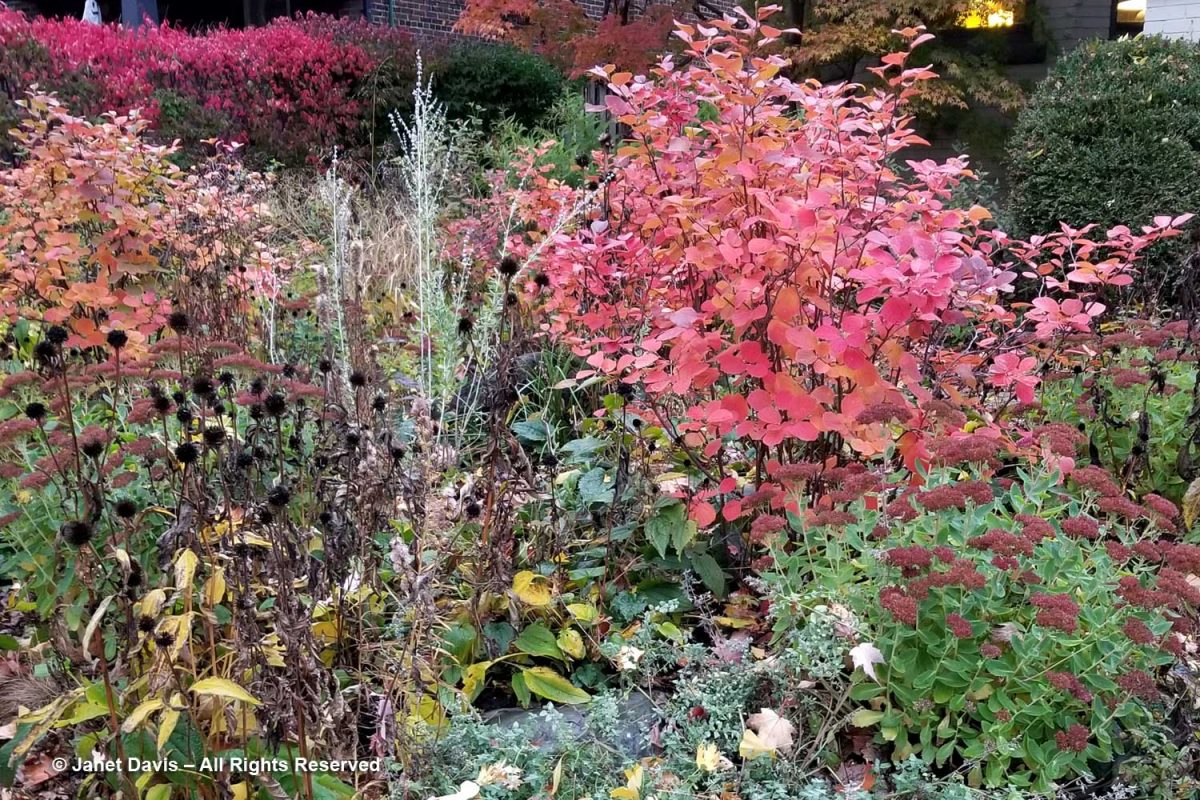
From my living room window, I can watch the colour change on the Japanese maple (Acer palmatum), which provided the backdrop for my geisha.

When the city asked me what trees I wanted to replace an aged silver maple that had to be removed from our boulevard, I asked for a red maple and a ginkgo (Ginkgo biloba), below, which turns bright yellow in autumn.
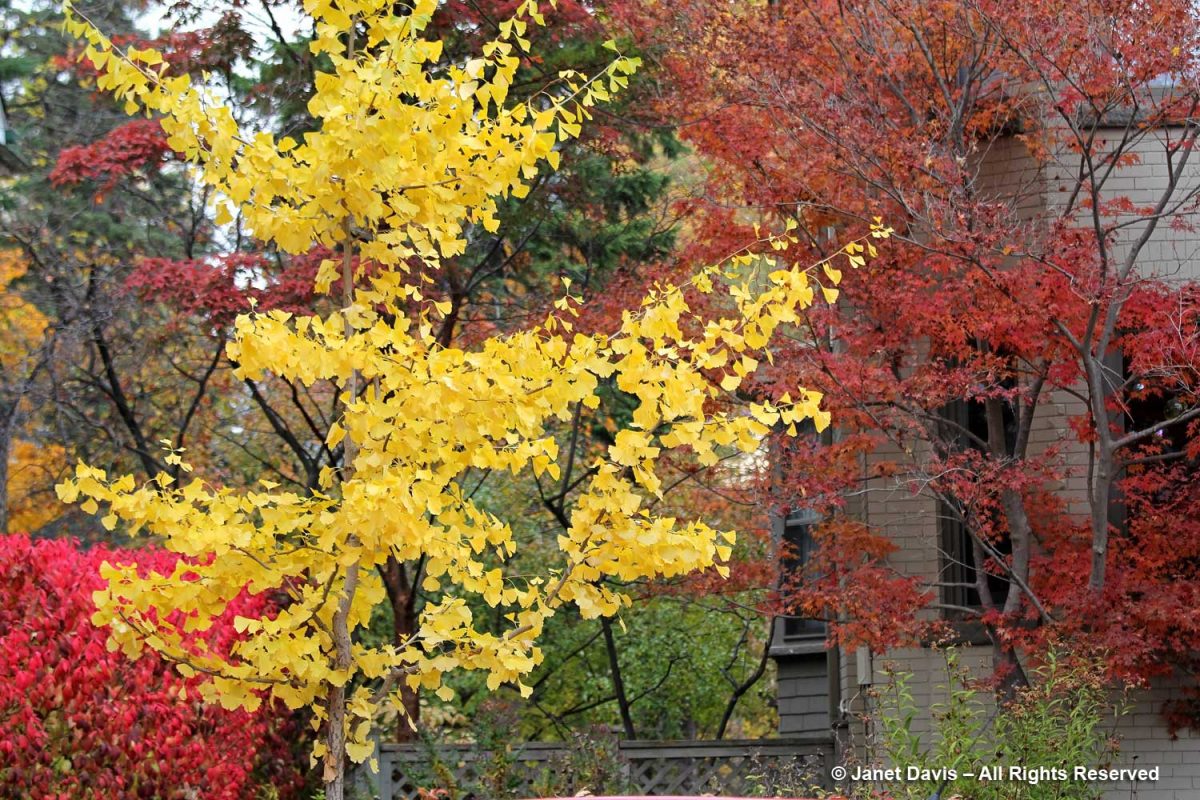
The gate leading from the driveway into my back garden has Boston ivy (Parthenocissus tricuspidata) climbing across it, which turns red in late October.
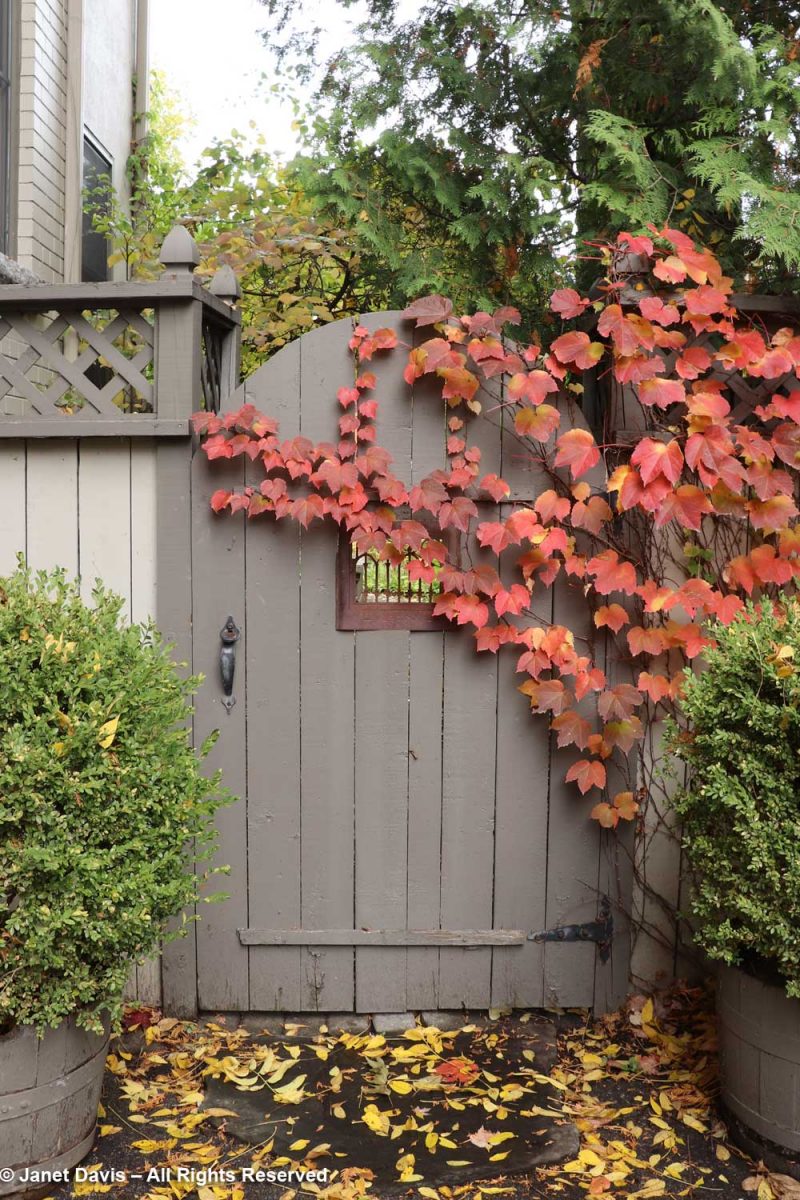
In my back garden, there are ornamental grasses and azure-blue autumn monkshood and spectacular apricot-orange Tiger Eyes sumac (Rhus typhina ‘Bailtiger’) and wine alternate-leaved dogwood (Cornus alternifolia).
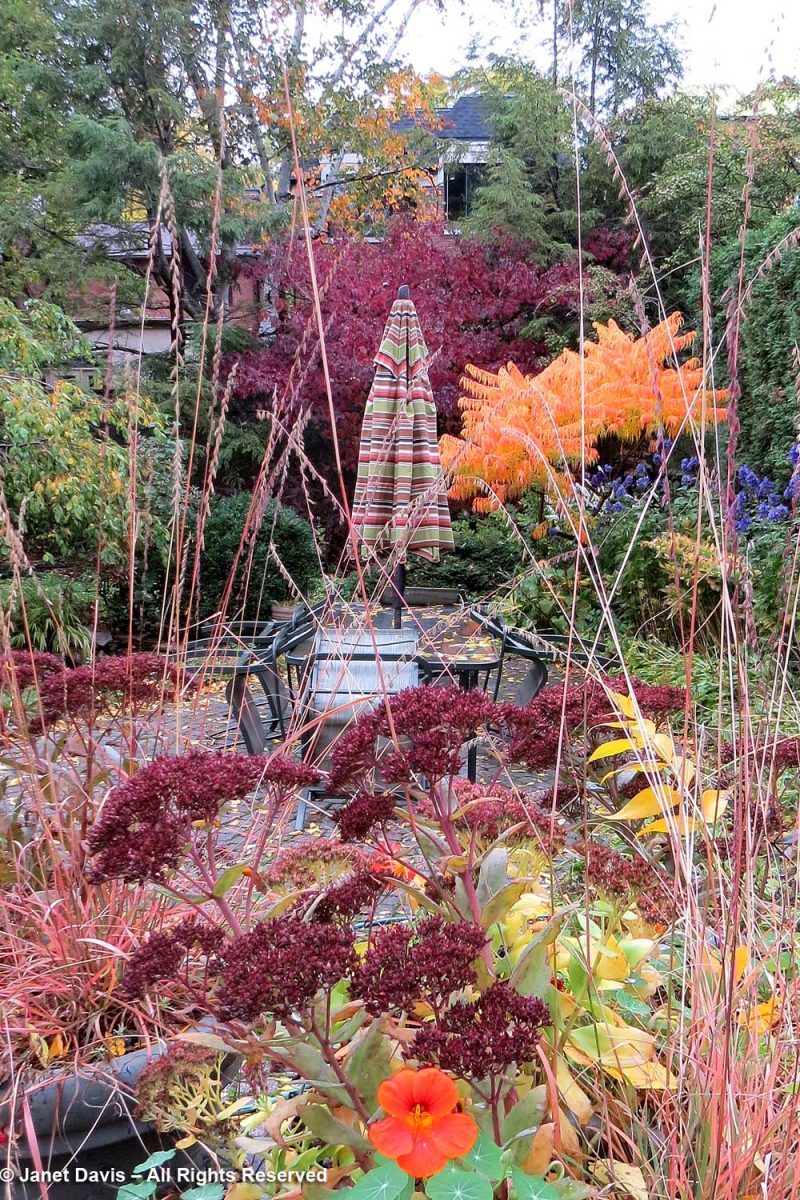
I love fall colour so much, I made a poster a decade ago featuring photos of the autumn leaves of 90 different trees and shrubs found in Mount Pleasant Cemetery, the 200-acre arboretum just a mile from my house. .
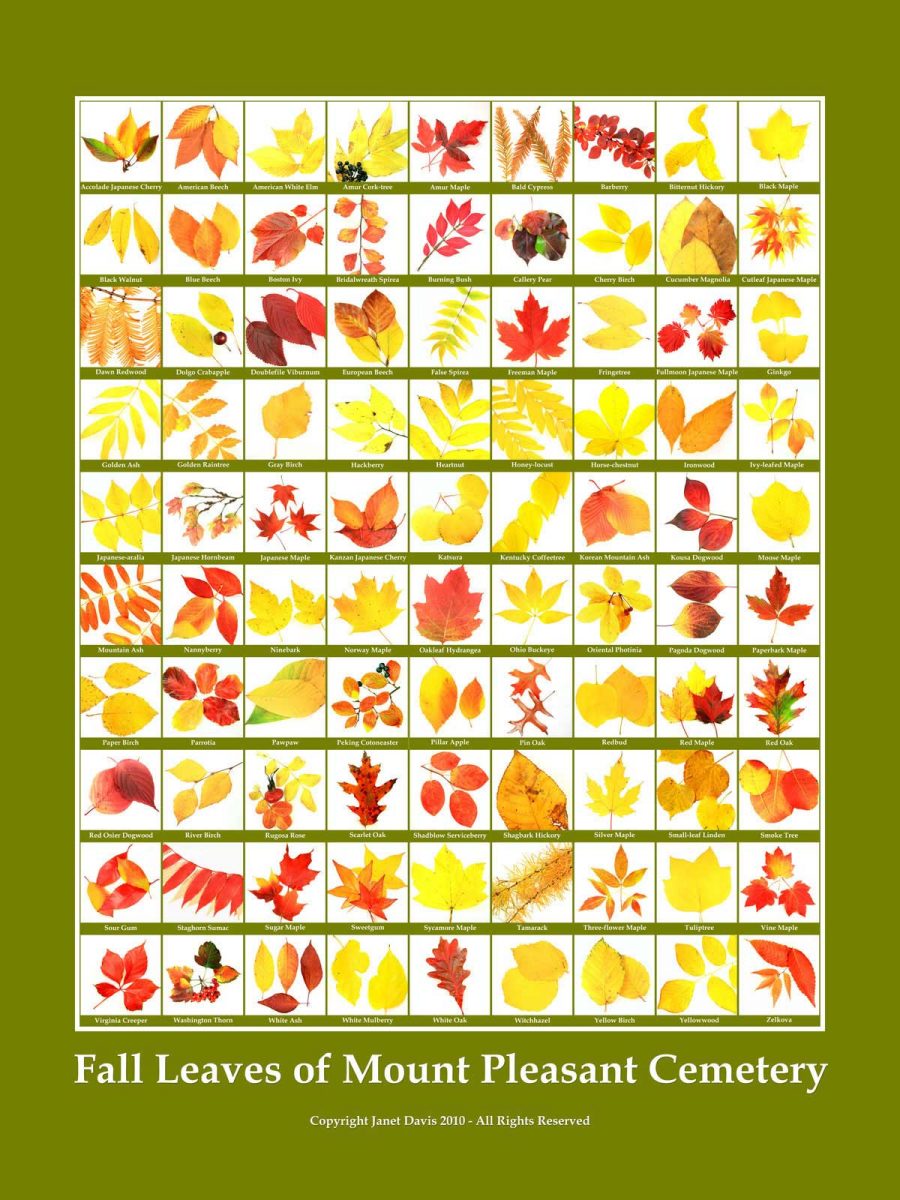
Speaking about the cemetery, I’ve written a blog about the spectacular display of fall colour there in October and November….
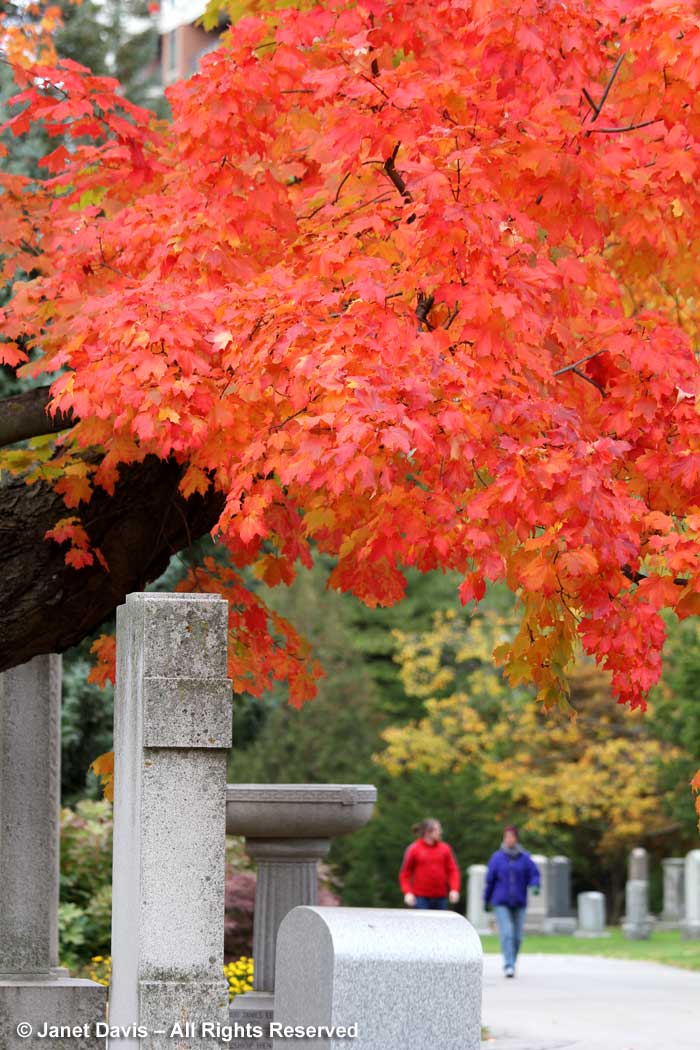
…. and more generally, I’ve done blogs on plants with red autumn leaves….
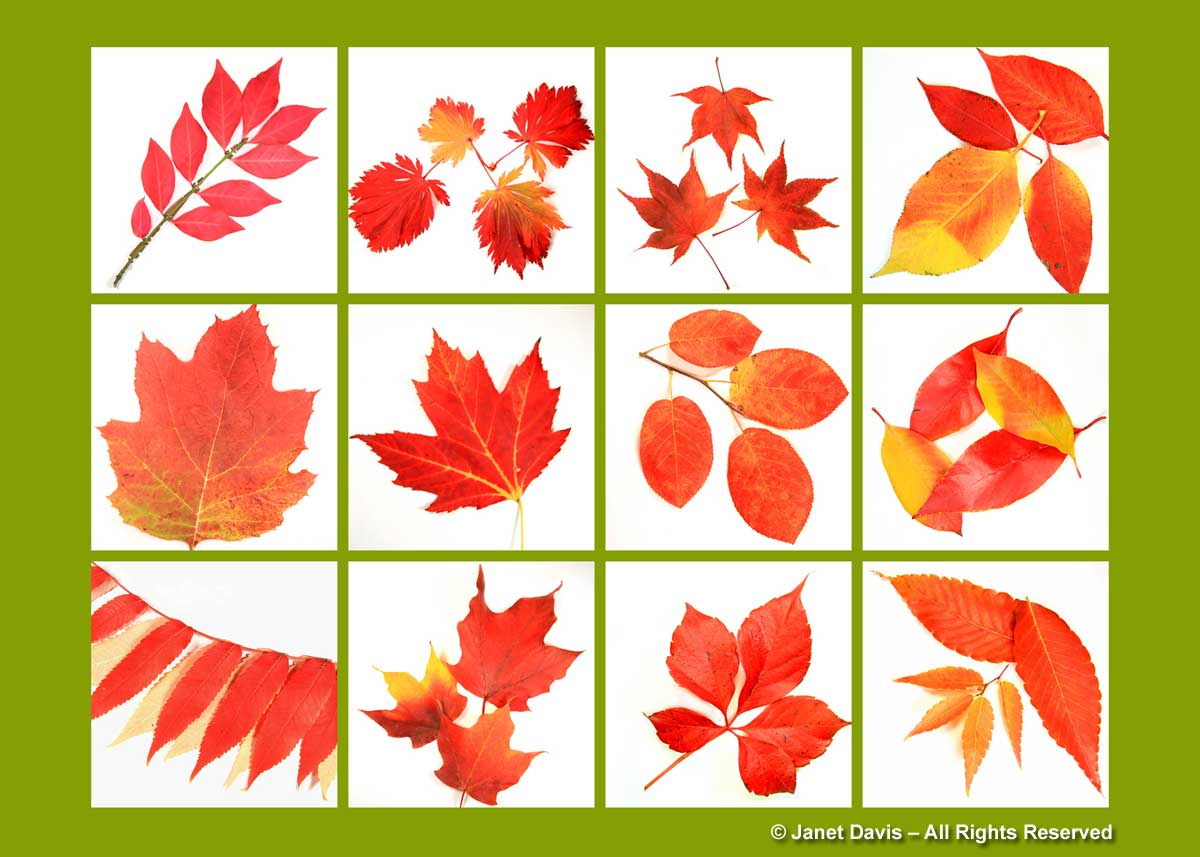
….and plants that turn orange and bronze in autumn.
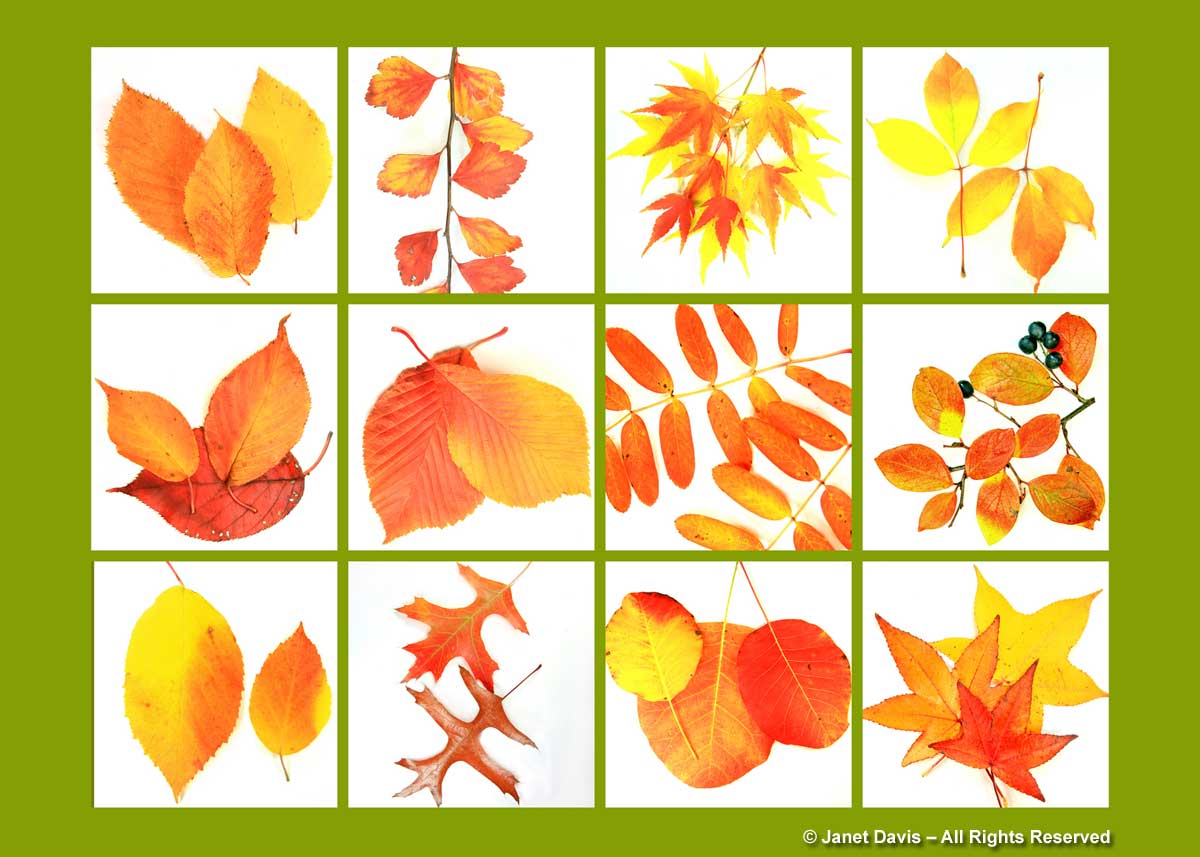
I love fall colour so much I went up in a small yellow plane with an open window….

…. to photograph the red and sugar maples in the forests near our cottage on Lake Muskoka! (Thanks Doug Clark)
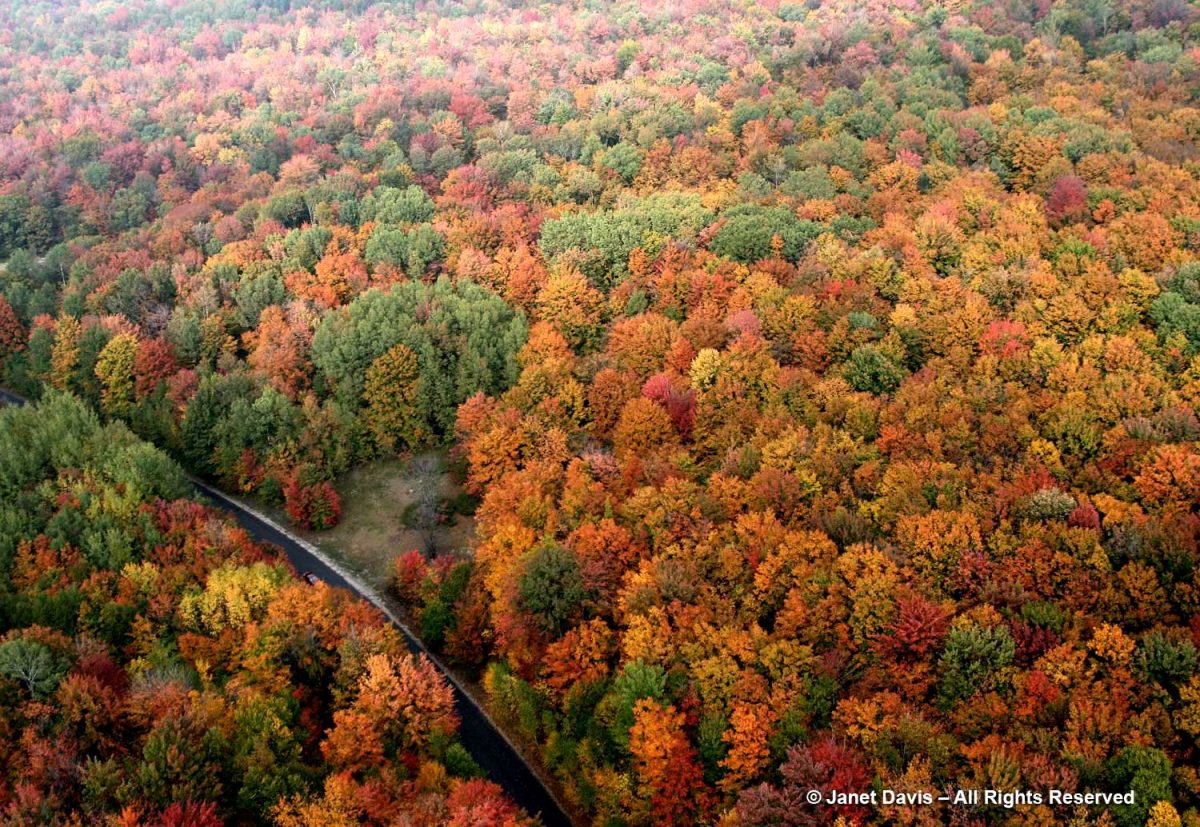
I love fall colour so much I had a 2018 photography show featuring my fine art photo canvases of brilliant autumn leaves….
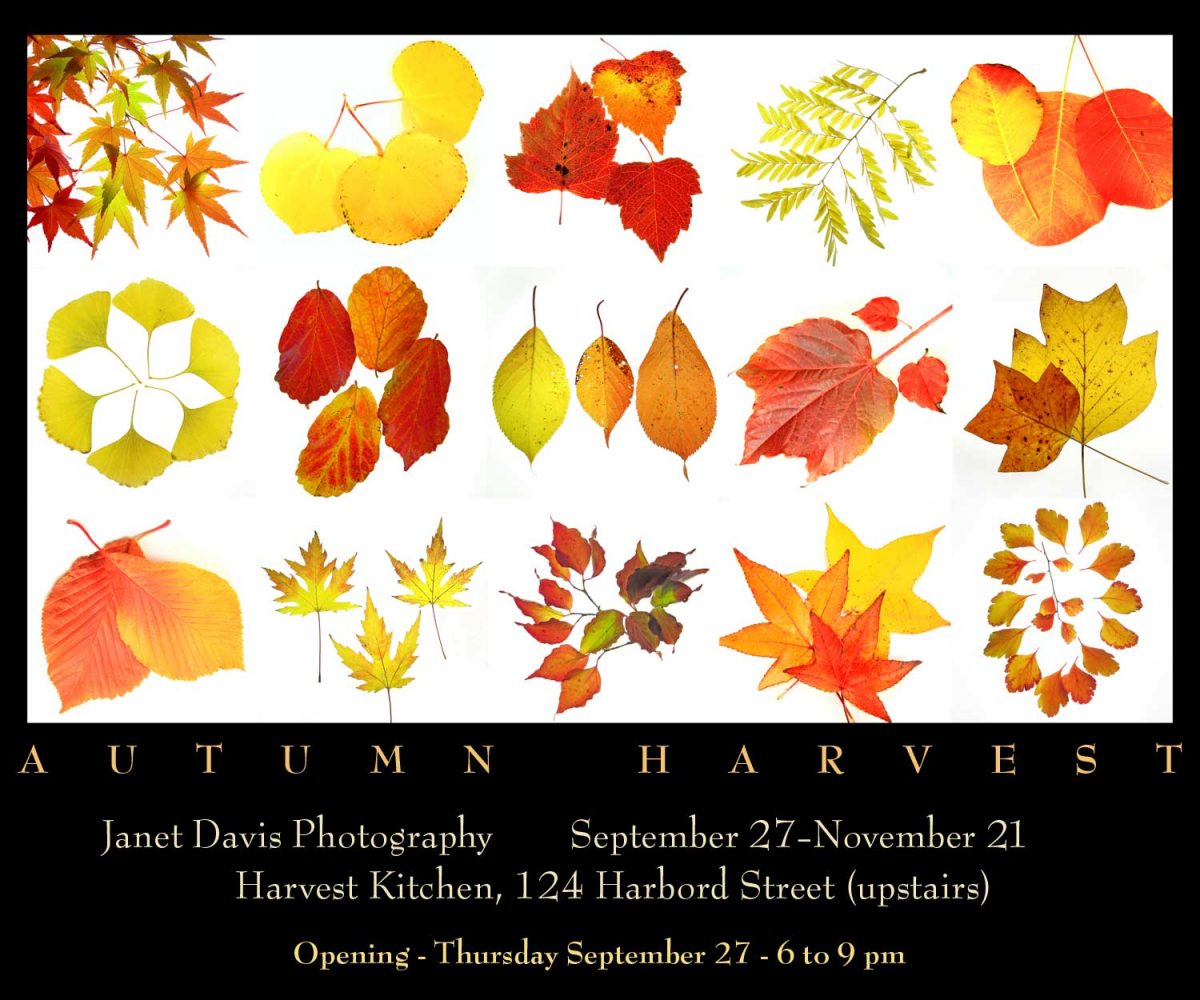
…. that I arranged like ephemeral tapestries…
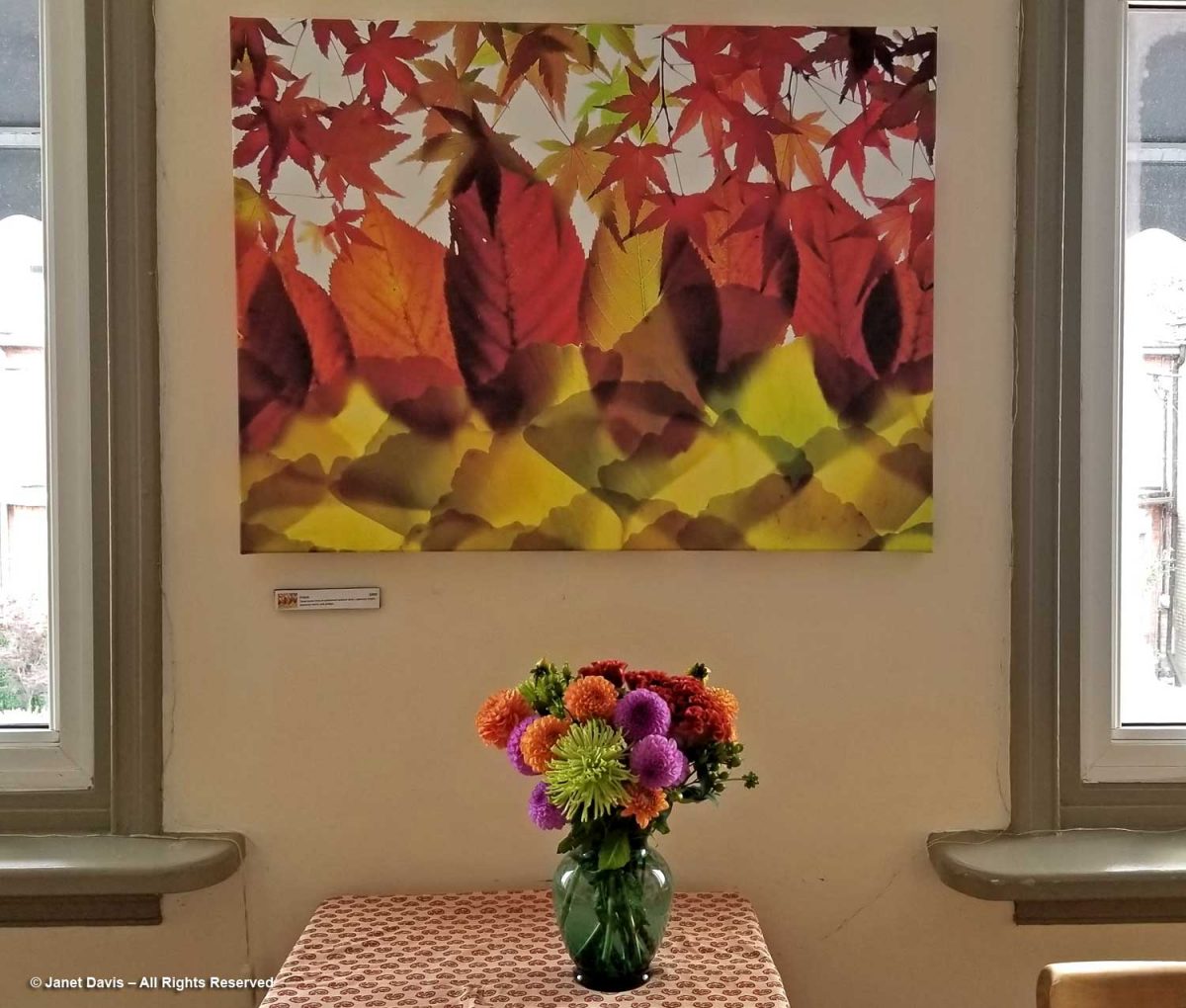
… and abstract still lifes.
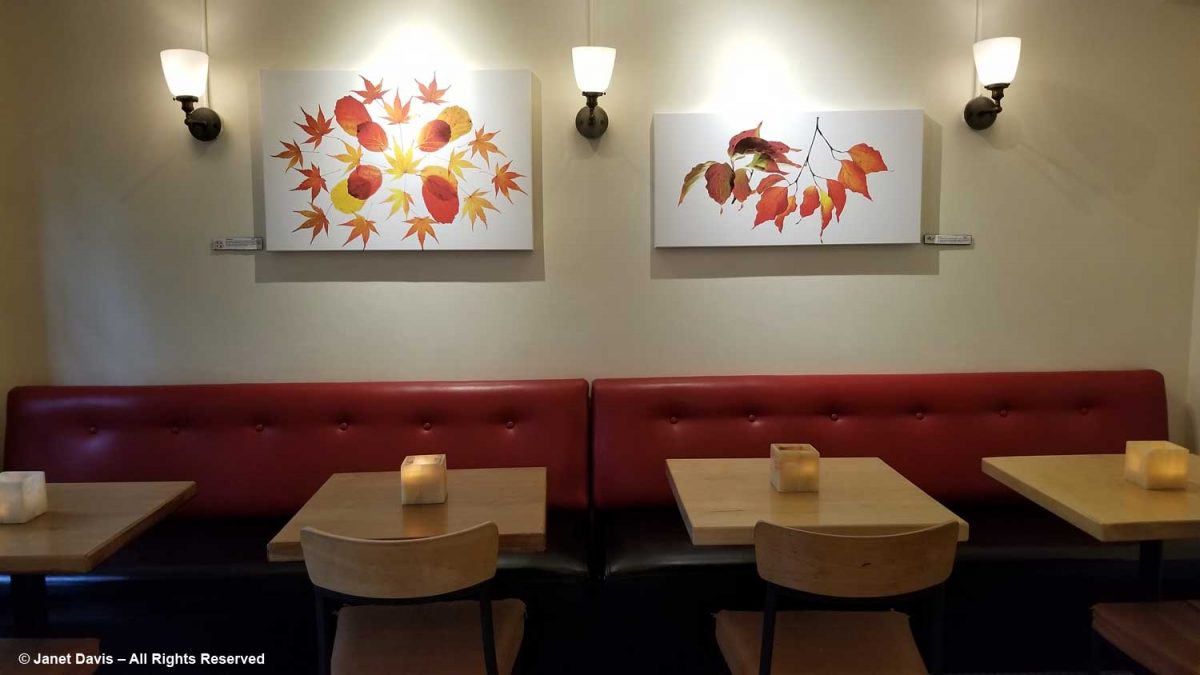
I love fall colour so much I gather handfuls of leaves each autumn to paint with light…
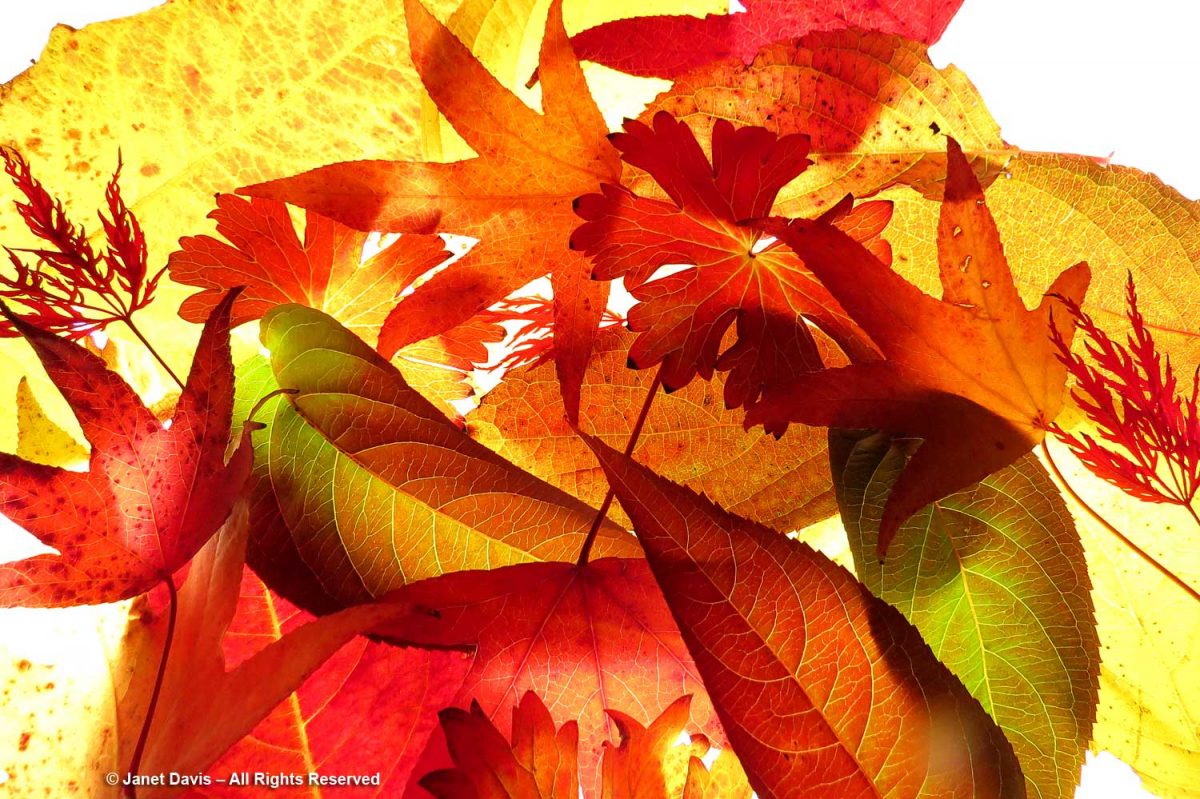
…. and arrange in geometric designs that please my eye….
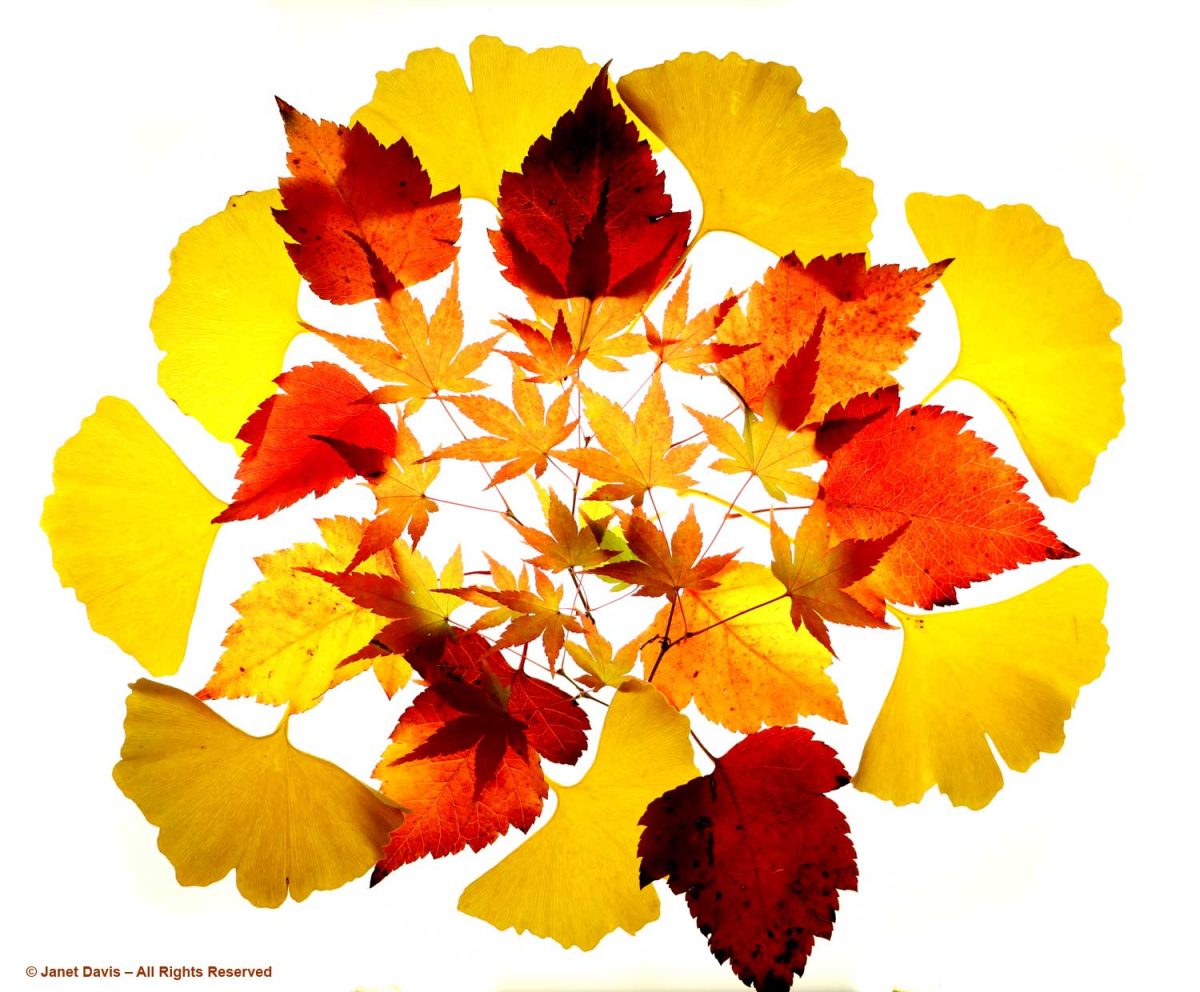
…. and simply celebrate in all their brilliant glory. For by the middle of November, the show is over, the leaves are beginning to decompose on the damp, cold ground and winter beckons with its icy breath.
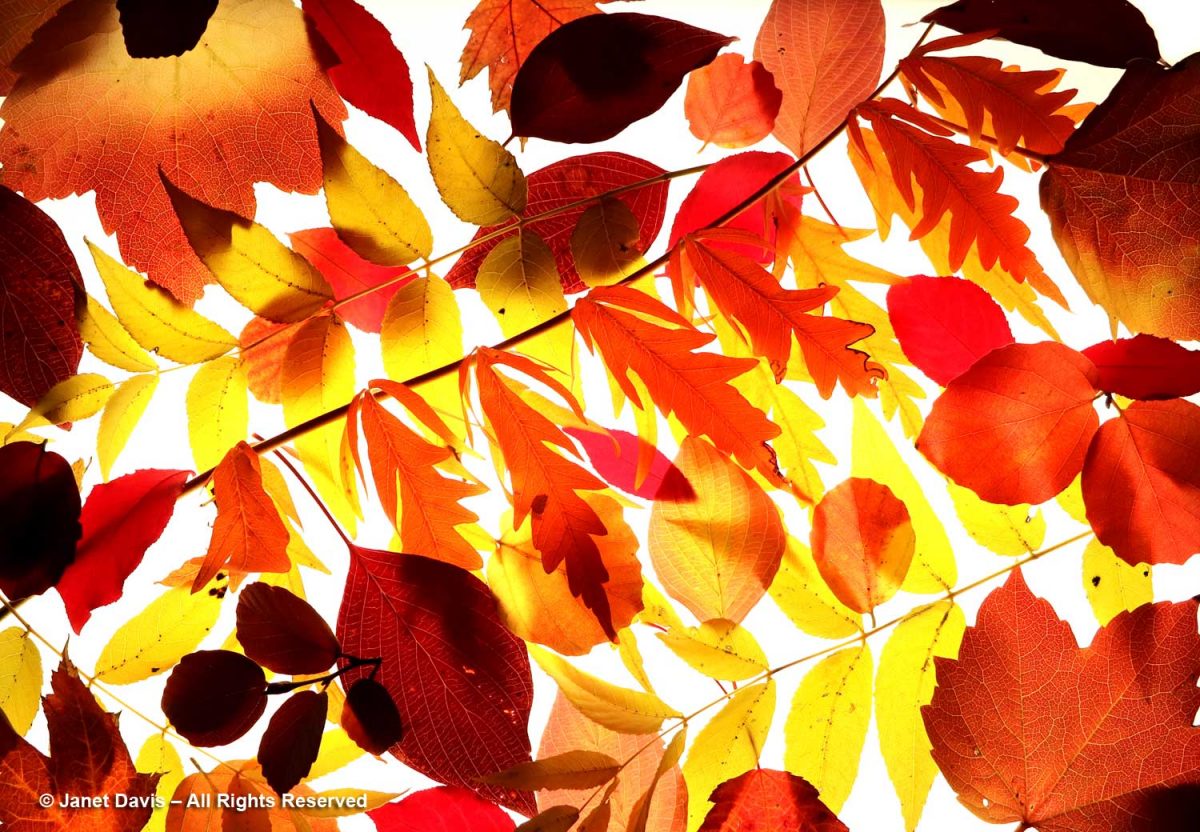
But while they’re around, we can all dance.

